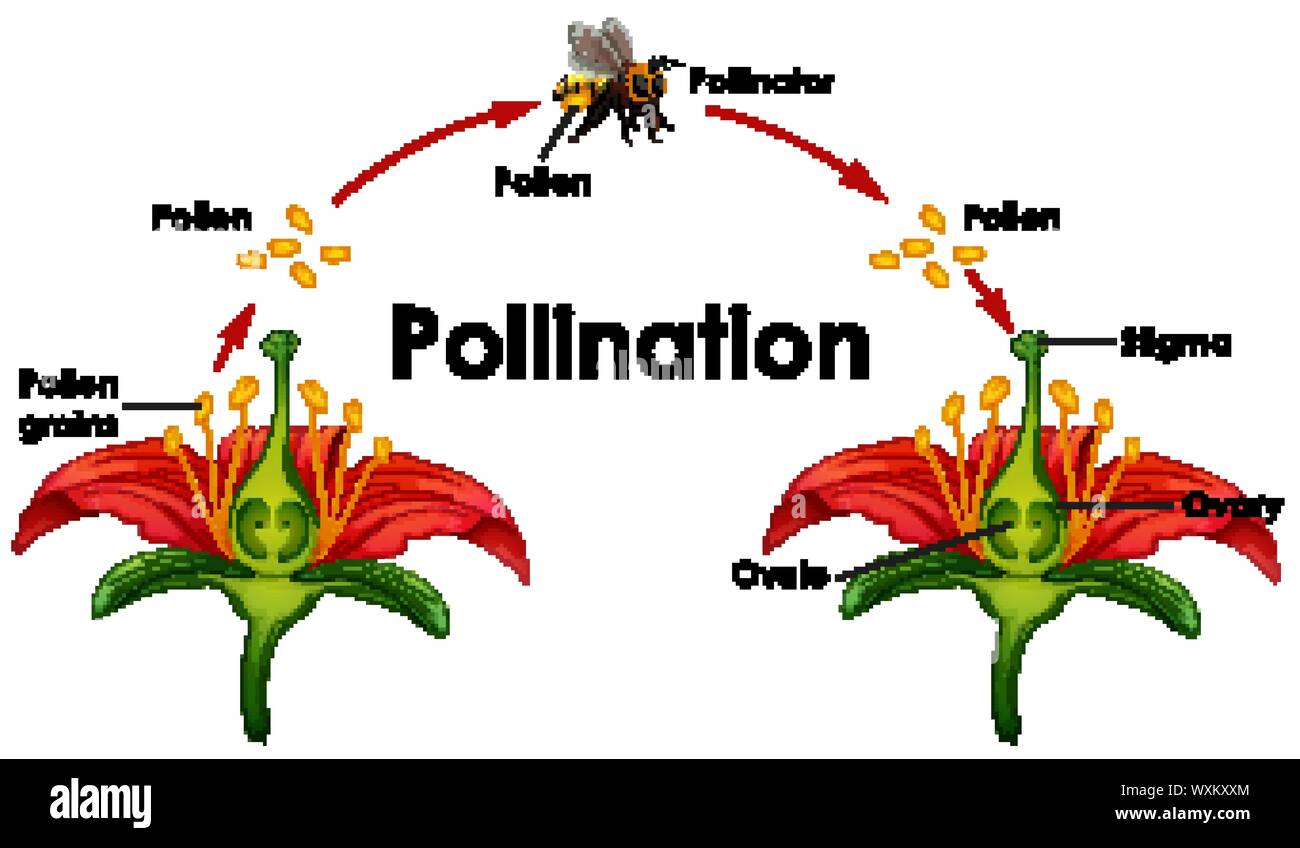Quick filters:
Pollination diagram Stock Photos and Images
 Diagram showing pollination with bee and flowers Stock Vectorhttps://www.alamy.com/image-license-details/?v=1https://www.alamy.com/diagram-showing-pollination-with-bee-and-flowers-image446021925.html
Diagram showing pollination with bee and flowers Stock Vectorhttps://www.alamy.com/image-license-details/?v=1https://www.alamy.com/diagram-showing-pollination-with-bee-and-flowers-image446021925.htmlRF2GWJ1ED–Diagram showing pollination with bee and flowers
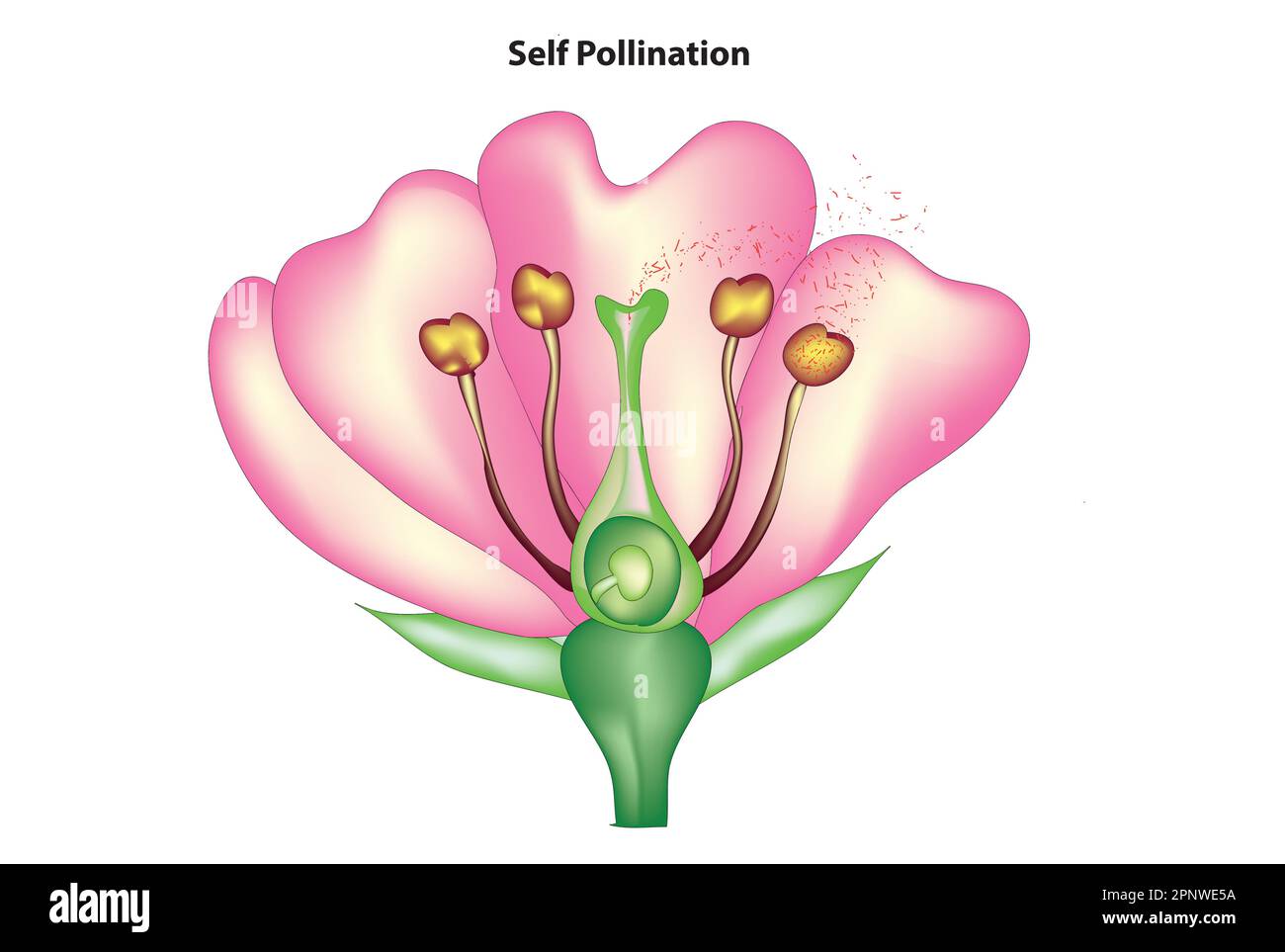 self pollination diagram Stock Vectorhttps://www.alamy.com/image-license-details/?v=1https://www.alamy.com/self-pollination-diagram-image546989110.html
self pollination diagram Stock Vectorhttps://www.alamy.com/image-license-details/?v=1https://www.alamy.com/self-pollination-diagram-image546989110.htmlRF2PNWE5A–self pollination diagram
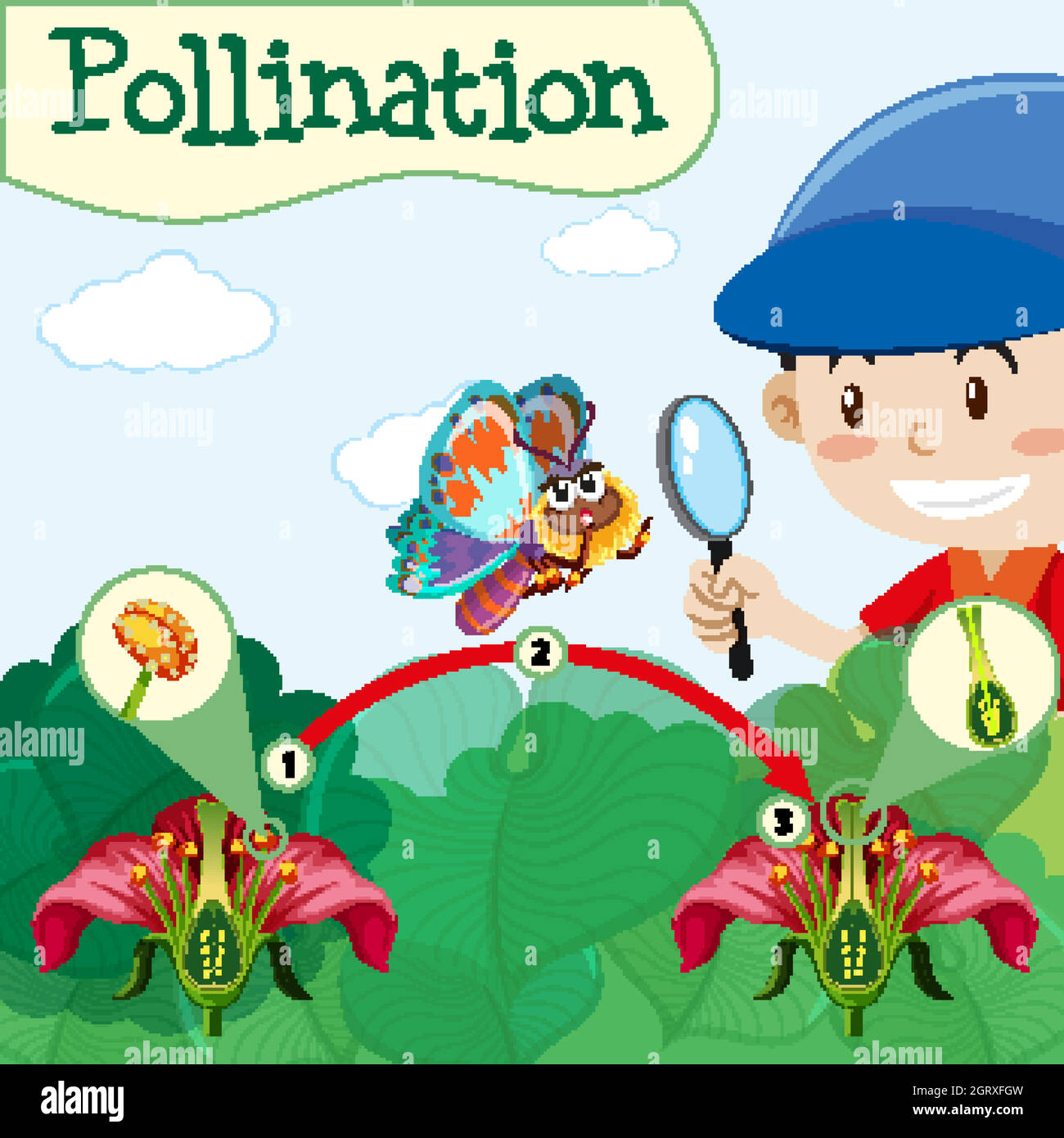 Pollination diagram with boy and flower Stock Vectorhttps://www.alamy.com/image-license-details/?v=1https://www.alamy.com/pollination-diagram-with-boy-and-flower-image444979273.html
Pollination diagram with boy and flower Stock Vectorhttps://www.alamy.com/image-license-details/?v=1https://www.alamy.com/pollination-diagram-with-boy-and-flower-image444979273.htmlRF2GRXFGW–Pollination diagram with boy and flower
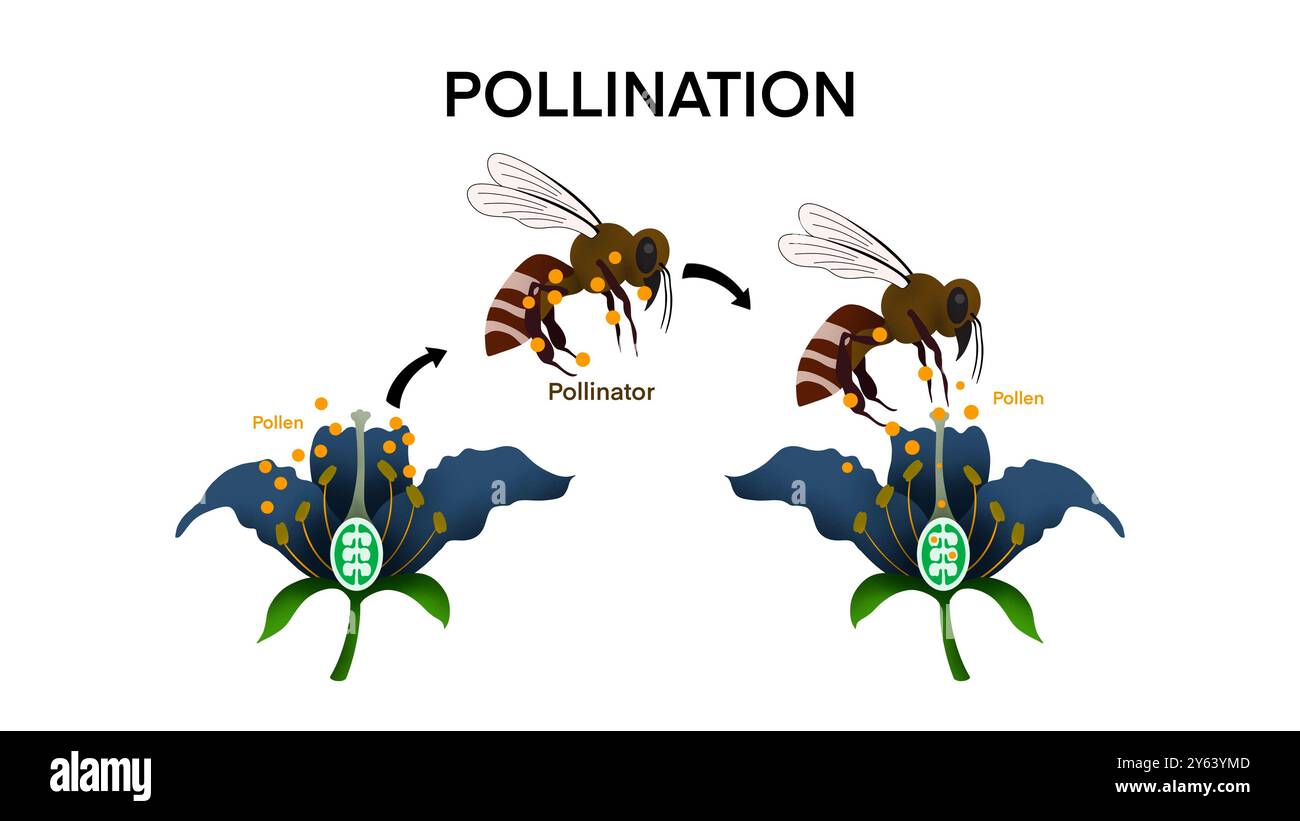 Pollination, Diagram showing pollination with flower and bee, process of cross pollination using an animal of pollinator, Pollination as plant Stock Photohttps://www.alamy.com/image-license-details/?v=1https://www.alamy.com/pollination-diagram-showing-pollination-with-flower-and-bee-process-of-cross-pollination-using-an-animal-of-pollinator-pollination-as-plant-image623348781.html
Pollination, Diagram showing pollination with flower and bee, process of cross pollination using an animal of pollinator, Pollination as plant Stock Photohttps://www.alamy.com/image-license-details/?v=1https://www.alamy.com/pollination-diagram-showing-pollination-with-flower-and-bee-process-of-cross-pollination-using-an-animal-of-pollinator-pollination-as-plant-image623348781.htmlRF2Y63YMD–Pollination, Diagram showing pollination with flower and bee, process of cross pollination using an animal of pollinator, Pollination as plant
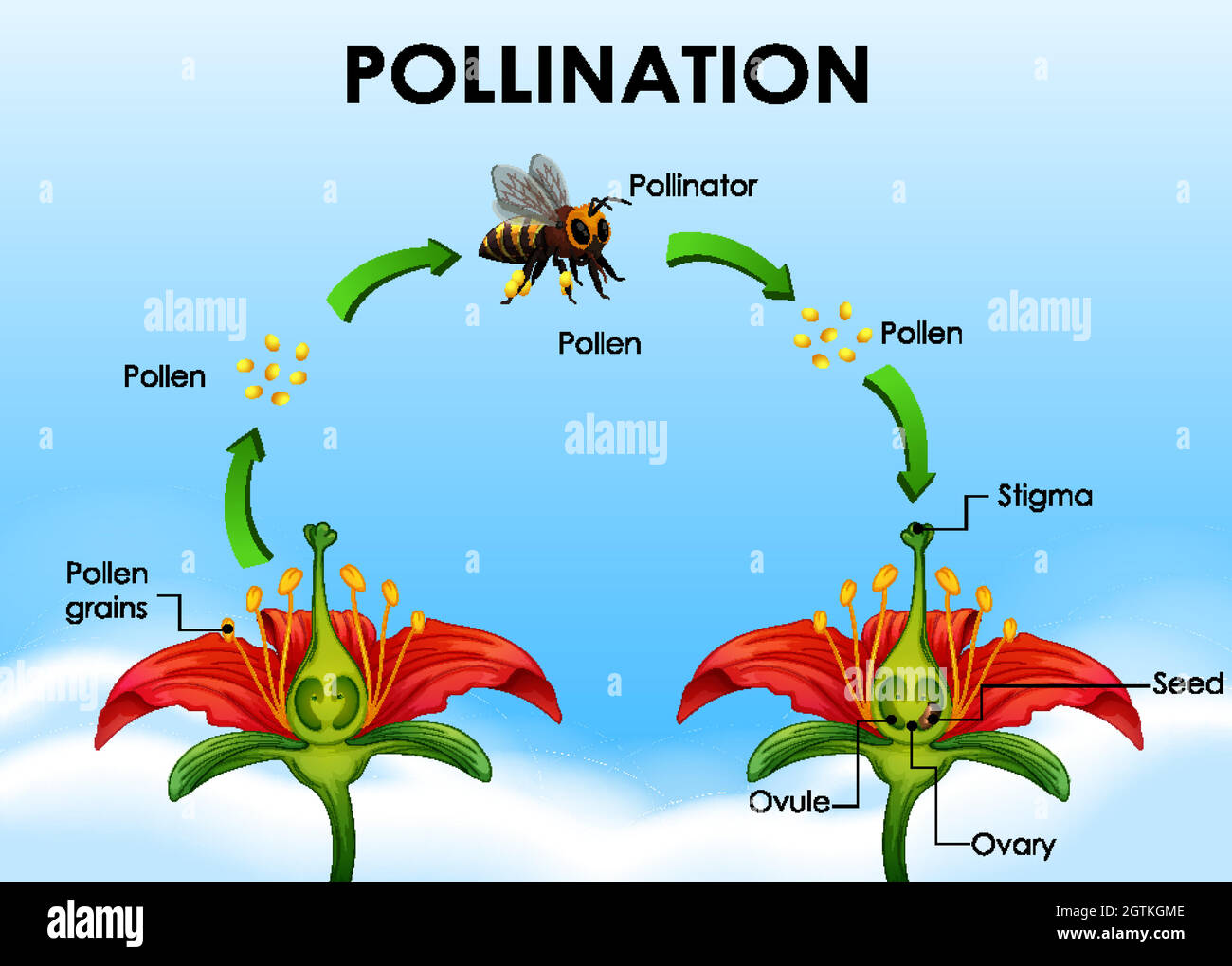 Diagram showing pollination cycle Stock Vectorhttps://www.alamy.com/image-license-details/?v=1https://www.alamy.com/diagram-showing-pollination-cycle-image445441150.html
Diagram showing pollination cycle Stock Vectorhttps://www.alamy.com/image-license-details/?v=1https://www.alamy.com/diagram-showing-pollination-cycle-image445441150.htmlRF2GTKGME–Diagram showing pollination cycle
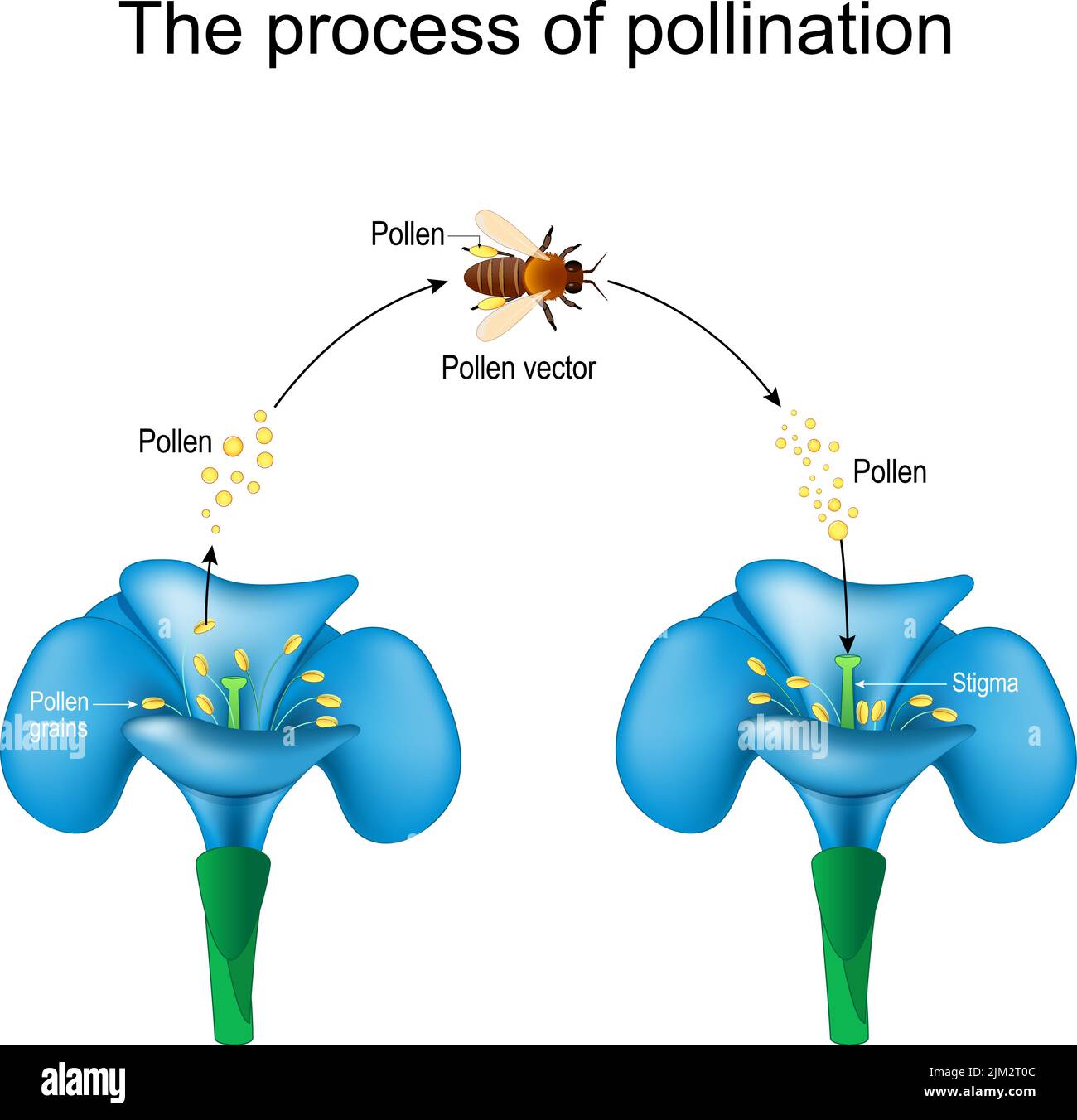 pollination. Honey bee is an animal of pollinator, flower, and pollen. Detailed Diagram. Reproduction in Plants. Vector poster for study botany Stock Vectorhttps://www.alamy.com/image-license-details/?v=1https://www.alamy.com/pollination-honey-bee-is-an-animal-of-pollinator-flower-and-pollen-detailed-diagram-reproduction-in-plants-vector-poster-for-study-botany-image477035788.html
pollination. Honey bee is an animal of pollinator, flower, and pollen. Detailed Diagram. Reproduction in Plants. Vector poster for study botany Stock Vectorhttps://www.alamy.com/image-license-details/?v=1https://www.alamy.com/pollination-honey-bee-is-an-animal-of-pollinator-flower-and-pollen-detailed-diagram-reproduction-in-plants-vector-poster-for-study-botany-image477035788.htmlRF2JM2T0C–pollination. Honey bee is an animal of pollinator, flower, and pollen. Detailed Diagram. Reproduction in Plants. Vector poster for study botany
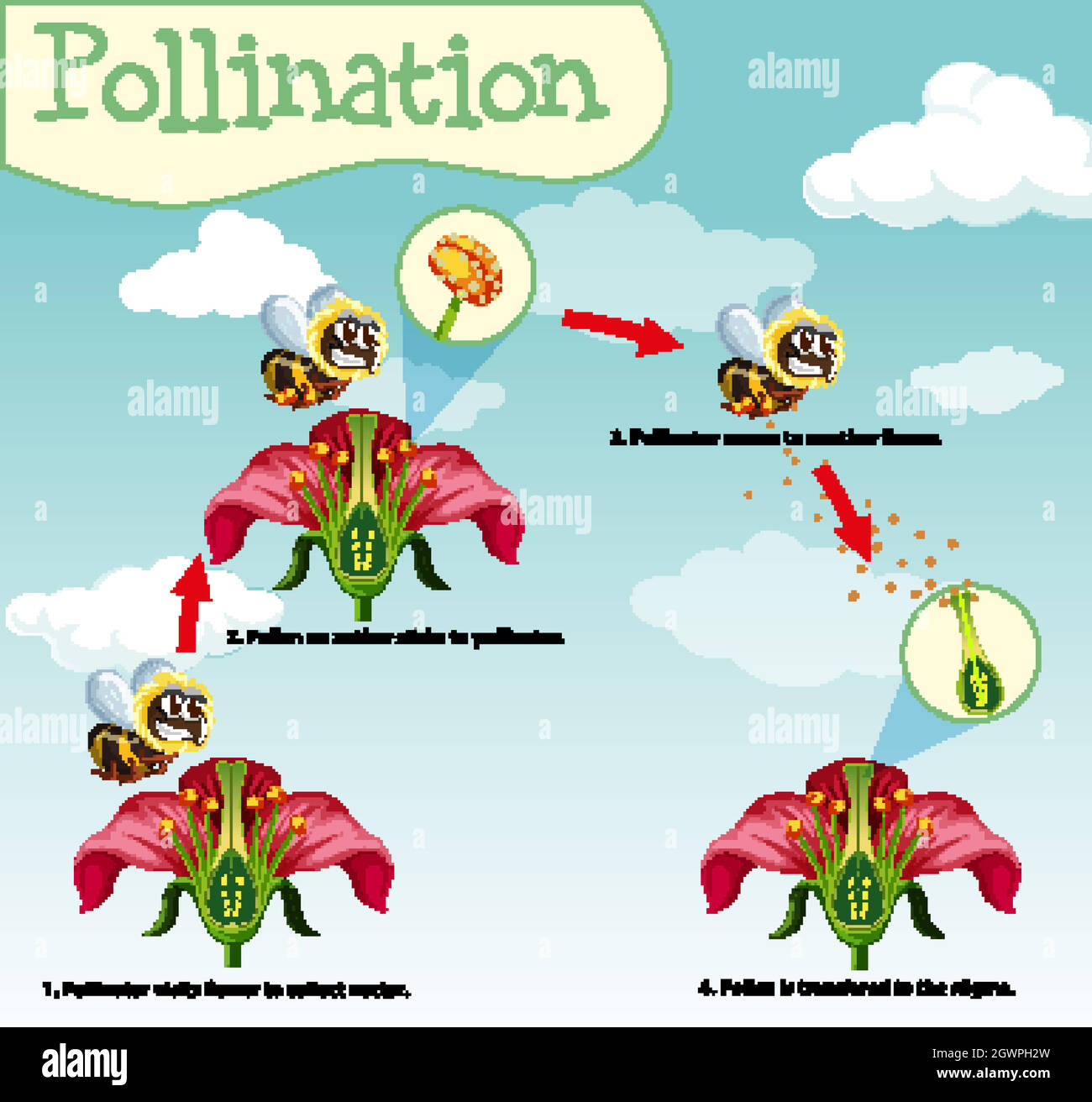 Diagram showing pollination with bee and flowers Stock Vectorhttps://www.alamy.com/image-license-details/?v=1https://www.alamy.com/diagram-showing-pollination-with-bee-and-flowers-image446121953.html
Diagram showing pollination with bee and flowers Stock Vectorhttps://www.alamy.com/image-license-details/?v=1https://www.alamy.com/diagram-showing-pollination-with-bee-and-flowers-image446121953.htmlRF2GWPH2W–Diagram showing pollination with bee and flowers
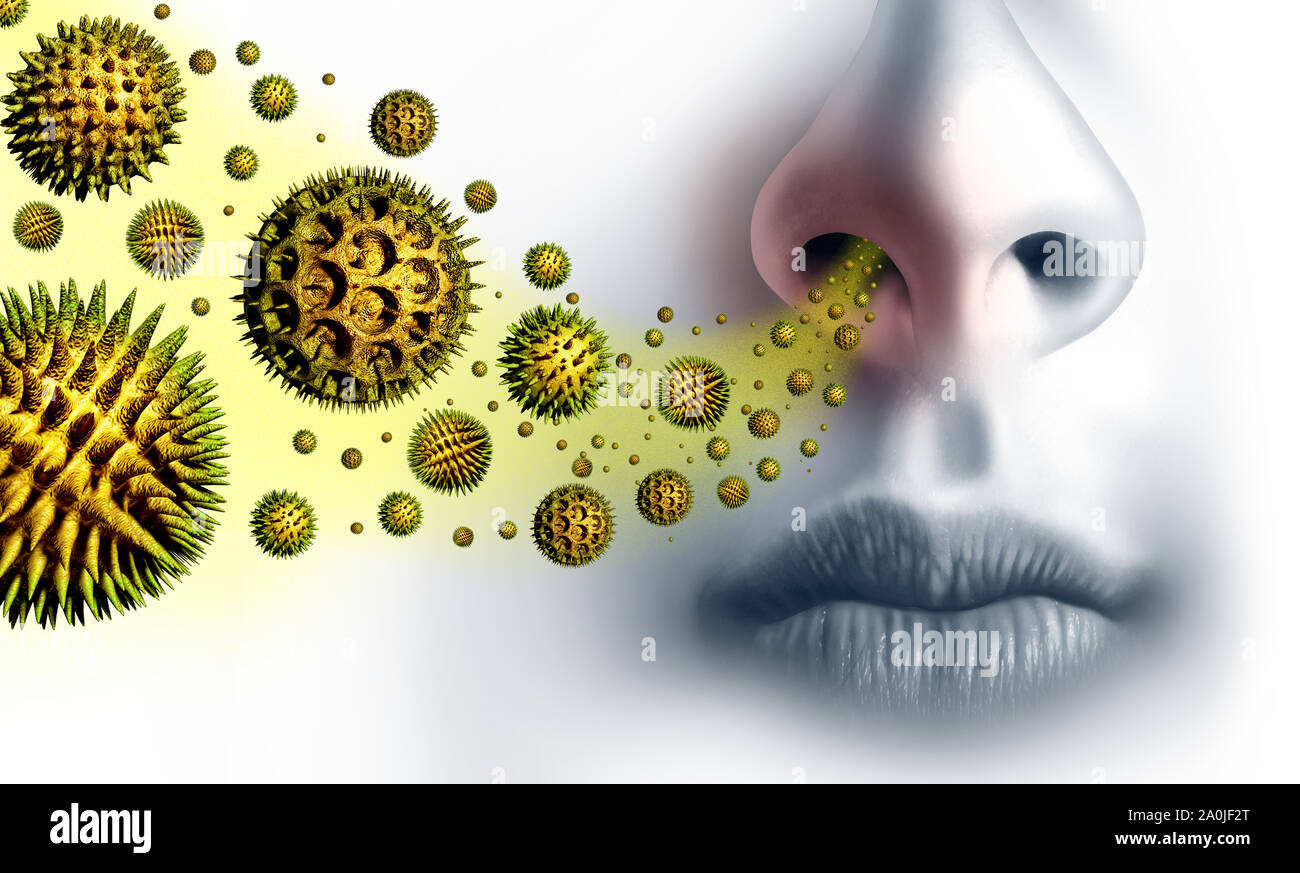 Pollen allergies symptoms and seasonal allergy or hay fever allergy and medical concept as a group of microscopic organic pollination particles. Stock Photohttps://www.alamy.com/image-license-details/?v=1https://www.alamy.com/pollen-allergies-symptoms-and-seasonal-allergy-or-hay-fever-allergy-and-medical-concept-as-a-group-of-microscopic-organic-pollination-particles-image327403968.html
Pollen allergies symptoms and seasonal allergy or hay fever allergy and medical concept as a group of microscopic organic pollination particles. Stock Photohttps://www.alamy.com/image-license-details/?v=1https://www.alamy.com/pollen-allergies-symptoms-and-seasonal-allergy-or-hay-fever-allergy-and-medical-concept-as-a-group-of-microscopic-organic-pollination-particles-image327403968.htmlRF2A0JF2T–Pollen allergies symptoms and seasonal allergy or hay fever allergy and medical concept as a group of microscopic organic pollination particles.
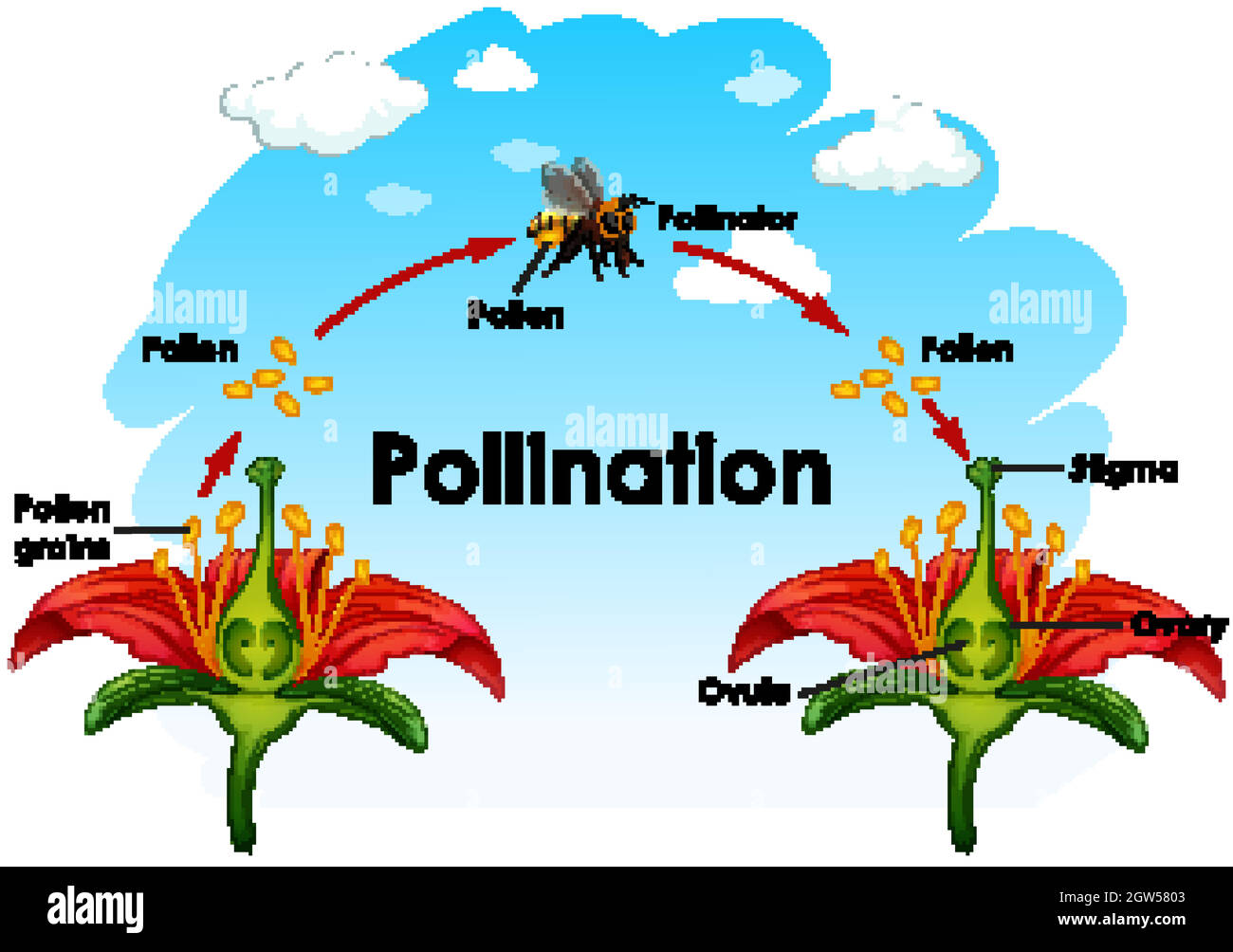 Diagram showing pollination with flower and bee Stock Vectorhttps://www.alamy.com/image-license-details/?v=1https://www.alamy.com/diagram-showing-pollination-with-flower-and-bee-image445741635.html
Diagram showing pollination with flower and bee Stock Vectorhttps://www.alamy.com/image-license-details/?v=1https://www.alamy.com/diagram-showing-pollination-with-flower-and-bee-image445741635.htmlRF2GW5803–Diagram showing pollination with flower and bee
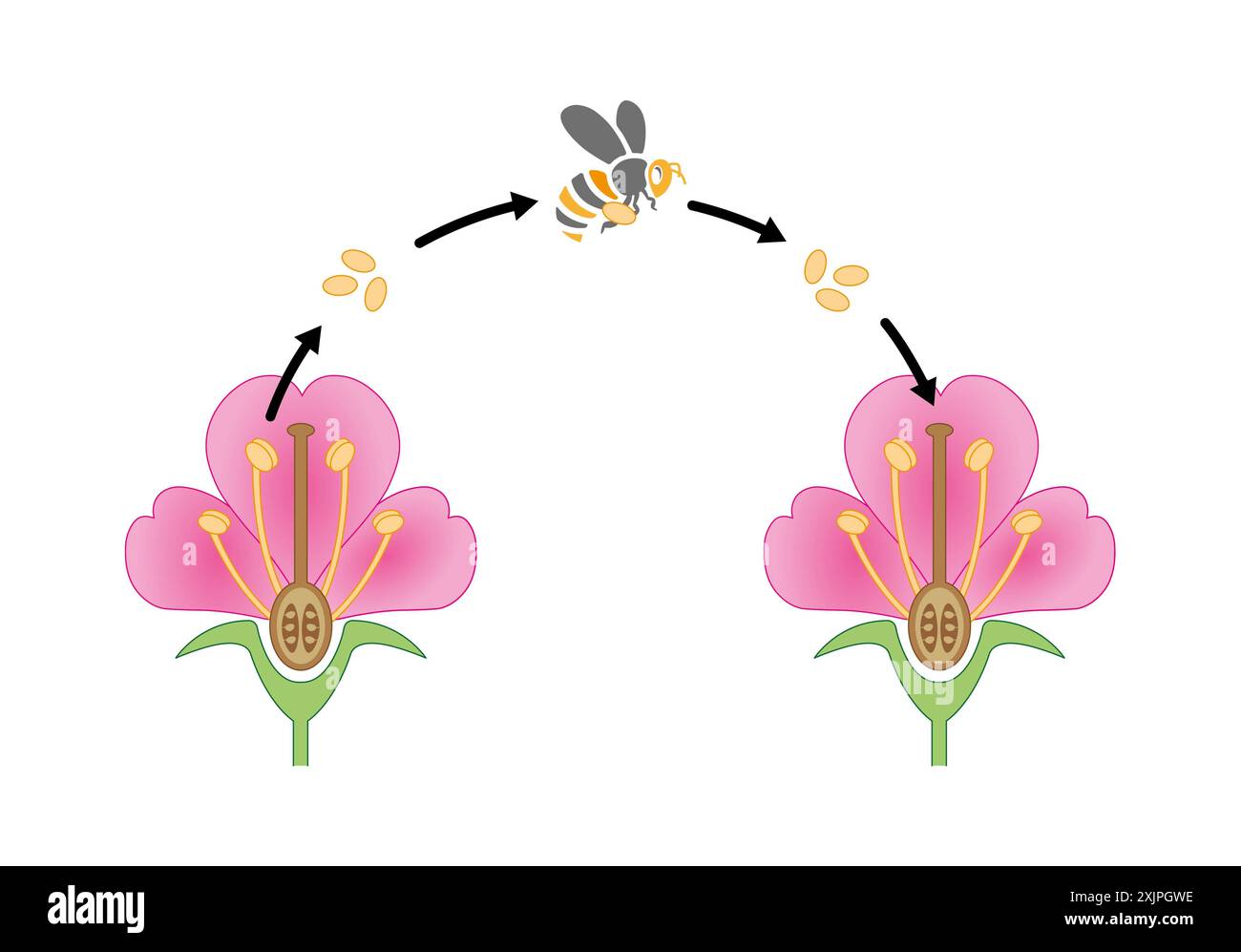 Pollination mechanism, illustration. Stock Photohttps://www.alamy.com/image-license-details/?v=1https://www.alamy.com/pollination-mechanism-illustration-image613922890.html
Pollination mechanism, illustration. Stock Photohttps://www.alamy.com/image-license-details/?v=1https://www.alamy.com/pollination-mechanism-illustration-image613922890.htmlRF2XJPGWE–Pollination mechanism, illustration.
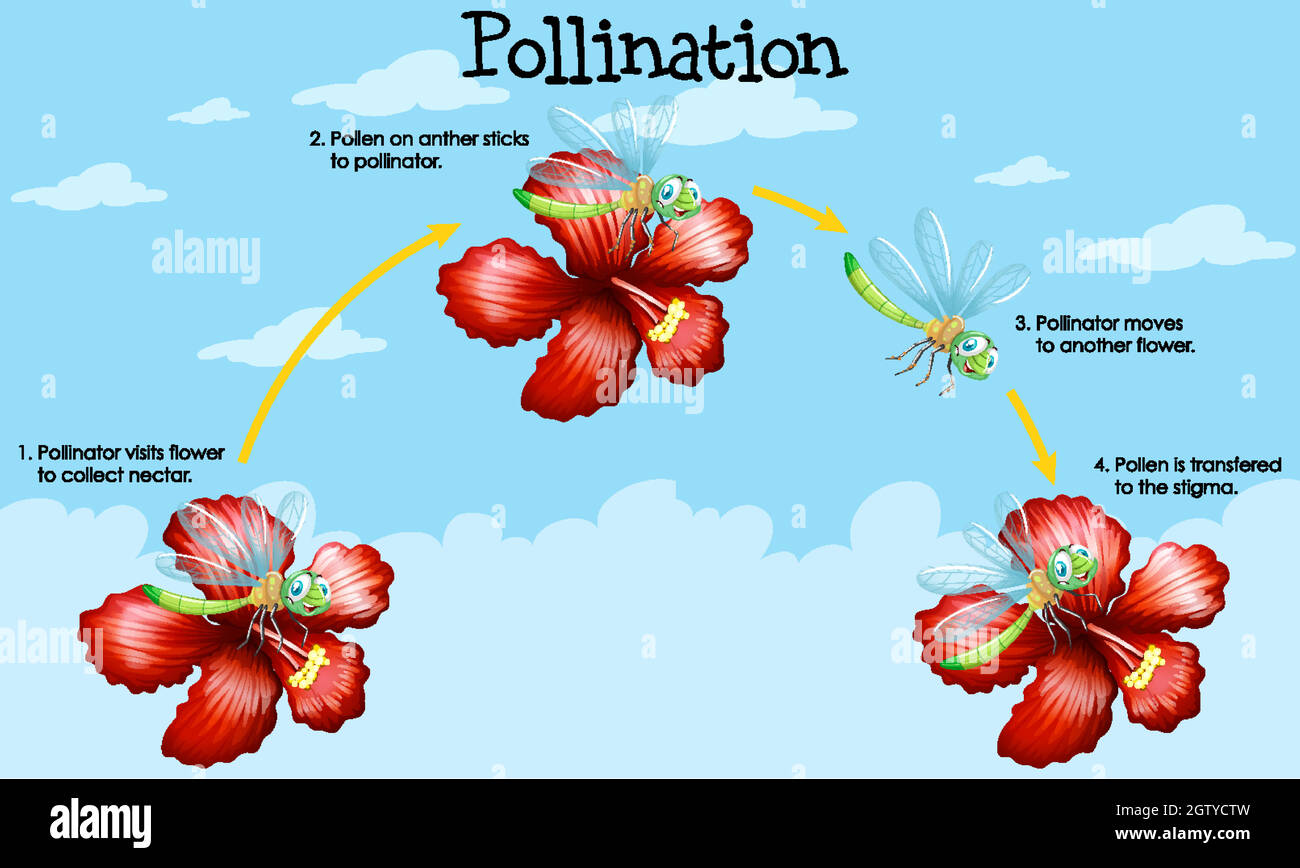 Diagram showing pollination with flowers and bugs Stock Vectorhttps://www.alamy.com/image-license-details/?v=1https://www.alamy.com/diagram-showing-pollination-with-flowers-and-bugs-image445613753.html
Diagram showing pollination with flowers and bugs Stock Vectorhttps://www.alamy.com/image-license-details/?v=1https://www.alamy.com/diagram-showing-pollination-with-flowers-and-bugs-image445613753.htmlRF2GTYCTW–Diagram showing pollination with flowers and bugs
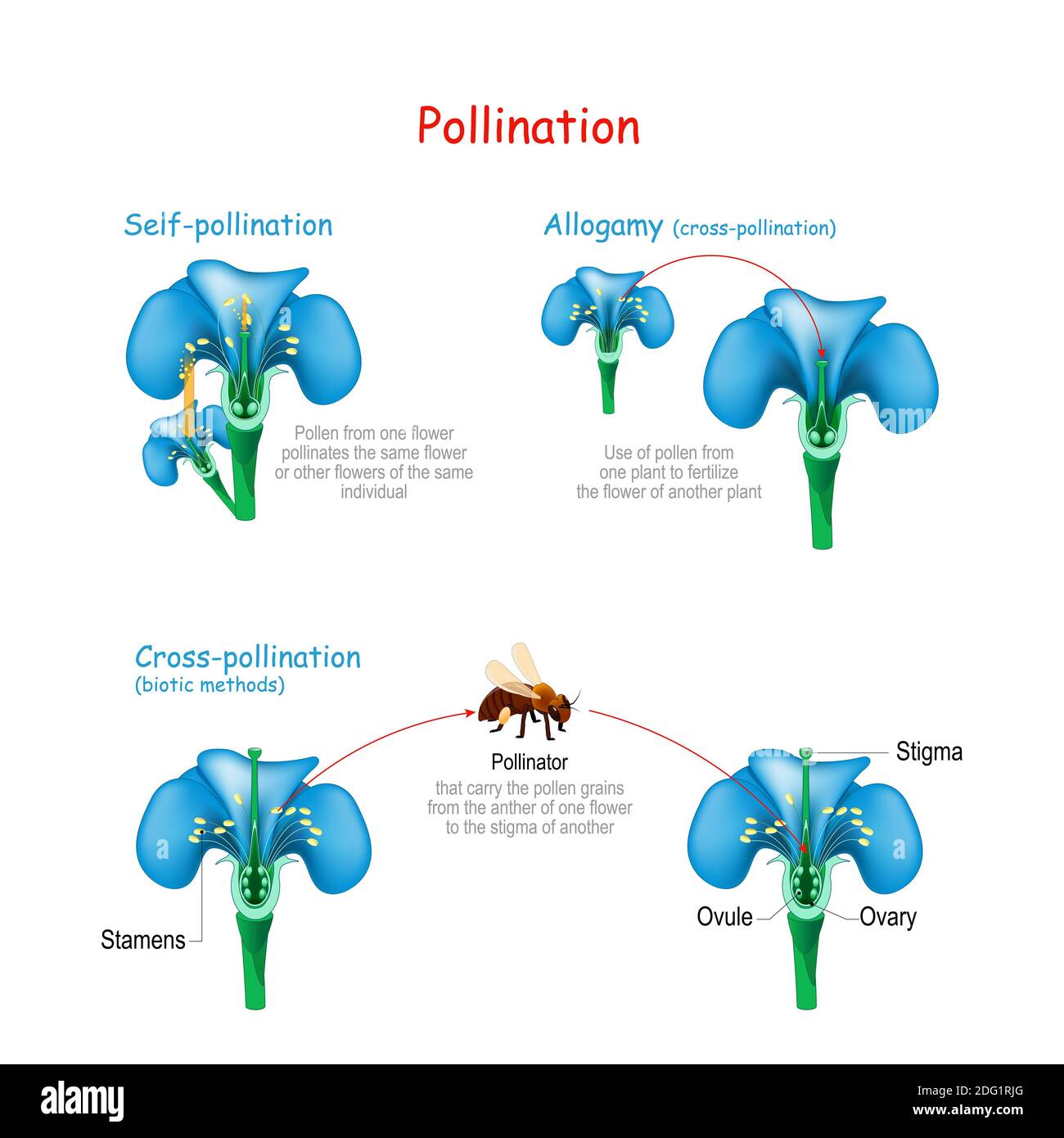 Pollination of the flower by bee. Self-pollination, Allogamy, and cross-pollination by biotic methods. useful for study botany and science education Stock Photohttps://www.alamy.com/image-license-details/?v=1https://www.alamy.com/pollination-of-the-flower-by-bee-self-pollination-allogamy-and-cross-pollination-by-biotic-methods-useful-for-study-botany-and-science-education-image388503096.html
Pollination of the flower by bee. Self-pollination, Allogamy, and cross-pollination by biotic methods. useful for study botany and science education Stock Photohttps://www.alamy.com/image-license-details/?v=1https://www.alamy.com/pollination-of-the-flower-by-bee-self-pollination-allogamy-and-cross-pollination-by-biotic-methods-useful-for-study-botany-and-science-education-image388503096.htmlRF2DG1RJG–Pollination of the flower by bee. Self-pollination, Allogamy, and cross-pollination by biotic methods. useful for study botany and science education
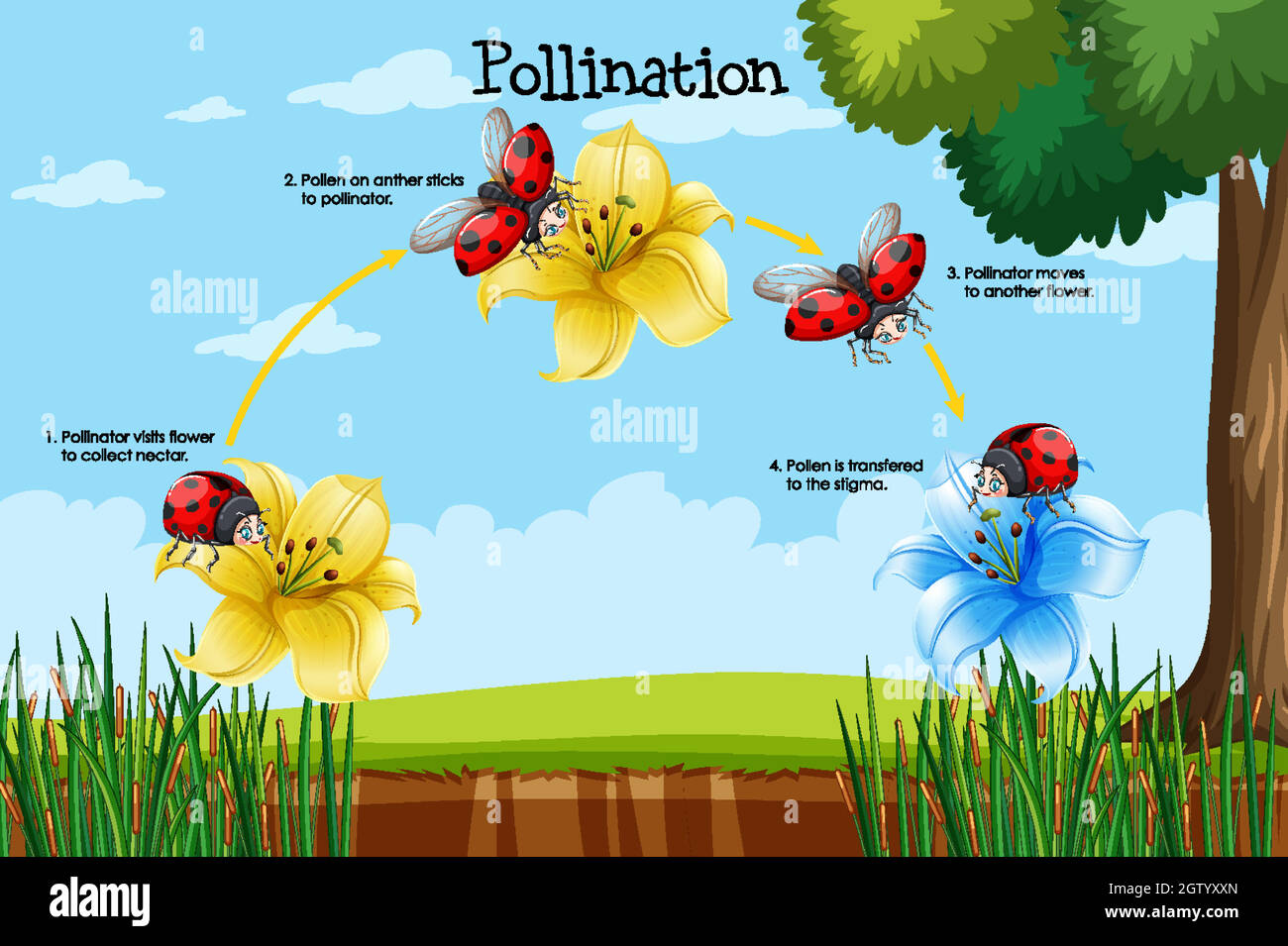 Diagram showing pollination with flower and bug Stock Vectorhttps://www.alamy.com/image-license-details/?v=1https://www.alamy.com/diagram-showing-pollination-with-flower-and-bug-image445624781.html
Diagram showing pollination with flower and bug Stock Vectorhttps://www.alamy.com/image-license-details/?v=1https://www.alamy.com/diagram-showing-pollination-with-flower-and-bug-image445624781.htmlRF2GTYXXN–Diagram showing pollination with flower and bug
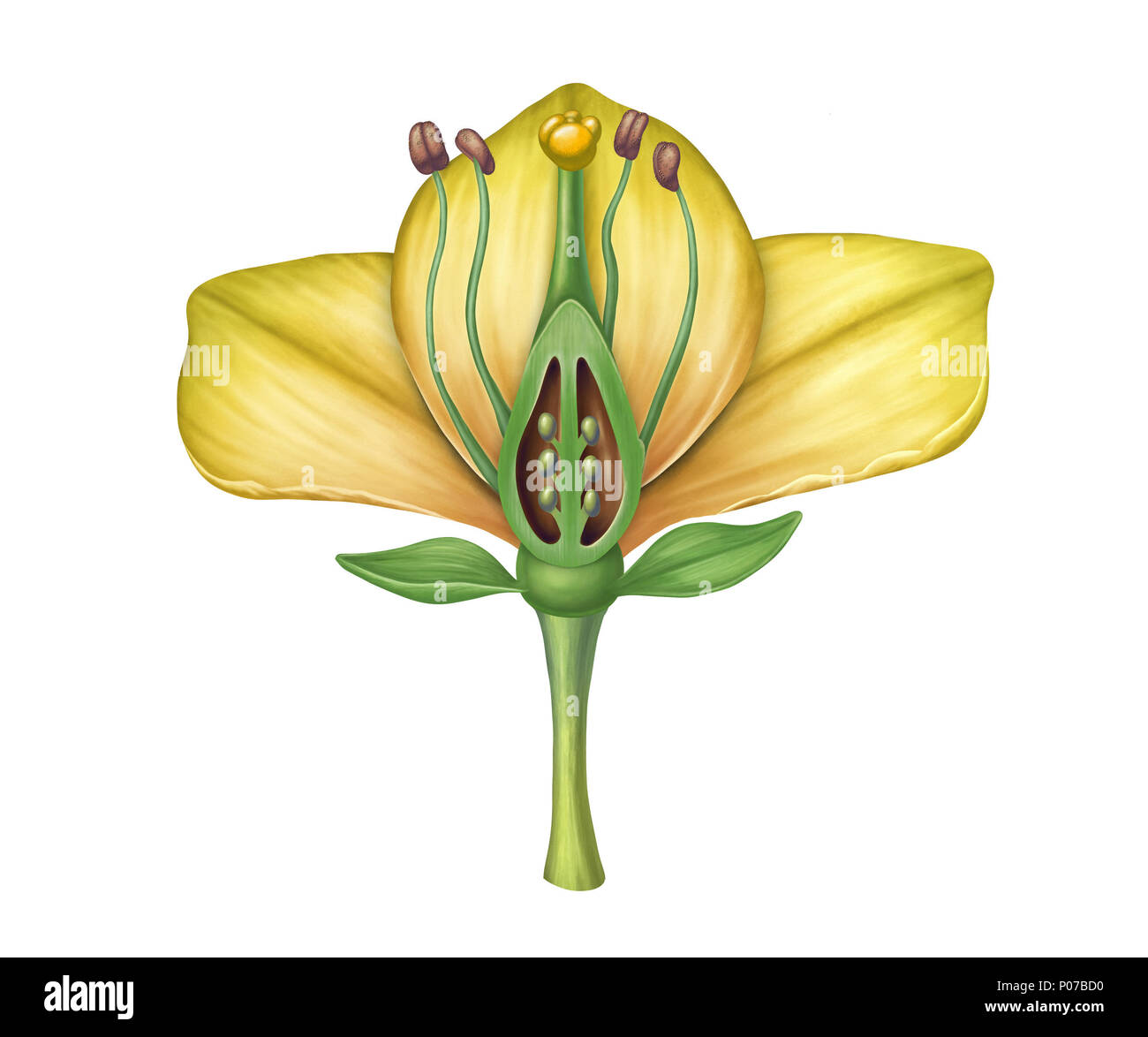 Cross section diagram showing the different parts of a flower. Digital illustration. Stock Photohttps://www.alamy.com/image-license-details/?v=1https://www.alamy.com/cross-section-diagram-showing-the-different-parts-of-a-flower-digital-illustration-image206687068.html
Cross section diagram showing the different parts of a flower. Digital illustration. Stock Photohttps://www.alamy.com/image-license-details/?v=1https://www.alamy.com/cross-section-diagram-showing-the-different-parts-of-a-flower-digital-illustration-image206687068.htmlRFP07BD0–Cross section diagram showing the different parts of a flower. Digital illustration.
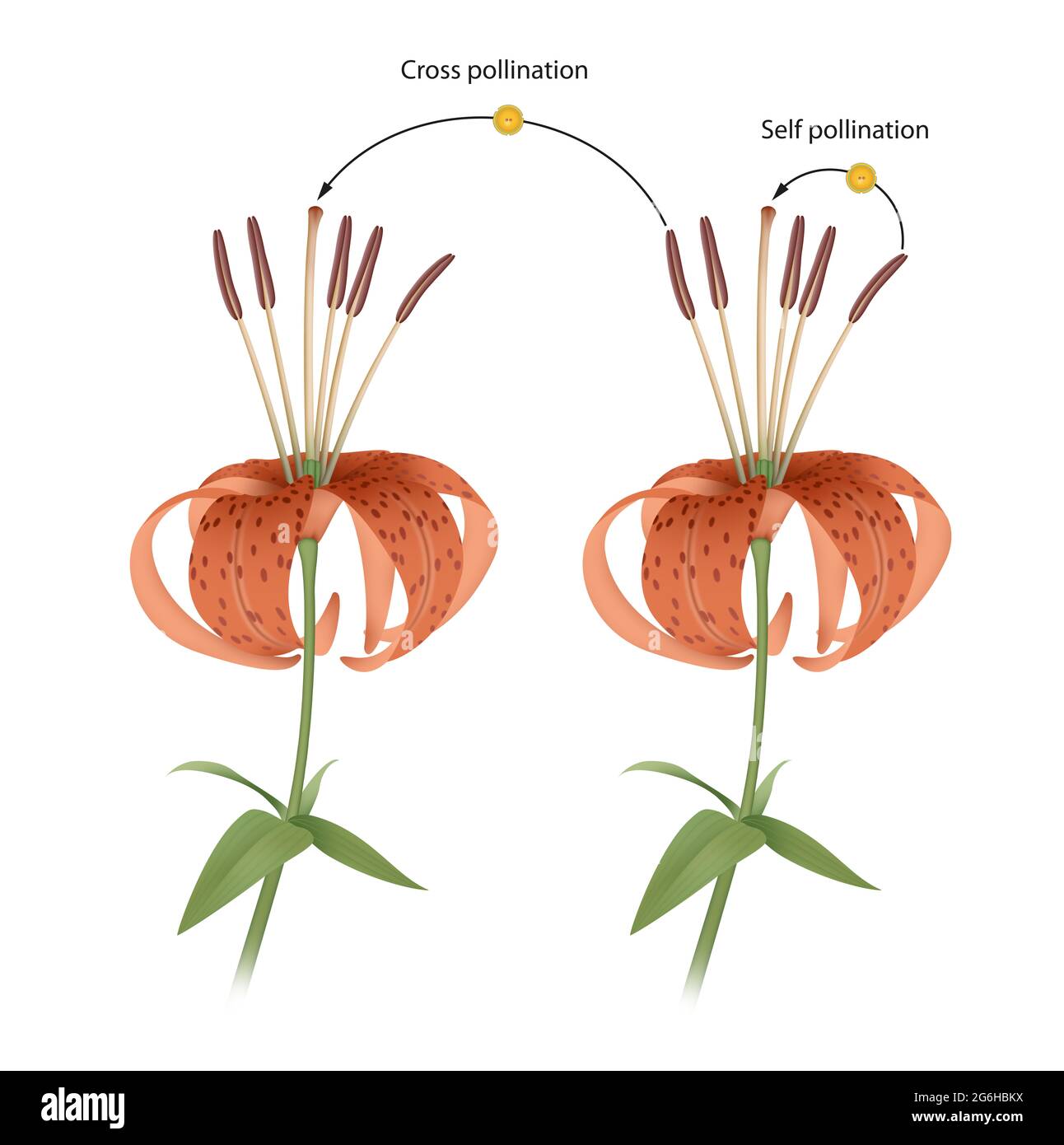 The process of cross and self pollination. Reproduction in Plant Stock Photohttps://www.alamy.com/image-license-details/?v=1https://www.alamy.com/the-process-of-cross-and-self-pollination-reproduction-in-plant-image434329502.html
The process of cross and self pollination. Reproduction in Plant Stock Photohttps://www.alamy.com/image-license-details/?v=1https://www.alamy.com/the-process-of-cross-and-self-pollination-reproduction-in-plant-image434329502.htmlRF2G6HBKX–The process of cross and self pollination. Reproduction in Plant
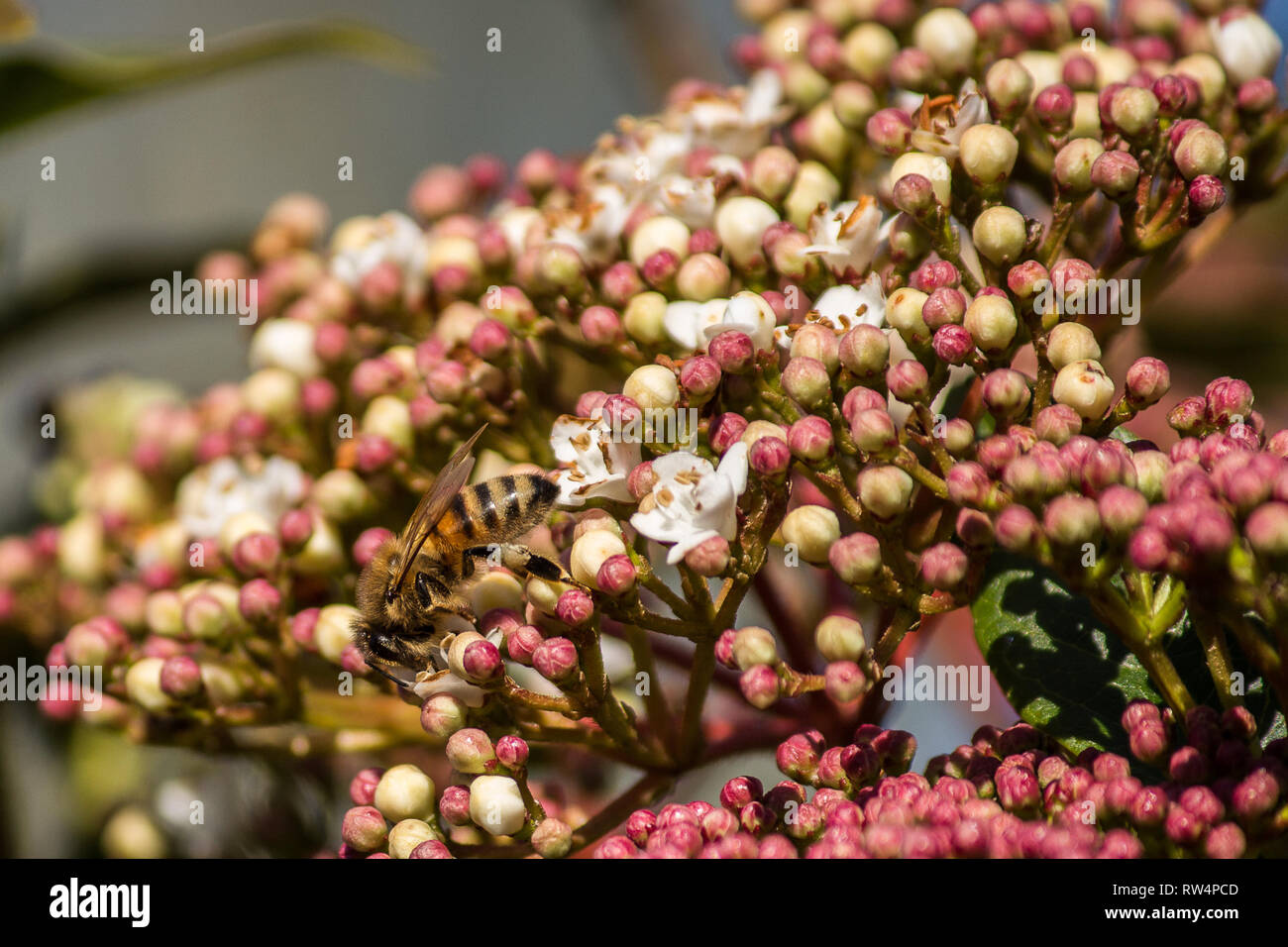 Pollination, the great work of the bees, they visit the flowers collect the nectar collecting the pollen in the down on the abdomen Stock Photohttps://www.alamy.com/image-license-details/?v=1https://www.alamy.com/pollination-the-great-work-of-the-bees-they-visit-the-flowers-collect-the-nectar-collecting-the-pollen-in-the-down-on-the-abdomen-image239206589.html
Pollination, the great work of the bees, they visit the flowers collect the nectar collecting the pollen in the down on the abdomen Stock Photohttps://www.alamy.com/image-license-details/?v=1https://www.alamy.com/pollination-the-great-work-of-the-bees-they-visit-the-flowers-collect-the-nectar-collecting-the-pollen-in-the-down-on-the-abdomen-image239206589.htmlRFRW4PCD–Pollination, the great work of the bees, they visit the flowers collect the nectar collecting the pollen in the down on the abdomen
 Pollination is the act of transferring pollen grains from the male anther of a flower to the female stigma Stock Photohttps://www.alamy.com/image-license-details/?v=1https://www.alamy.com/pollination-is-the-act-of-transferring-pollen-grains-from-the-male-anther-of-a-flower-to-the-female-stigma-image434329455.html
Pollination is the act of transferring pollen grains from the male anther of a flower to the female stigma Stock Photohttps://www.alamy.com/image-license-details/?v=1https://www.alamy.com/pollination-is-the-act-of-transferring-pollen-grains-from-the-male-anther-of-a-flower-to-the-female-stigma-image434329455.htmlRF2G6HBJ7–Pollination is the act of transferring pollen grains from the male anther of a flower to the female stigma
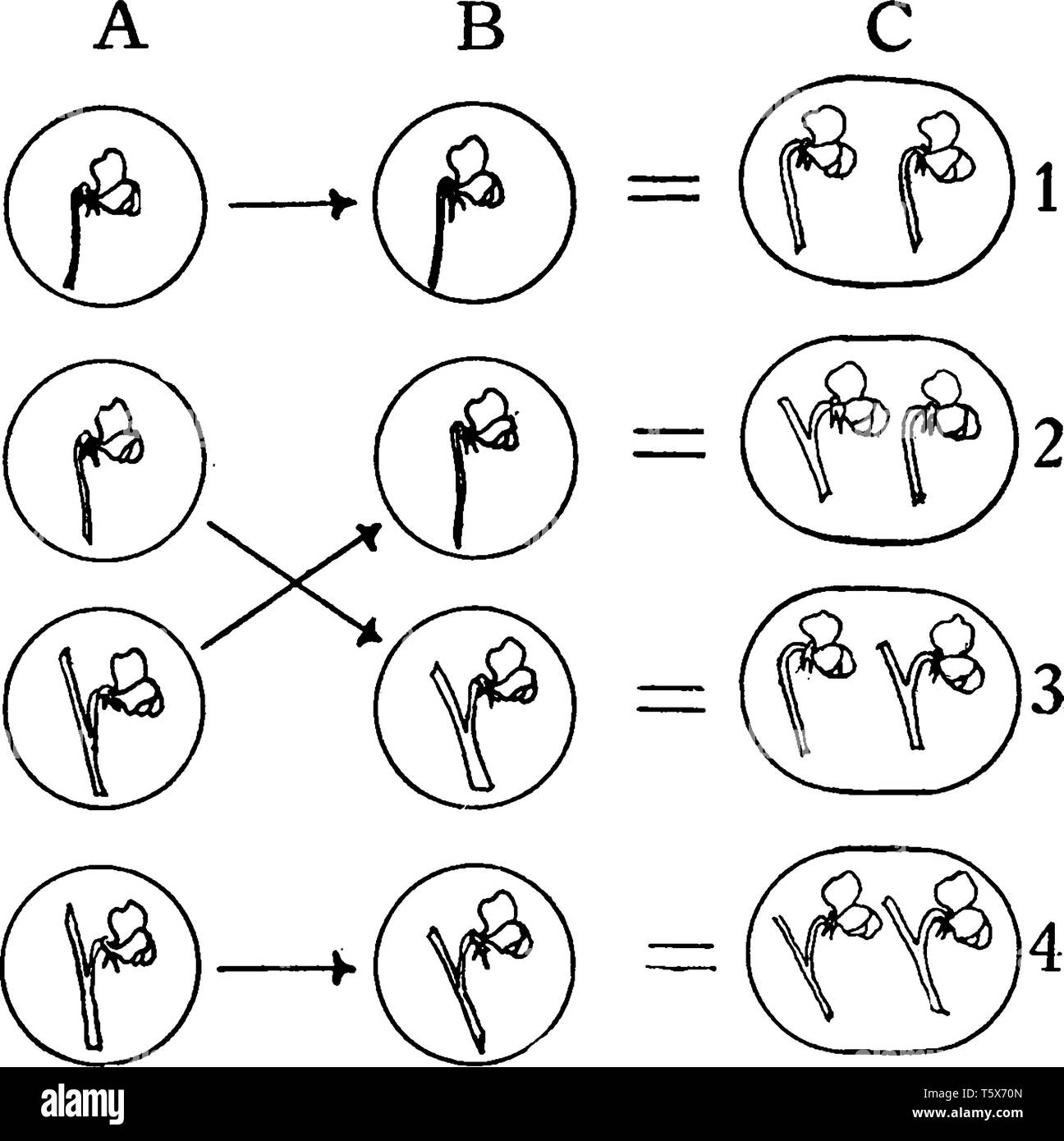 A Diagram showing the possible combination of two contrasting characters during the self-pollination of a hybrid, vintage line drawing or engraving il Stock Vectorhttps://www.alamy.com/image-license-details/?v=1https://www.alamy.com/a-diagram-showing-the-possible-combination-of-two-contrasting-characters-during-the-self-pollination-of-a-hybrid-vintage-line-drawing-or-engraving-il-image244594693.html
A Diagram showing the possible combination of two contrasting characters during the self-pollination of a hybrid, vintage line drawing or engraving il Stock Vectorhttps://www.alamy.com/image-license-details/?v=1https://www.alamy.com/a-diagram-showing-the-possible-combination-of-two-contrasting-characters-during-the-self-pollination-of-a-hybrid-vintage-line-drawing-or-engraving-il-image244594693.htmlRFT5X70N–A Diagram showing the possible combination of two contrasting characters during the self-pollination of a hybrid, vintage line drawing or engraving il
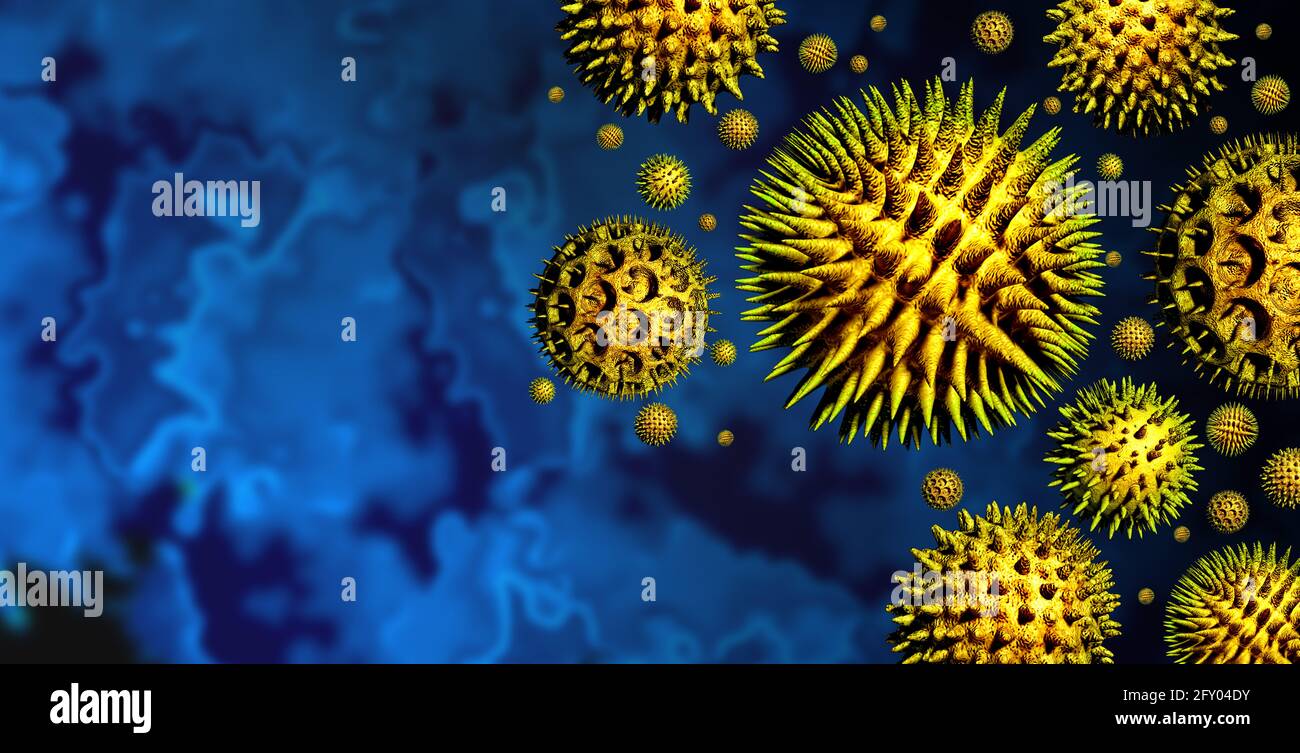 Pollen allergies symptoms and seasonal allergy or hay fever allergy and medical concept as a group of microscopic organic pollination particles. Stock Photohttps://www.alamy.com/image-license-details/?v=1https://www.alamy.com/pollen-allergies-symptoms-and-seasonal-allergy-or-hay-fever-allergy-and-medical-concept-as-a-group-of-microscopic-organic-pollination-particles-image429648071.html
Pollen allergies symptoms and seasonal allergy or hay fever allergy and medical concept as a group of microscopic organic pollination particles. Stock Photohttps://www.alamy.com/image-license-details/?v=1https://www.alamy.com/pollen-allergies-symptoms-and-seasonal-allergy-or-hay-fever-allergy-and-medical-concept-as-a-group-of-microscopic-organic-pollination-particles-image429648071.htmlRF2FY04DY–Pollen allergies symptoms and seasonal allergy or hay fever allergy and medical concept as a group of microscopic organic pollination particles.
 The coevolution between fig wasps and figs has become so profound that neither organism can exist without the other. Stock Photohttps://www.alamy.com/image-license-details/?v=1https://www.alamy.com/stock-photo-the-coevolution-between-fig-wasps-and-figs-has-become-so-profound-24898977.html
The coevolution between fig wasps and figs has become so profound that neither organism can exist without the other. Stock Photohttps://www.alamy.com/image-license-details/?v=1https://www.alamy.com/stock-photo-the-coevolution-between-fig-wasps-and-figs-has-become-so-profound-24898977.htmlRMBCE6W5–The coevolution between fig wasps and figs has become so profound that neither organism can exist without the other.
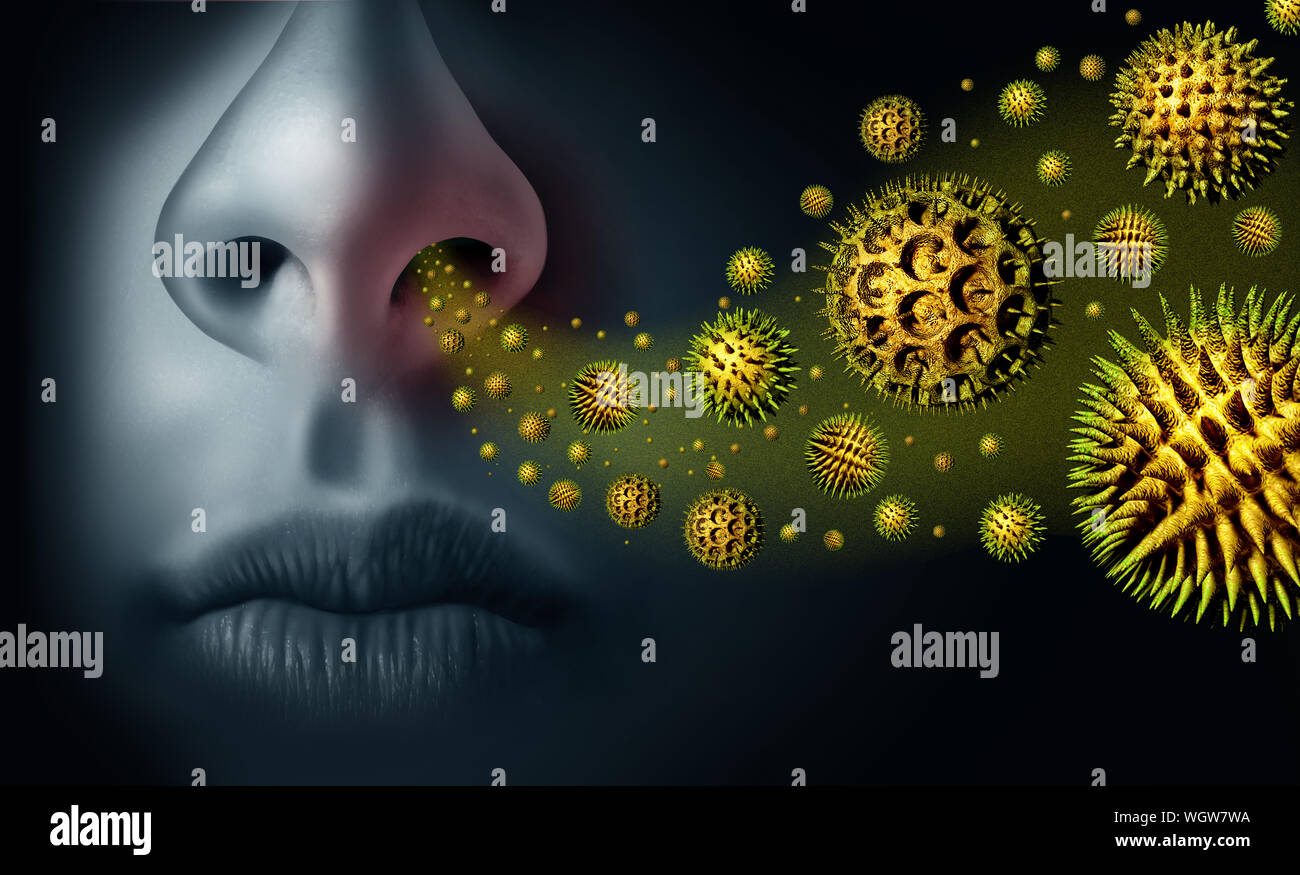 Seasonal pollen allergy and hay fever allergies and medical concept as a group of microscopic organic pollination particles flying in the air. Stock Photohttps://www.alamy.com/image-license-details/?v=1https://www.alamy.com/seasonal-pollen-allergy-and-hay-fever-allergies-and-medical-concept-as-a-group-of-microscopic-organic-pollination-particles-flying-in-the-air-image268545014.html
Seasonal pollen allergy and hay fever allergies and medical concept as a group of microscopic organic pollination particles flying in the air. Stock Photohttps://www.alamy.com/image-license-details/?v=1https://www.alamy.com/seasonal-pollen-allergy-and-hay-fever-allergies-and-medical-concept-as-a-group-of-microscopic-organic-pollination-particles-flying-in-the-air-image268545014.htmlRFWGW7WA–Seasonal pollen allergy and hay fever allergies and medical concept as a group of microscopic organic pollination particles flying in the air.
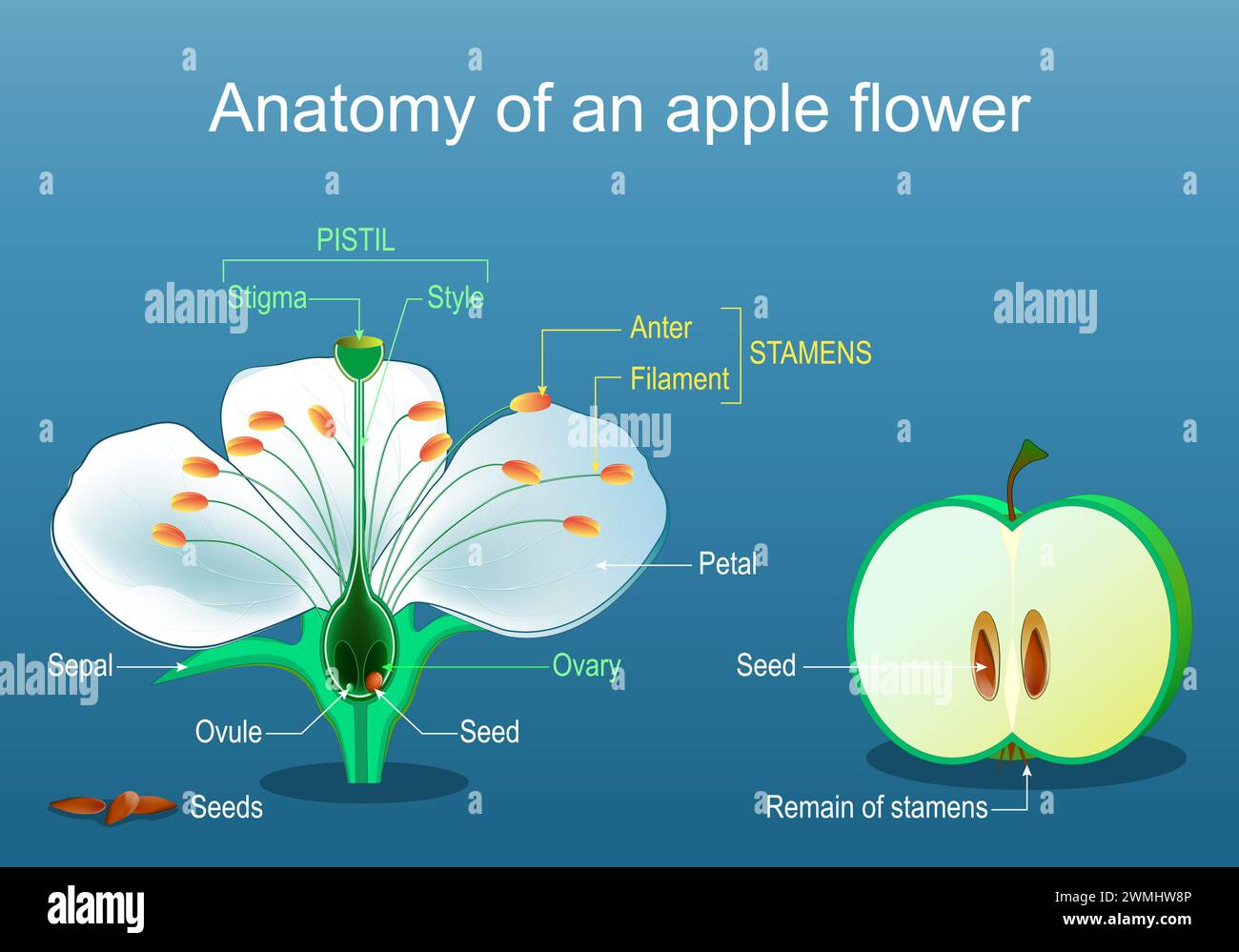 Anatomy of apple flower. Parts of Flower and fruit. Fruit development. Flat Vector illustration Stock Vectorhttps://www.alamy.com/image-license-details/?v=1https://www.alamy.com/anatomy-of-apple-flower-parts-of-flower-and-fruit-fruit-development-flat-vector-illustration-image597838662.html
Anatomy of apple flower. Parts of Flower and fruit. Fruit development. Flat Vector illustration Stock Vectorhttps://www.alamy.com/image-license-details/?v=1https://www.alamy.com/anatomy-of-apple-flower-parts-of-flower-and-fruit-fruit-development-flat-vector-illustration-image597838662.htmlRF2WMHW8P–Anatomy of apple flower. Parts of Flower and fruit. Fruit development. Flat Vector illustration
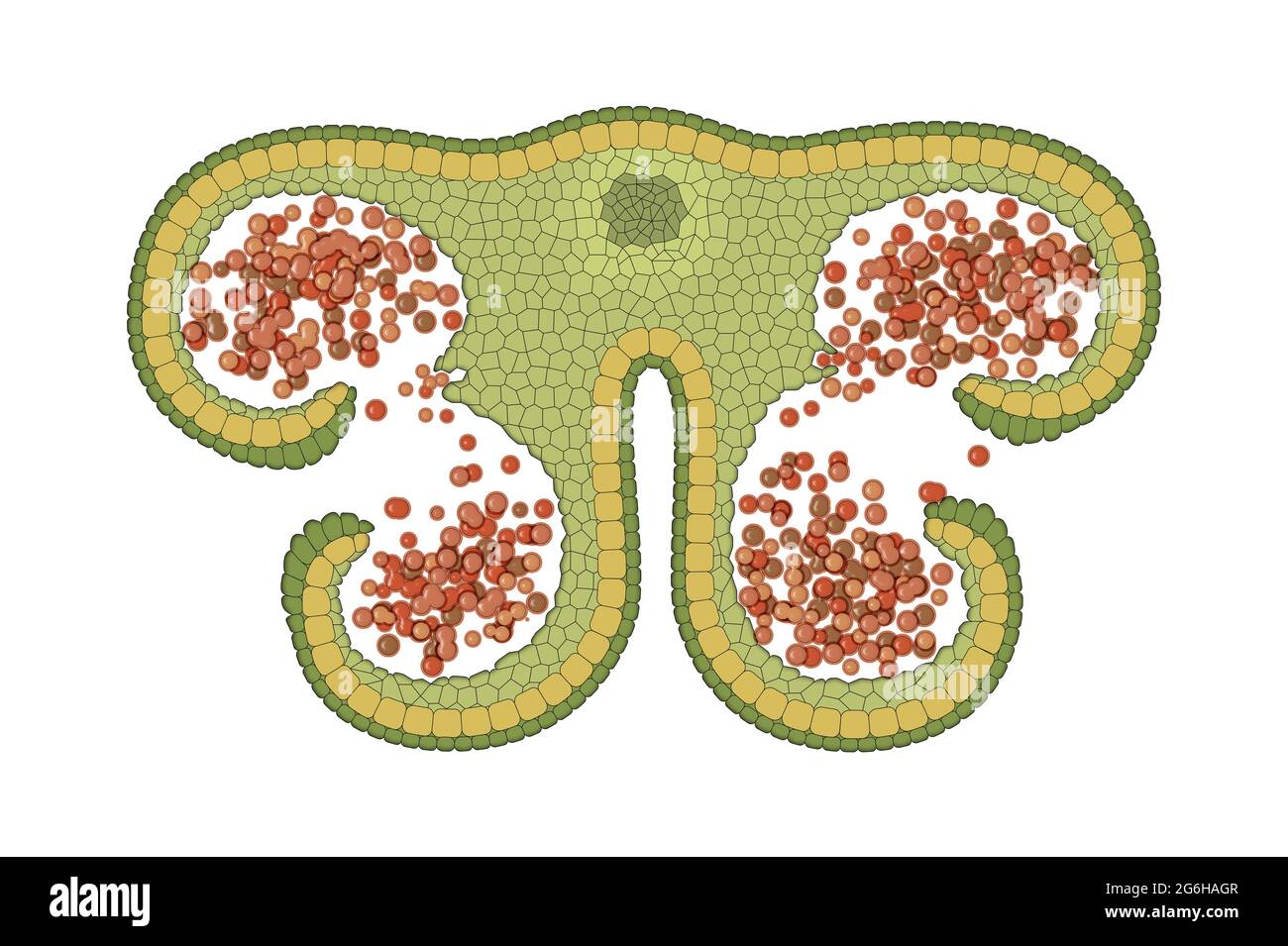 Anthers are the pollen producing part of the flower. Anther structure Stock Photohttps://www.alamy.com/image-license-details/?v=1https://www.alamy.com/anthers-are-the-pollen-producing-part-of-the-flower-anther-structure-image434328631.html
Anthers are the pollen producing part of the flower. Anther structure Stock Photohttps://www.alamy.com/image-license-details/?v=1https://www.alamy.com/anthers-are-the-pollen-producing-part-of-the-flower-anther-structure-image434328631.htmlRF2G6HAGR–Anthers are the pollen producing part of the flower. Anther structure
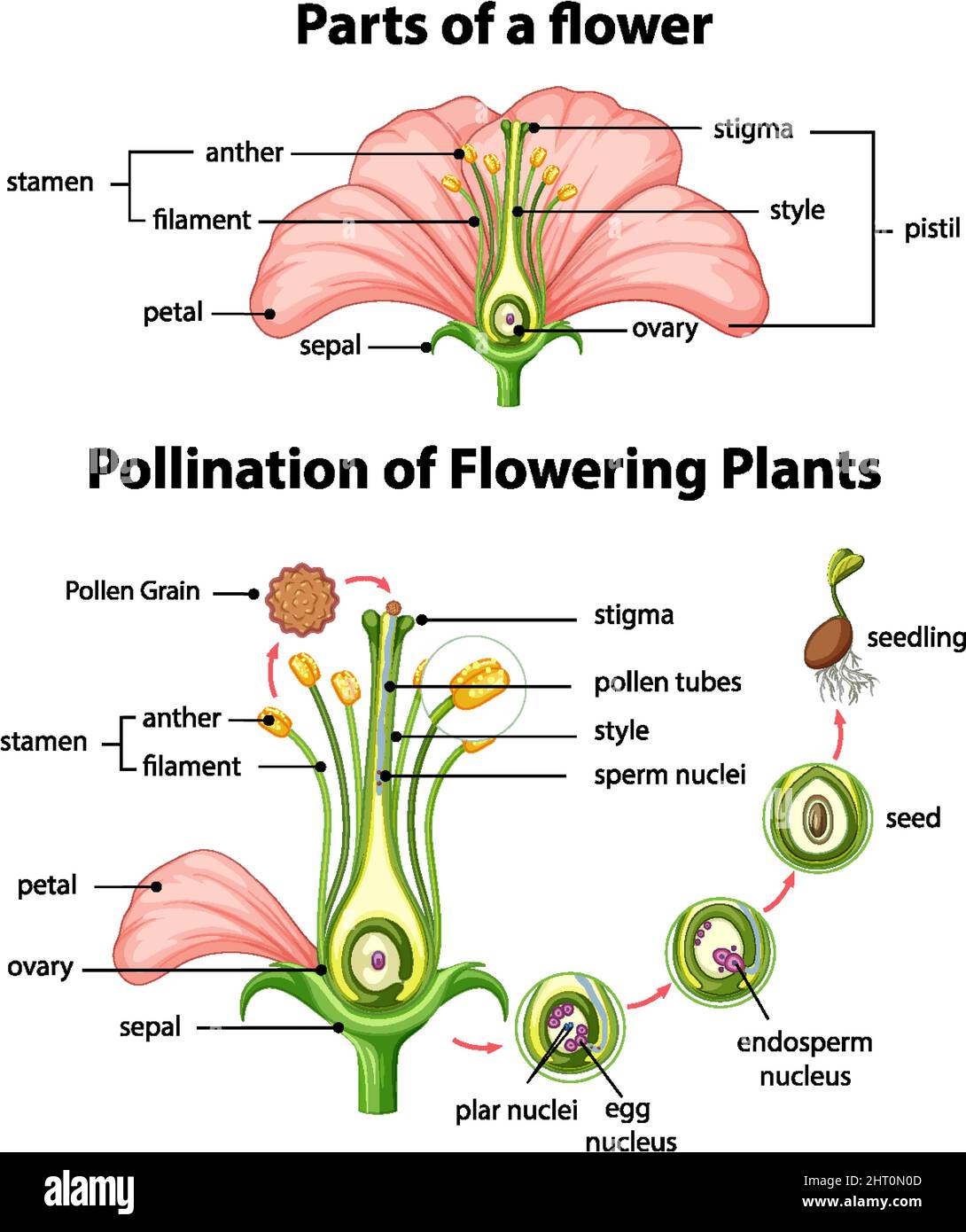 Diagram of pollination of flowering plants illustration Stock Vectorhttps://www.alamy.com/image-license-details/?v=1https://www.alamy.com/diagram-of-pollination-of-flowering-plants-illustration-image462237789.html
Diagram of pollination of flowering plants illustration Stock Vectorhttps://www.alamy.com/image-license-details/?v=1https://www.alamy.com/diagram-of-pollination-of-flowering-plants-illustration-image462237789.htmlRF2HT0N0D–Diagram of pollination of flowering plants illustration
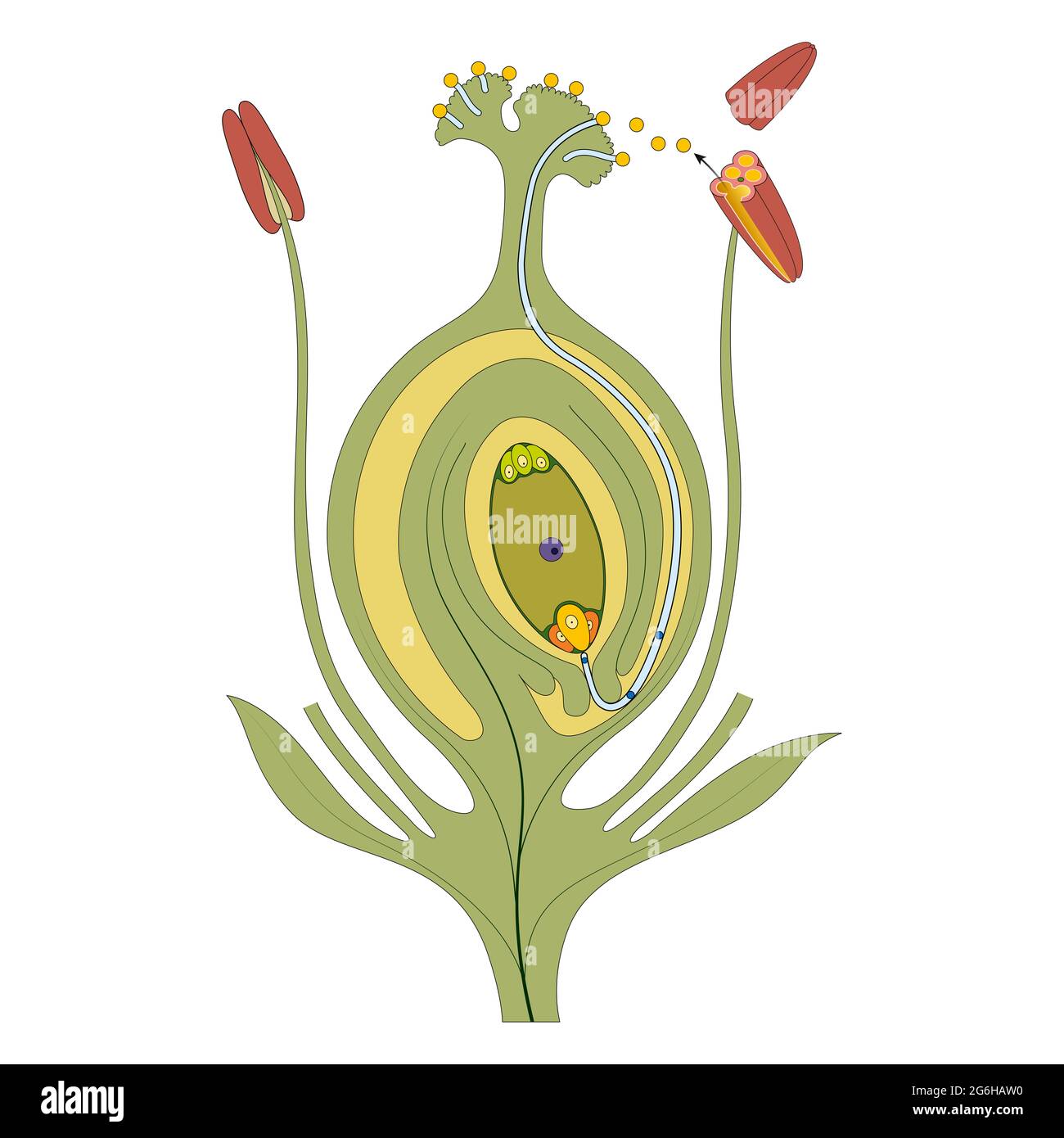 Embryo in Flowering Plants. Ovary structure and fertilization Stock Photohttps://www.alamy.com/image-license-details/?v=1https://www.alamy.com/embryo-in-flowering-plants-ovary-structure-and-fertilization-image434328860.html
Embryo in Flowering Plants. Ovary structure and fertilization Stock Photohttps://www.alamy.com/image-license-details/?v=1https://www.alamy.com/embryo-in-flowering-plants-ovary-structure-and-fertilization-image434328860.htmlRF2G6HAW0–Embryo in Flowering Plants. Ovary structure and fertilization
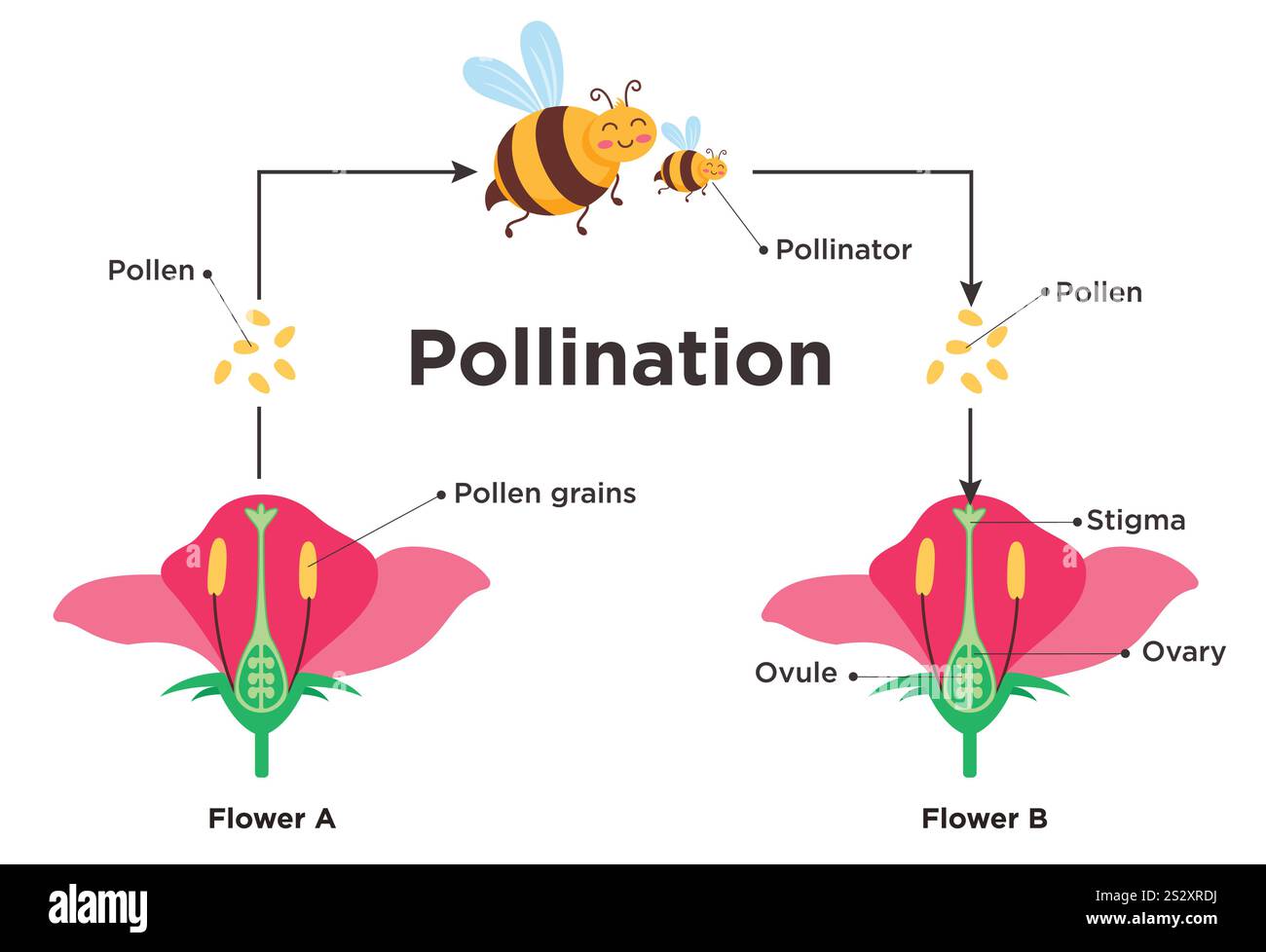 Flower pollination diagram clipart design. Flowers reproduction infographic clip art with flora parts and bee insects drawing elements for biology Stock Vectorhttps://www.alamy.com/image-license-details/?v=1https://www.alamy.com/flower-pollination-diagram-clipart-design-flowers-reproduction-infographic-clip-art-with-flora-parts-and-bee-insects-drawing-elements-for-biology-image638602094.html
Flower pollination diagram clipart design. Flowers reproduction infographic clip art with flora parts and bee insects drawing elements for biology Stock Vectorhttps://www.alamy.com/image-license-details/?v=1https://www.alamy.com/flower-pollination-diagram-clipart-design-flowers-reproduction-infographic-clip-art-with-flora-parts-and-bee-insects-drawing-elements-for-biology-image638602094.htmlRF2S2XRDJ–Flower pollination diagram clipart design. Flowers reproduction infographic clip art with flora parts and bee insects drawing elements for biology
 A picture showing a diagram of Trillium flower which is a genus of around 40-50 species of perennial herbaceous plants, native to the temperate region Stock Vectorhttps://www.alamy.com/image-license-details/?v=1https://www.alamy.com/a-picture-showing-a-diagram-of-trillium-flower-which-is-a-genus-of-around-40-50-species-of-perennial-herbaceous-plants-native-to-the-temperate-region-image244557848.html
A picture showing a diagram of Trillium flower which is a genus of around 40-50 species of perennial herbaceous plants, native to the temperate region Stock Vectorhttps://www.alamy.com/image-license-details/?v=1https://www.alamy.com/a-picture-showing-a-diagram-of-trillium-flower-which-is-a-genus-of-around-40-50-species-of-perennial-herbaceous-plants-native-to-the-temperate-region-image244557848.htmlRFT5TG0T–A picture showing a diagram of Trillium flower which is a genus of around 40-50 species of perennial herbaceous plants, native to the temperate region
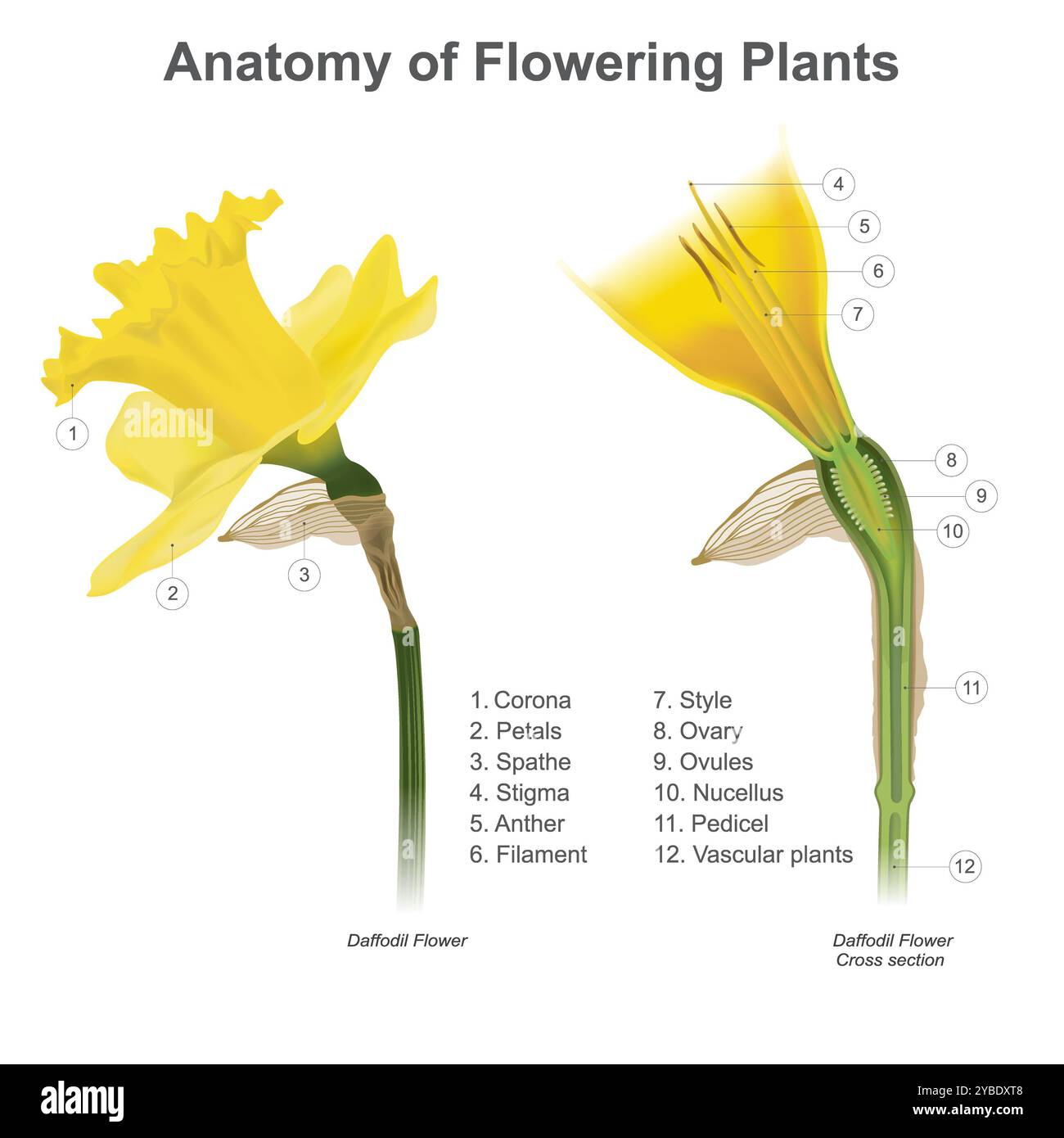 Anatomy of Flowering Plants. Cross section anatomy of flowering plants. Stock Photohttps://www.alamy.com/image-license-details/?v=1https://www.alamy.com/anatomy-of-flowering-plants-cross-section-anatomy-of-flowering-plants-image626640904.html
Anatomy of Flowering Plants. Cross section anatomy of flowering plants. Stock Photohttps://www.alamy.com/image-license-details/?v=1https://www.alamy.com/anatomy-of-flowering-plants-cross-section-anatomy-of-flowering-plants-image626640904.htmlRF2YBDXT8–Anatomy of Flowering Plants. Cross section anatomy of flowering plants.
 Pollination mechanism, illustration. Stock Photohttps://www.alamy.com/image-license-details/?v=1https://www.alamy.com/pollination-mechanism-illustration-image613922891.html
Pollination mechanism, illustration. Stock Photohttps://www.alamy.com/image-license-details/?v=1https://www.alamy.com/pollination-mechanism-illustration-image613922891.htmlRF2XJPGWF–Pollination mechanism, illustration.
![Infographic about the process of transformation from a seed to a plant. [QuarkXPress (.qxp); Adobe InDesign (.indd); 4960x3188]. Stock Photo Infographic about the process of transformation from a seed to a plant. [QuarkXPress (.qxp); Adobe InDesign (.indd); 4960x3188]. Stock Photo](https://c8.alamy.com/comp/2NEC328/infographic-about-the-process-of-transformation-from-a-seed-to-a-plant-quarkxpress-qxp-adobe-indesign-indd-4960x3188-2NEC328.jpg) Infographic about the process of transformation from a seed to a plant. [QuarkXPress (.qxp); Adobe InDesign (.indd); 4960x3188]. Stock Photohttps://www.alamy.com/image-license-details/?v=1https://www.alamy.com/infographic-about-the-process-of-transformation-from-a-seed-to-a-plant-quarkxpress-qxp-adobe-indesign-indd-4960x3188-image525182064.html
Infographic about the process of transformation from a seed to a plant. [QuarkXPress (.qxp); Adobe InDesign (.indd); 4960x3188]. Stock Photohttps://www.alamy.com/image-license-details/?v=1https://www.alamy.com/infographic-about-the-process-of-transformation-from-a-seed-to-a-plant-quarkxpress-qxp-adobe-indesign-indd-4960x3188-image525182064.htmlRM2NEC328–Infographic about the process of transformation from a seed to a plant. [QuarkXPress (.qxp); Adobe InDesign (.indd); 4960x3188].
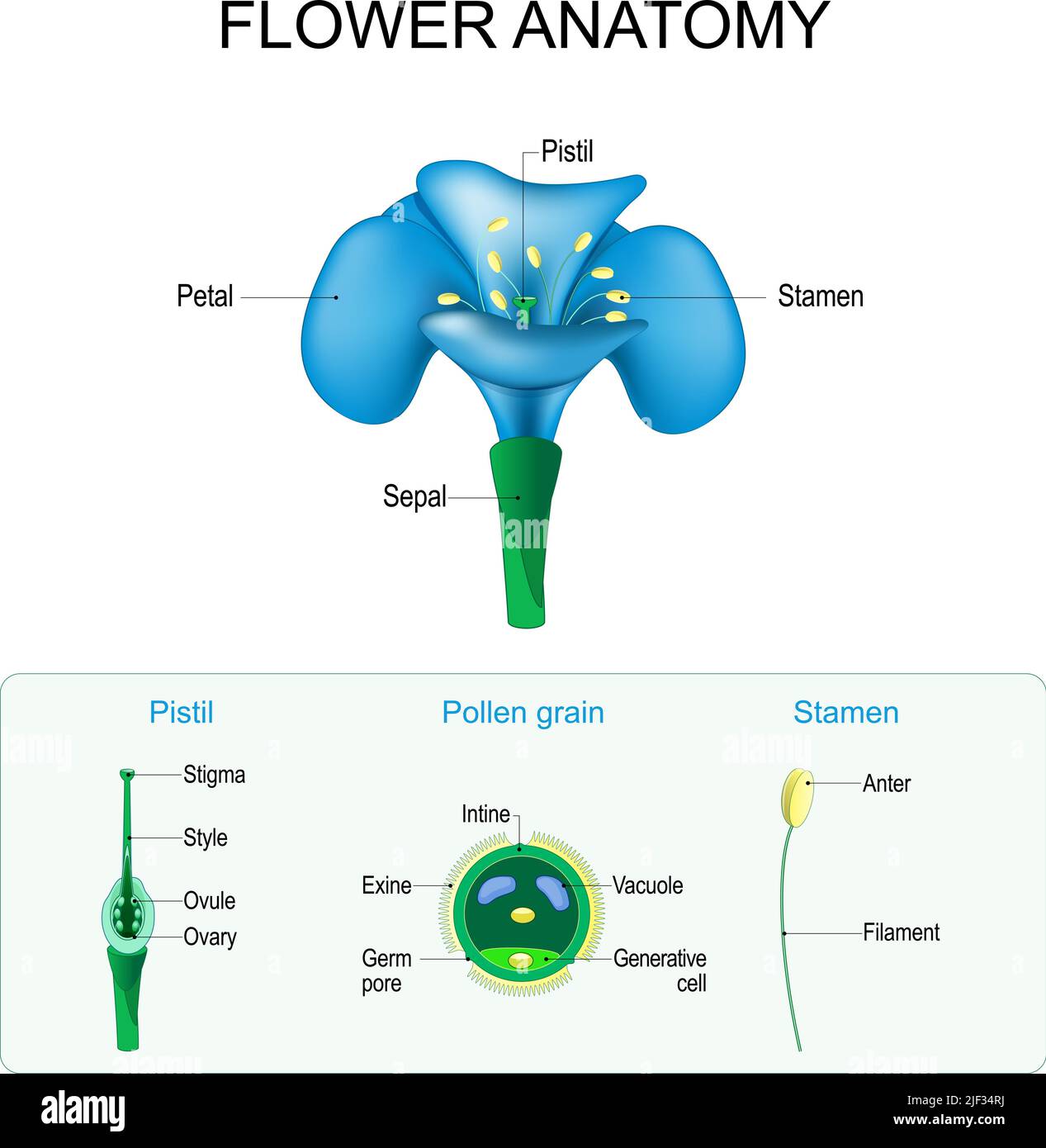 Flower anatomy. Structure of Pistil, Stamen, and Pollen grain. Gamete in Plants. Male and Female Reproductive System in Plants. vector poster Stock Vectorhttps://www.alamy.com/image-license-details/?v=1https://www.alamy.com/flower-anatomy-structure-of-pistil-stamen-and-pollen-grain-gamete-in-plants-male-and-female-reproductive-system-in-plants-vector-poster-image473969430.html
Flower anatomy. Structure of Pistil, Stamen, and Pollen grain. Gamete in Plants. Male and Female Reproductive System in Plants. vector poster Stock Vectorhttps://www.alamy.com/image-license-details/?v=1https://www.alamy.com/flower-anatomy-structure-of-pistil-stamen-and-pollen-grain-gamete-in-plants-male-and-female-reproductive-system-in-plants-vector-poster-image473969430.htmlRF2JF34RJ–Flower anatomy. Structure of Pistil, Stamen, and Pollen grain. Gamete in Plants. Male and Female Reproductive System in Plants. vector poster
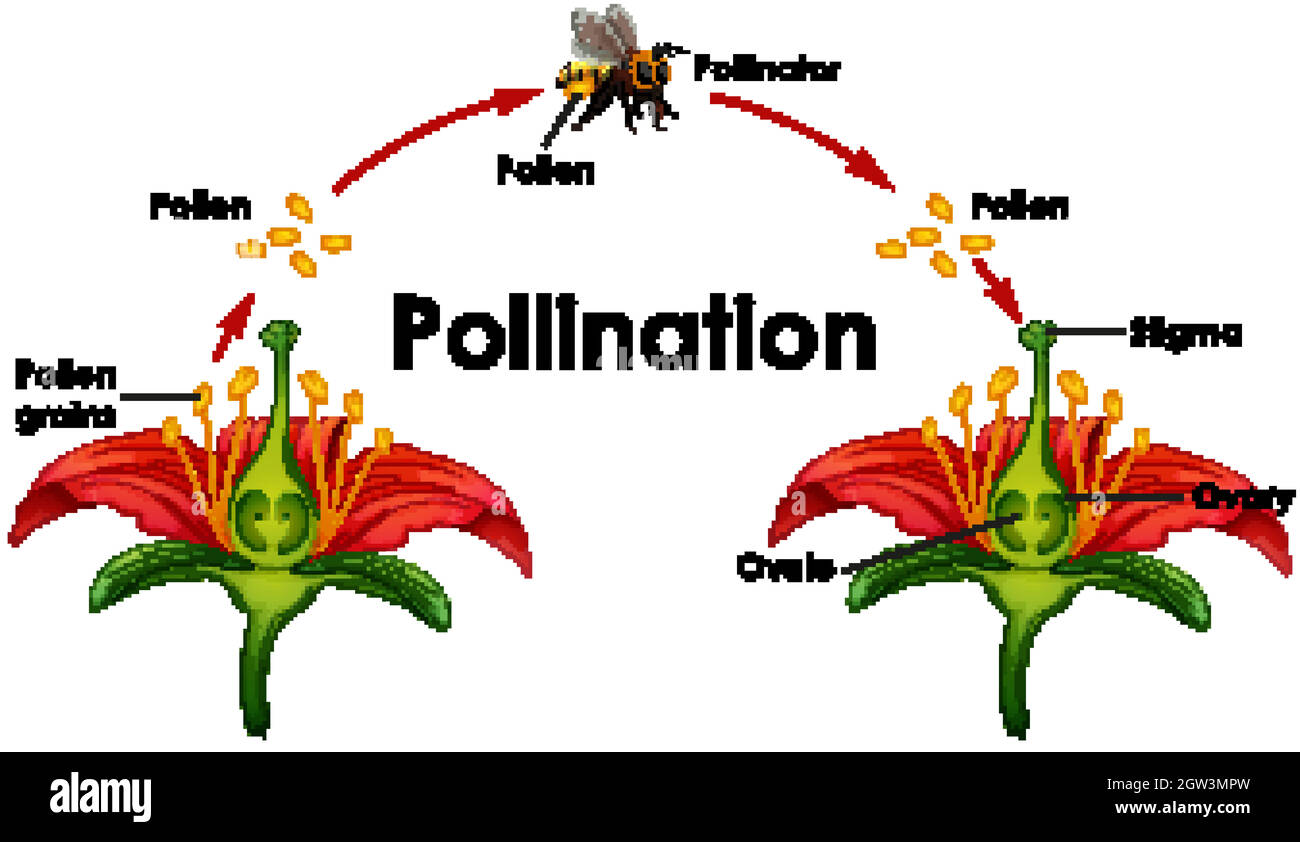 Diagram showing pollination with flower and bee Stock Vectorhttps://www.alamy.com/image-license-details/?v=1https://www.alamy.com/diagram-showing-pollination-with-flower-and-bee-image445707777.html
Diagram showing pollination with flower and bee Stock Vectorhttps://www.alamy.com/image-license-details/?v=1https://www.alamy.com/diagram-showing-pollination-with-flower-and-bee-image445707777.htmlRF2GW3MPW–Diagram showing pollination with flower and bee
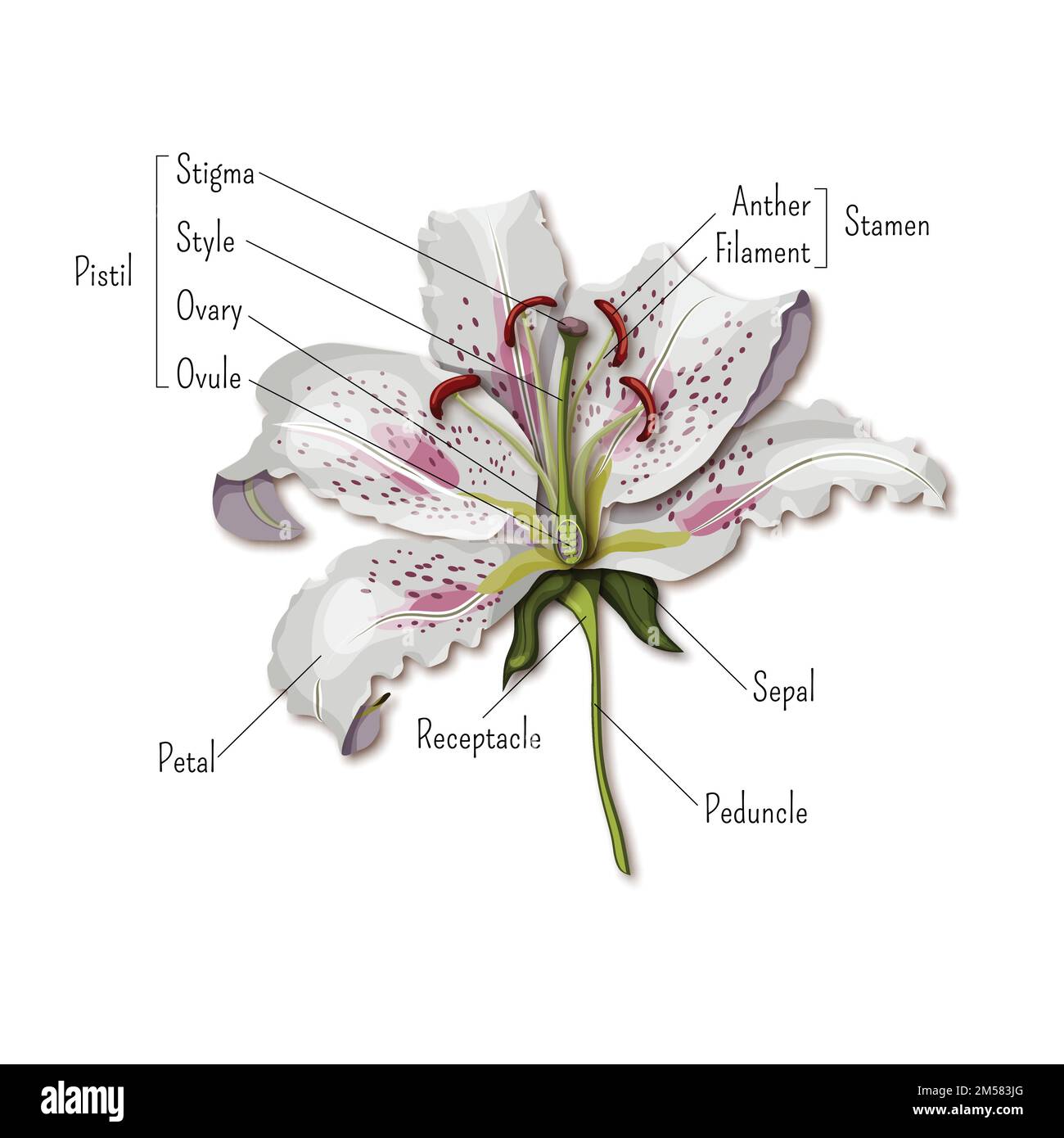 Parts of the flower infographics. Lily flower anatomy. Science for kids. Cartoon style vector illustration. Stock Vectorhttps://www.alamy.com/image-license-details/?v=1https://www.alamy.com/parts-of-the-flower-infographics-lily-flower-anatomy-science-for-kids-cartoon-style-vector-illustration-image502352440.html
Parts of the flower infographics. Lily flower anatomy. Science for kids. Cartoon style vector illustration. Stock Vectorhttps://www.alamy.com/image-license-details/?v=1https://www.alamy.com/parts-of-the-flower-infographics-lily-flower-anatomy-science-for-kids-cartoon-style-vector-illustration-image502352440.htmlRF2M583JG–Parts of the flower infographics. Lily flower anatomy. Science for kids. Cartoon style vector illustration.
 A manual of poisonous plants Cedar Rapids, Ia. The Torch Press 1910-11 United States Poisonous Plants The New York Botanical Garden, An illustration depicting the anatomy of corn (Zea mays) on the left, showcasing elongated silk strands emerging from the ear, which are responsible for pollination. To the right, a detailed representation of a corn tassel is shown, illustrating the arrangement of spikelets with visible staminate flowers and their corresponding stamens, emphasizing the reproductive structures of the grass family. The diagram serves as an educational resource, highlighting the com Stock Photohttps://www.alamy.com/image-license-details/?v=1https://www.alamy.com/a-manual-of-poisonous-plants-cedar-rapids-ia-the-torch-press-1910-11-united-states-poisonous-plants-the-new-york-botanical-garden-an-illustration-depicting-the-anatomy-of-corn-zea-mays-on-the-left-showcasing-elongated-silk-strands-emerging-from-the-ear-which-are-responsible-for-pollination-to-the-right-a-detailed-representation-of-a-corn-tassel-is-shown-illustrating-the-arrangement-of-spikelets-with-visible-staminate-flowers-and-their-corresponding-stamens-emphasizing-the-reproductive-structures-of-the-grass-family-the-diagram-serves-as-an-educational-resource-highlighting-the-com-image636073961.html
A manual of poisonous plants Cedar Rapids, Ia. The Torch Press 1910-11 United States Poisonous Plants The New York Botanical Garden, An illustration depicting the anatomy of corn (Zea mays) on the left, showcasing elongated silk strands emerging from the ear, which are responsible for pollination. To the right, a detailed representation of a corn tassel is shown, illustrating the arrangement of spikelets with visible staminate flowers and their corresponding stamens, emphasizing the reproductive structures of the grass family. The diagram serves as an educational resource, highlighting the com Stock Photohttps://www.alamy.com/image-license-details/?v=1https://www.alamy.com/a-manual-of-poisonous-plants-cedar-rapids-ia-the-torch-press-1910-11-united-states-poisonous-plants-the-new-york-botanical-garden-an-illustration-depicting-the-anatomy-of-corn-zea-mays-on-the-left-showcasing-elongated-silk-strands-emerging-from-the-ear-which-are-responsible-for-pollination-to-the-right-a-detailed-representation-of-a-corn-tassel-is-shown-illustrating-the-arrangement-of-spikelets-with-visible-staminate-flowers-and-their-corresponding-stamens-emphasizing-the-reproductive-structures-of-the-grass-family-the-diagram-serves-as-an-educational-resource-highlighting-the-com-image636073961.htmlRM2YXRJR5–A manual of poisonous plants Cedar Rapids, Ia. The Torch Press 1910-11 United States Poisonous Plants The New York Botanical Garden, An illustration depicting the anatomy of corn (Zea mays) on the left, showcasing elongated silk strands emerging from the ear, which are responsible for pollination. To the right, a detailed representation of a corn tassel is shown, illustrating the arrangement of spikelets with visible staminate flowers and their corresponding stamens, emphasizing the reproductive structures of the grass family. The diagram serves as an educational resource, highlighting the com
 Pollination, the great work of the bees, they visit the flowers collect the nectar collecting the pollen in the down on the abdomen Stock Photohttps://www.alamy.com/image-license-details/?v=1https://www.alamy.com/pollination-the-great-work-of-the-bees-they-visit-the-flowers-collect-the-nectar-collecting-the-pollen-in-the-down-on-the-abdomen-image239206559.html
Pollination, the great work of the bees, they visit the flowers collect the nectar collecting the pollen in the down on the abdomen Stock Photohttps://www.alamy.com/image-license-details/?v=1https://www.alamy.com/pollination-the-great-work-of-the-bees-they-visit-the-flowers-collect-the-nectar-collecting-the-pollen-in-the-down-on-the-abdomen-image239206559.htmlRFRW4PBB–Pollination, the great work of the bees, they visit the flowers collect the nectar collecting the pollen in the down on the abdomen
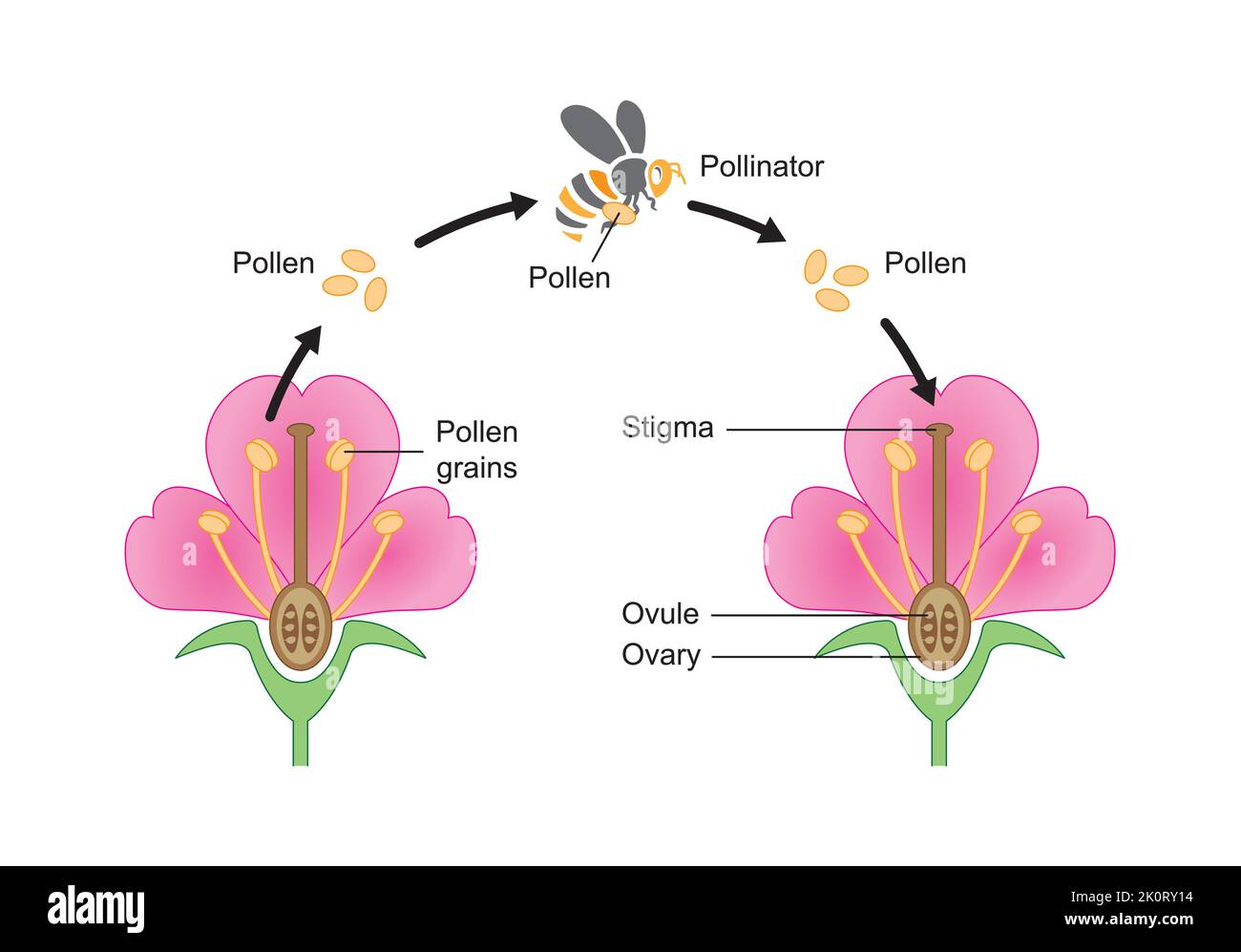 Scientific Designing of Pollination Process. The Most Important Factor in Plants Fertilization. Colorful Symbols. Vector Illustration. Stock Vectorhttps://www.alamy.com/image-license-details/?v=1https://www.alamy.com/scientific-designing-of-pollination-process-the-most-important-factor-in-plants-fertilization-colorful-symbols-vector-illustration-image482416400.html
Scientific Designing of Pollination Process. The Most Important Factor in Plants Fertilization. Colorful Symbols. Vector Illustration. Stock Vectorhttps://www.alamy.com/image-license-details/?v=1https://www.alamy.com/scientific-designing-of-pollination-process-the-most-important-factor-in-plants-fertilization-colorful-symbols-vector-illustration-image482416400.htmlRF2K0RY14–Scientific Designing of Pollination Process. The Most Important Factor in Plants Fertilization. Colorful Symbols. Vector Illustration.
 Pollination, the great work of bees flying from flower to flower Stock Photohttps://www.alamy.com/image-license-details/?v=1https://www.alamy.com/pollination-the-great-work-of-bees-flying-from-flower-to-flower-image231593980.html
Pollination, the great work of bees flying from flower to flower Stock Photohttps://www.alamy.com/image-license-details/?v=1https://www.alamy.com/pollination-the-great-work-of-bees-flying-from-flower-to-flower-image231593980.htmlRFRCP0DG–Pollination, the great work of bees flying from flower to flower
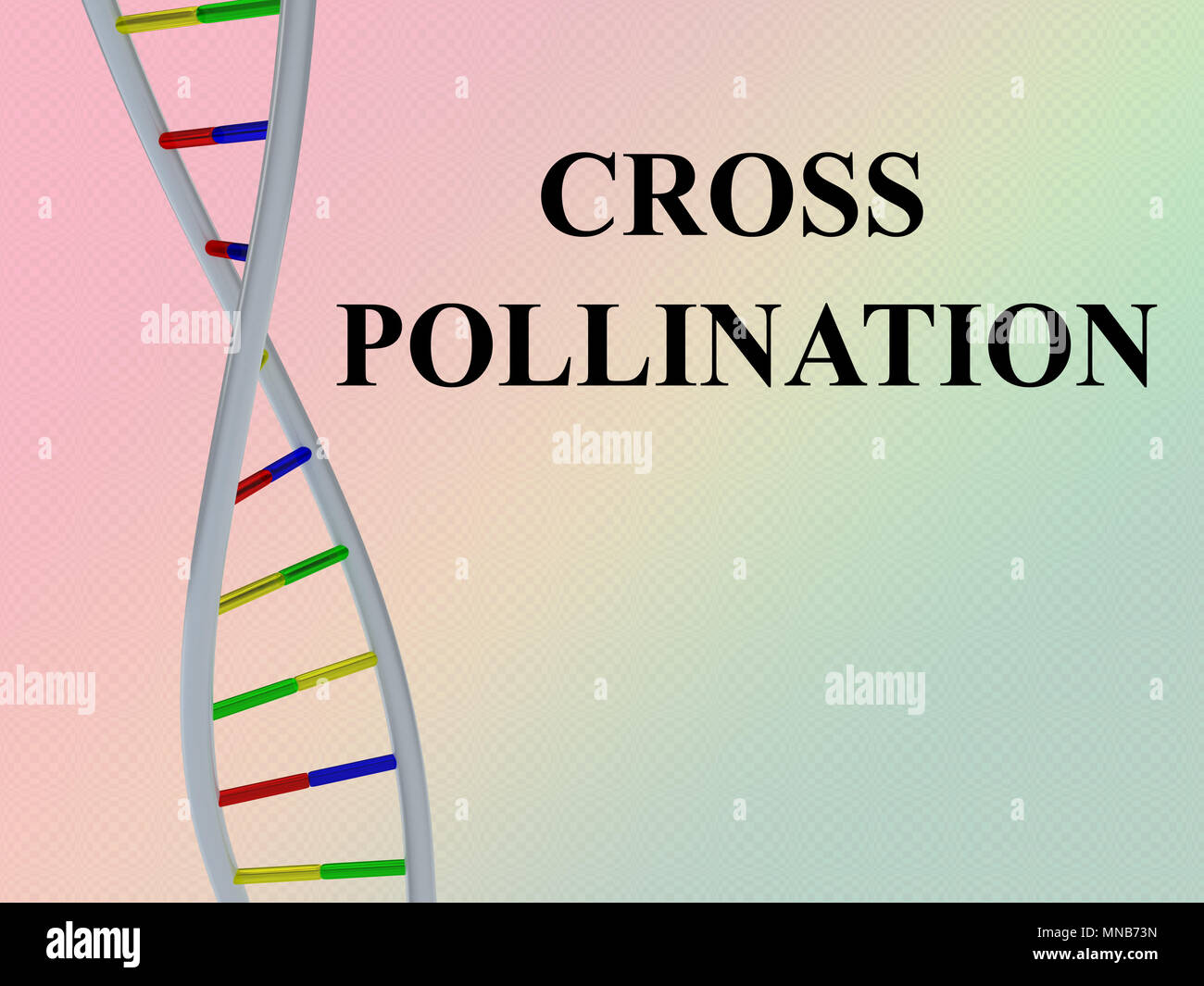 3D illustration of CROSS POLLINATION script with DNA double helix , isolated on colored gradient. Stock Photohttps://www.alamy.com/image-license-details/?v=1https://www.alamy.com/3d-illustration-of-cross-pollination-script-with-dna-double-helix-isolated-on-colored-gradient-image185258521.html
3D illustration of CROSS POLLINATION script with DNA double helix , isolated on colored gradient. Stock Photohttps://www.alamy.com/image-license-details/?v=1https://www.alamy.com/3d-illustration-of-cross-pollination-script-with-dna-double-helix-isolated-on-colored-gradient-image185258521.htmlRFMNB73N–3D illustration of CROSS POLLINATION script with DNA double helix , isolated on colored gradient.
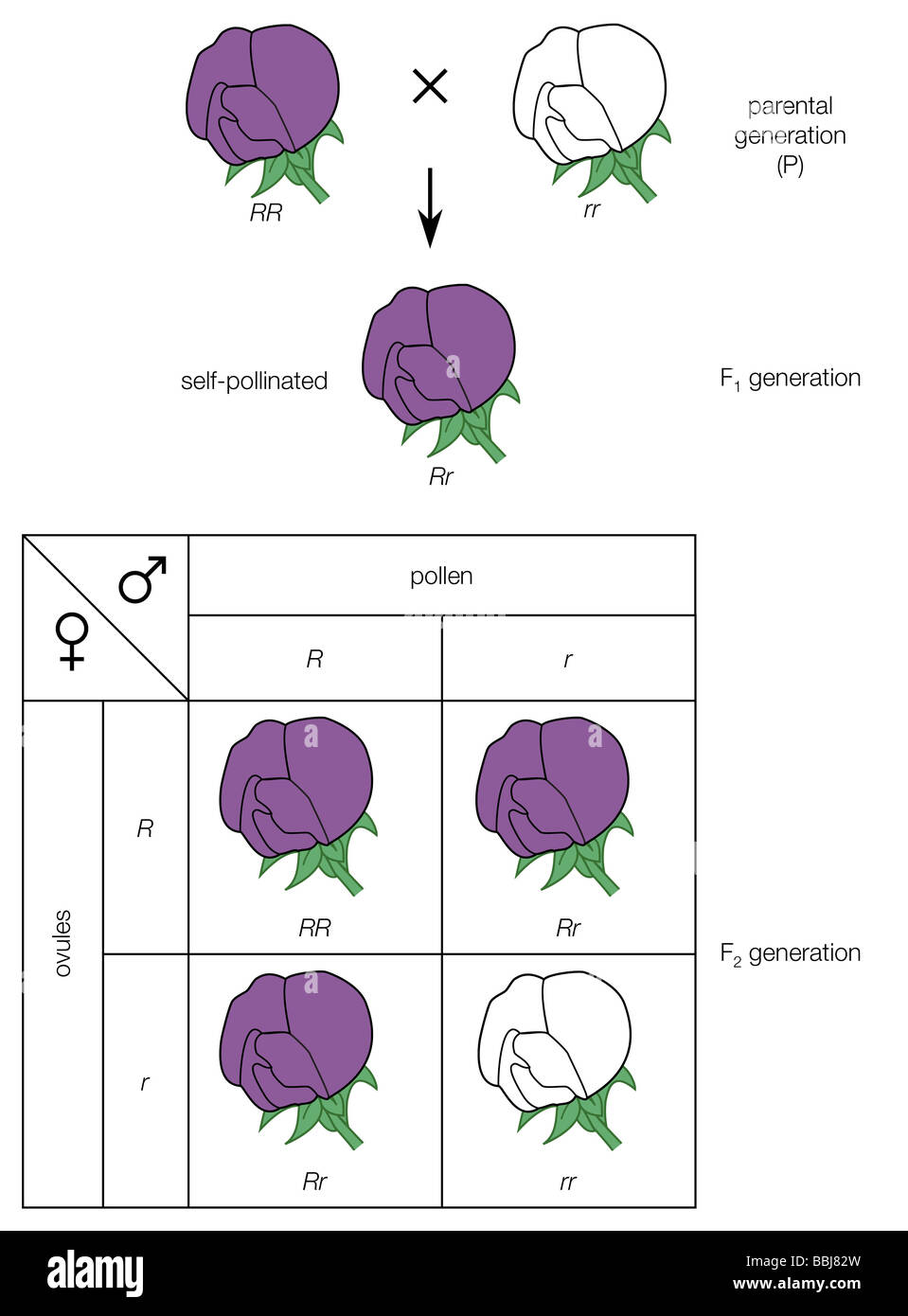 Mendel's law of segregation cross of a purple-flowered and a white-flowered strain of peas. R: purple gene and r: white gene. Stock Photohttps://www.alamy.com/image-license-details/?v=1https://www.alamy.com/stock-photo-mendels-law-of-segregation-cross-of-a-purple-flowered-and-a-white-24373073.html
Mendel's law of segregation cross of a purple-flowered and a white-flowered strain of peas. R: purple gene and r: white gene. Stock Photohttps://www.alamy.com/image-license-details/?v=1https://www.alamy.com/stock-photo-mendels-law-of-segregation-cross-of-a-purple-flowered-and-a-white-24373073.htmlRMBBJ82W–Mendel's law of segregation cross of a purple-flowered and a white-flowered strain of peas. R: purple gene and r: white gene.
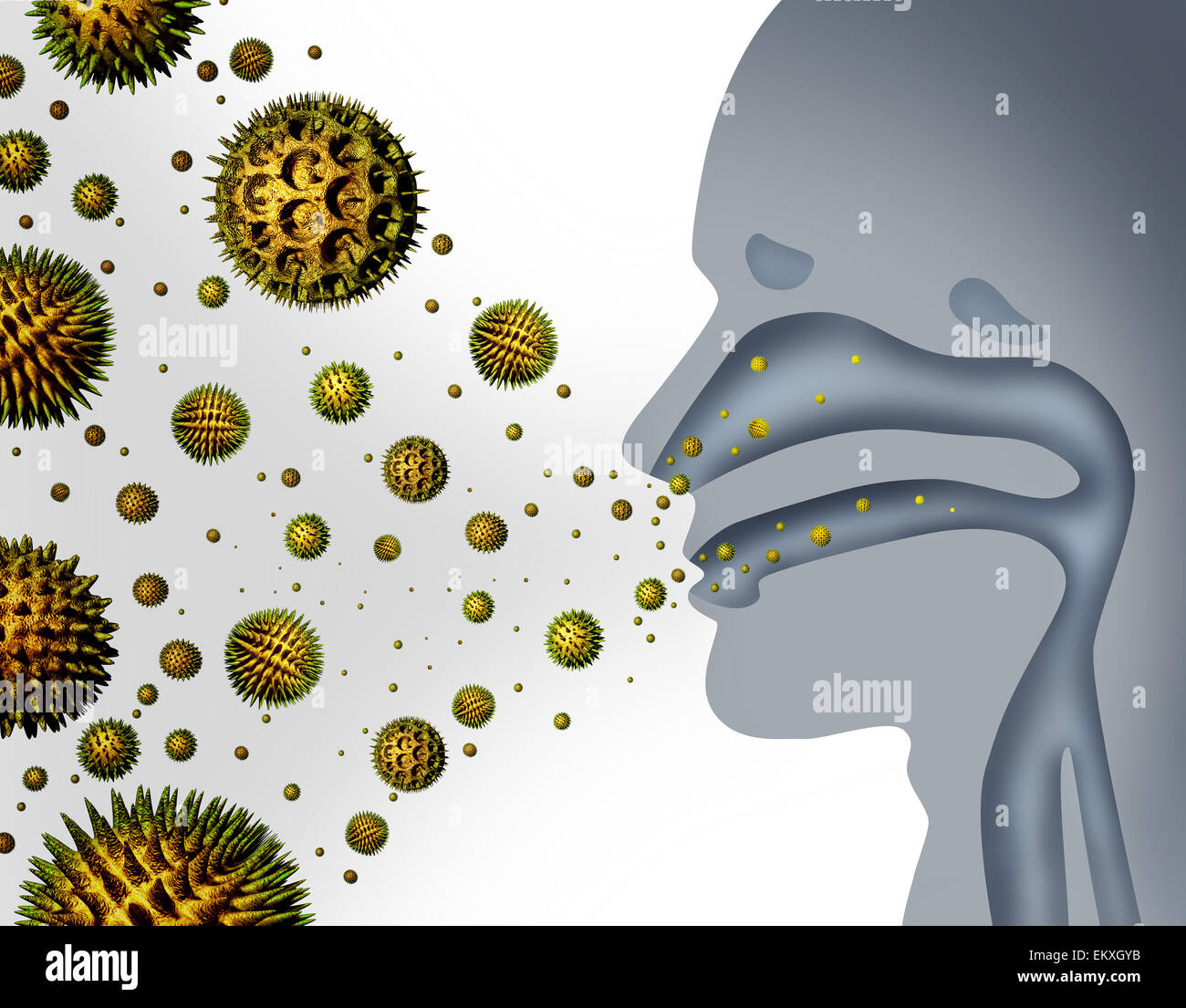 Hay fever and pollen allergies and medical allergy concept as a group of microscopic organic pollination particles flying in the Stock Photohttps://www.alamy.com/image-license-details/?v=1https://www.alamy.com/stock-photo-hay-fever-and-pollen-allergies-and-medical-allergy-concept-as-a-group-81103999.html
Hay fever and pollen allergies and medical allergy concept as a group of microscopic organic pollination particles flying in the Stock Photohttps://www.alamy.com/image-license-details/?v=1https://www.alamy.com/stock-photo-hay-fever-and-pollen-allergies-and-medical-allergy-concept-as-a-group-81103999.htmlRFEKXGYB–Hay fever and pollen allergies and medical allergy concept as a group of microscopic organic pollination particles flying in the
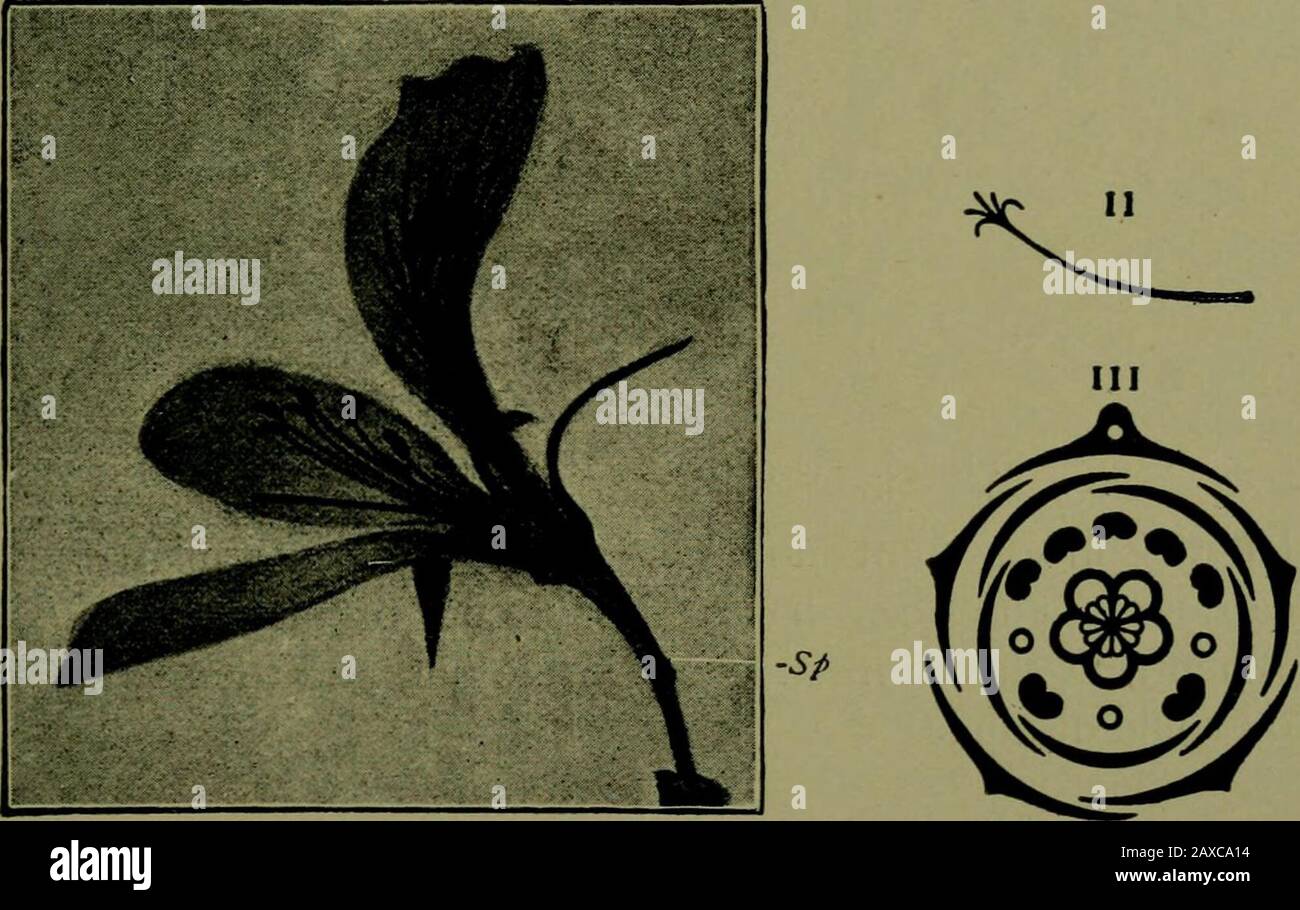 Plants and their ways in South Africa . Fig. 294.—Geraniutn. I. Pistil with honey-glands below the ovary. II.Carpels splitting from the central column of coherent margins. {From Thom6and Bennetts Structural and Physiological Botany .) I.. Fig. 295.—Pelargonium cucullattim. Ait. I. Section through flower, 2^sepals and 2^ petals being removed ; Sp, hollow spur of upper sepal. II. Stylewith stigmas ready for pollination. III. Diagram of flower. (From Edmondsand Marloths Elementary Botany for South Africa .) commonly called Geraniums, from which they differ in the irregularflowers, the stamens, an Stock Photohttps://www.alamy.com/image-license-details/?v=1https://www.alamy.com/plants-and-their-ways-in-south-africa-fig-294geraniutn-i-pistil-with-honey-glands-below-the-ovary-iicarpels-splitting-from-the-central-column-of-coherent-margins-from-thom6and-bennetts-structural-and-physiological-botany-i-fig-295pelargonium-cucullattim-ait-i-section-through-flower-2sepals-and-2-petals-being-removed-sp-hollow-spur-of-upper-sepal-ii-stylewith-stigmas-ready-for-pollination-iii-diagram-of-flower-from-edmondsand-marloths-elementary-botany-for-south-africa-commonly-called-geraniums-from-which-they-differ-in-the-irregularflowers-the-stamens-an-image343249344.html
Plants and their ways in South Africa . Fig. 294.—Geraniutn. I. Pistil with honey-glands below the ovary. II.Carpels splitting from the central column of coherent margins. {From Thom6and Bennetts Structural and Physiological Botany .) I.. Fig. 295.—Pelargonium cucullattim. Ait. I. Section through flower, 2^sepals and 2^ petals being removed ; Sp, hollow spur of upper sepal. II. Stylewith stigmas ready for pollination. III. Diagram of flower. (From Edmondsand Marloths Elementary Botany for South Africa .) commonly called Geraniums, from which they differ in the irregularflowers, the stamens, an Stock Photohttps://www.alamy.com/image-license-details/?v=1https://www.alamy.com/plants-and-their-ways-in-south-africa-fig-294geraniutn-i-pistil-with-honey-glands-below-the-ovary-iicarpels-splitting-from-the-central-column-of-coherent-margins-from-thom6and-bennetts-structural-and-physiological-botany-i-fig-295pelargonium-cucullattim-ait-i-section-through-flower-2sepals-and-2-petals-being-removed-sp-hollow-spur-of-upper-sepal-ii-stylewith-stigmas-ready-for-pollination-iii-diagram-of-flower-from-edmondsand-marloths-elementary-botany-for-south-africa-commonly-called-geraniums-from-which-they-differ-in-the-irregularflowers-the-stamens-an-image343249344.htmlRM2AXCA14–Plants and their ways in South Africa . Fig. 294.—Geraniutn. I. Pistil with honey-glands below the ovary. II.Carpels splitting from the central column of coherent margins. {From Thom6and Bennetts Structural and Physiological Botany .) I.. Fig. 295.—Pelargonium cucullattim. Ait. I. Section through flower, 2^sepals and 2^ petals being removed ; Sp, hollow spur of upper sepal. II. Stylewith stigmas ready for pollination. III. Diagram of flower. (From Edmondsand Marloths Elementary Botany for South Africa .) commonly called Geraniums, from which they differ in the irregularflowers, the stamens, an
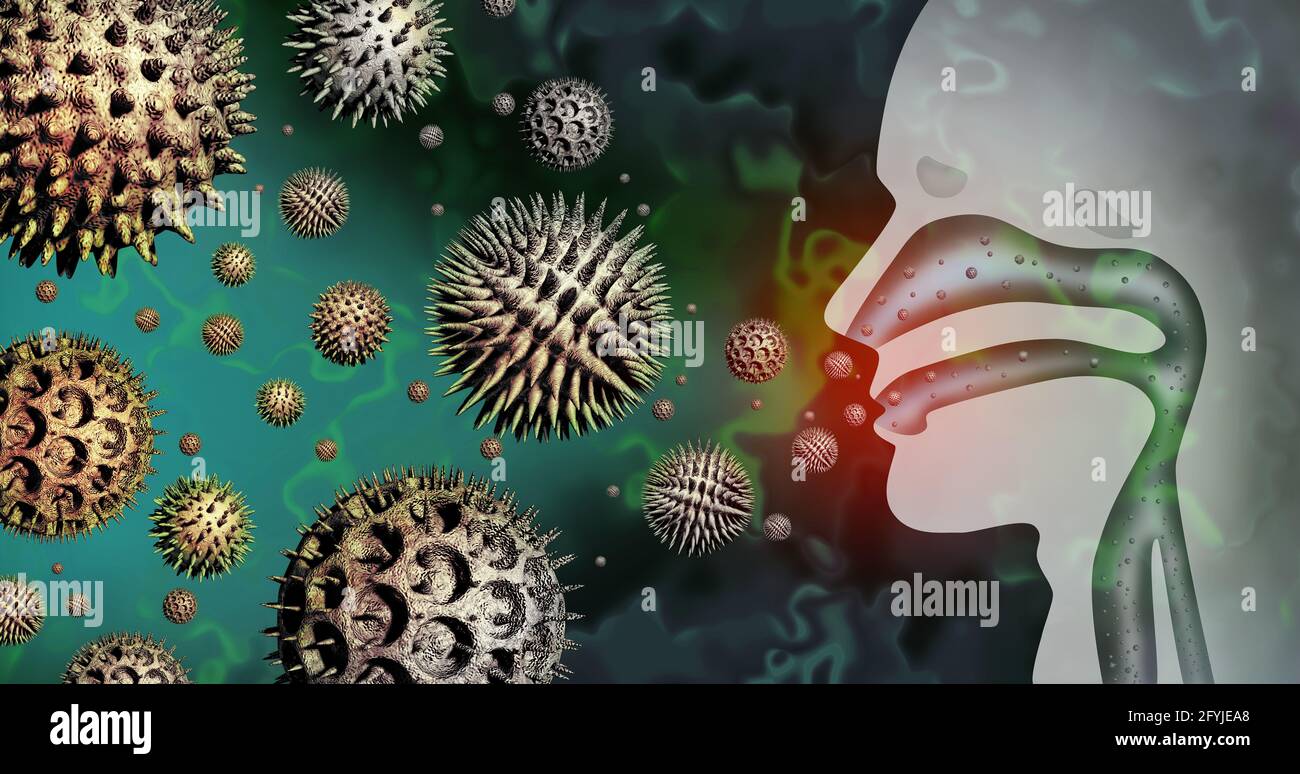 Pollen allergy symptoms and human seasonal allergies or hay fever allergic reaction as a medical concept with a group of microscopic organic. Stock Photohttps://www.alamy.com/image-license-details/?v=1https://www.alamy.com/pollen-allergy-symptoms-and-human-seasonal-allergies-or-hay-fever-allergic-reaction-as-a-medical-concept-with-a-group-of-microscopic-organic-image430050944.html
Pollen allergy symptoms and human seasonal allergies or hay fever allergic reaction as a medical concept with a group of microscopic organic. Stock Photohttps://www.alamy.com/image-license-details/?v=1https://www.alamy.com/pollen-allergy-symptoms-and-human-seasonal-allergies-or-hay-fever-allergic-reaction-as-a-medical-concept-with-a-group-of-microscopic-organic-image430050944.htmlRF2FYJEA8–Pollen allergy symptoms and human seasonal allergies or hay fever allergic reaction as a medical concept with a group of microscopic organic.
 Diagram of pollination of flowering plants illustration Stock Vectorhttps://www.alamy.com/image-license-details/?v=1https://www.alamy.com/diagram-of-pollination-of-flowering-plants-illustration-image462238212.html
Diagram of pollination of flowering plants illustration Stock Vectorhttps://www.alamy.com/image-license-details/?v=1https://www.alamy.com/diagram-of-pollination-of-flowering-plants-illustration-image462238212.htmlRF2HT0NFG–Diagram of pollination of flowering plants illustration
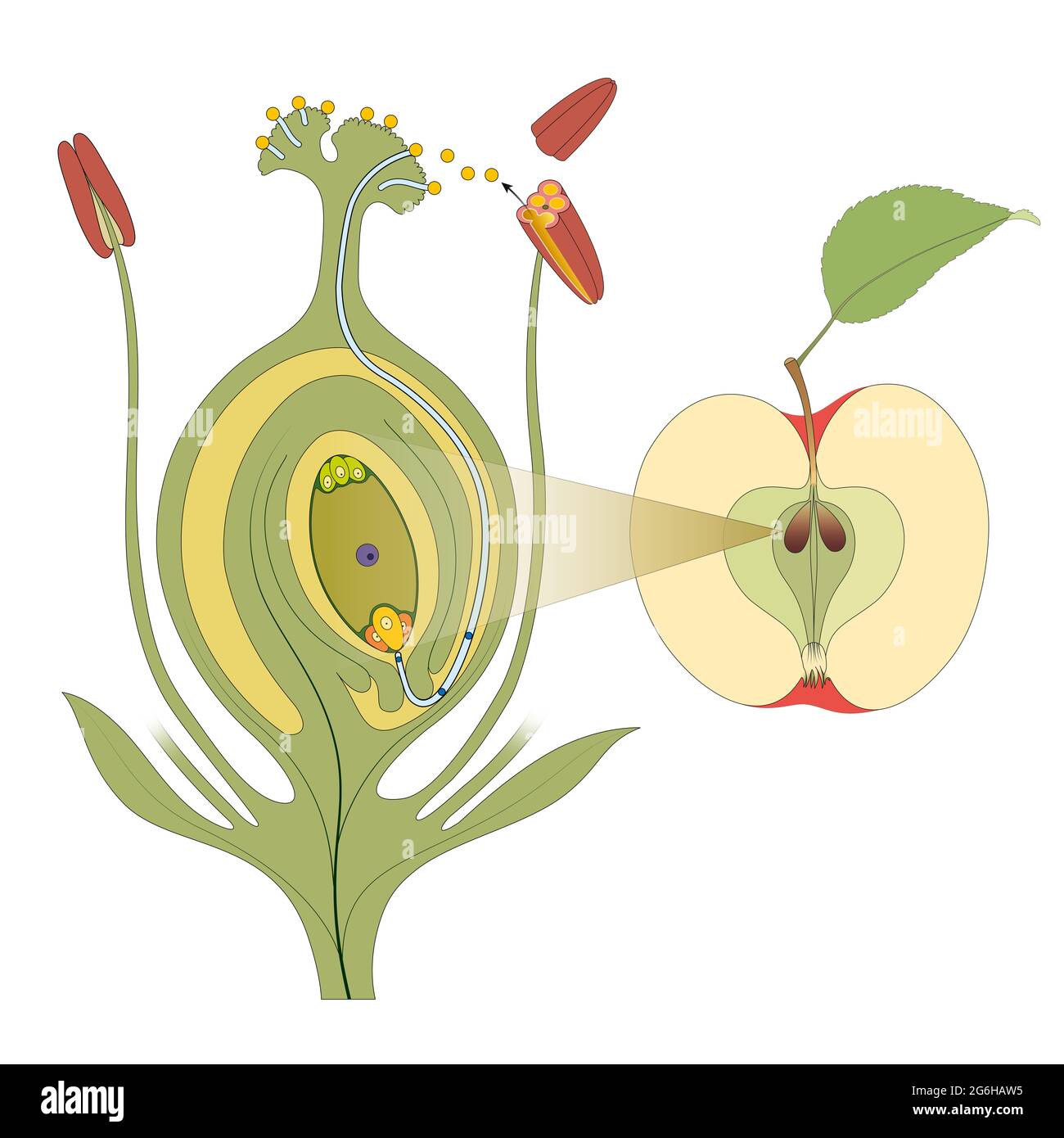 Plant fertilization. From flower to fruits Stock Photohttps://www.alamy.com/image-license-details/?v=1https://www.alamy.com/plant-fertilization-from-flower-to-fruits-image434328865.html
Plant fertilization. From flower to fruits Stock Photohttps://www.alamy.com/image-license-details/?v=1https://www.alamy.com/plant-fertilization-from-flower-to-fruits-image434328865.htmlRF2G6HAW5–Plant fertilization. From flower to fruits
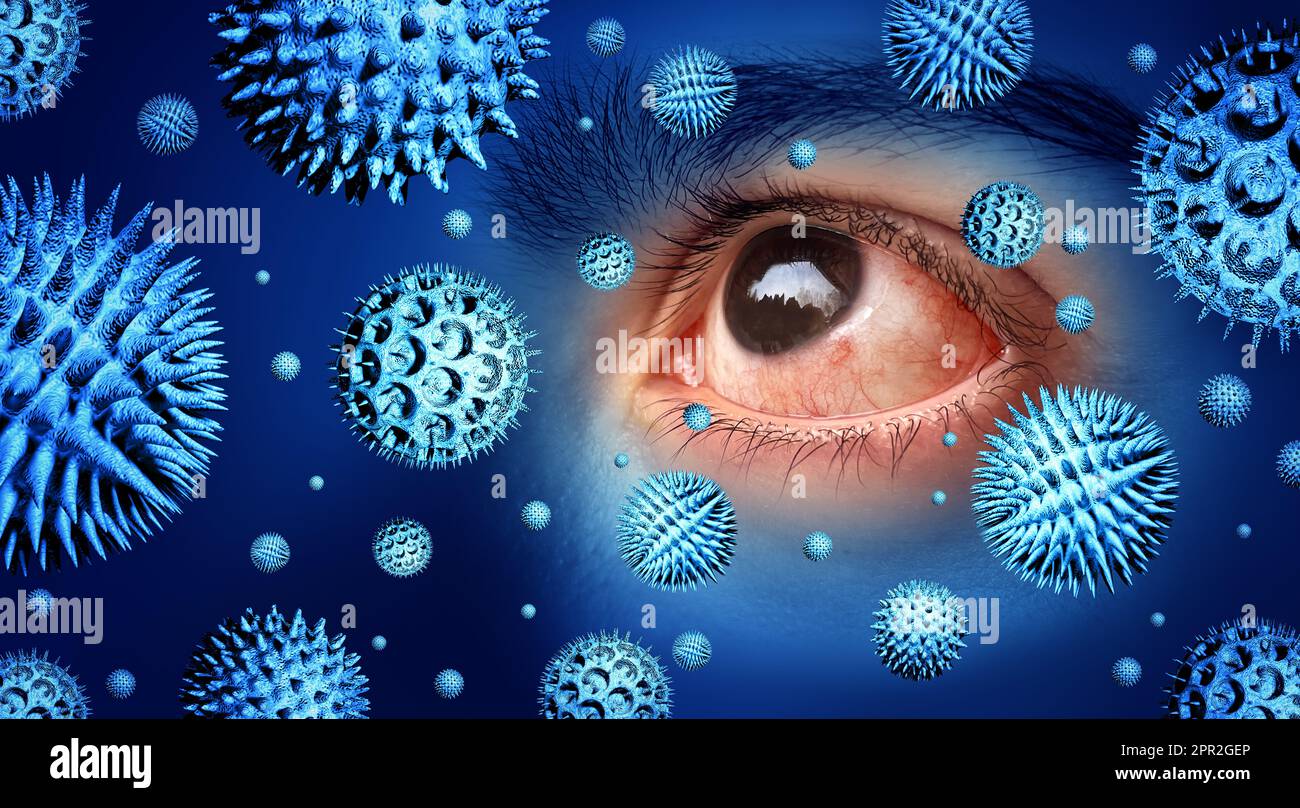 Pollen allergies symptoms and seasonal allergy or hay fever allergy and medical concept as a group of microscopic particles as eye Conjunctivitis Stock Photohttps://www.alamy.com/image-license-details/?v=1https://www.alamy.com/pollen-allergies-symptoms-and-seasonal-allergy-or-hay-fever-allergy-and-medical-concept-as-a-group-of-microscopic-particles-as-eye-conjunctivitis-image547715358.html
Pollen allergies symptoms and seasonal allergy or hay fever allergy and medical concept as a group of microscopic particles as eye Conjunctivitis Stock Photohttps://www.alamy.com/image-license-details/?v=1https://www.alamy.com/pollen-allergies-symptoms-and-seasonal-allergy-or-hay-fever-allergy-and-medical-concept-as-a-group-of-microscopic-particles-as-eye-conjunctivitis-image547715358.htmlRF2PR2GEP–Pollen allergies symptoms and seasonal allergy or hay fever allergy and medical concept as a group of microscopic particles as eye Conjunctivitis
 A picture showing a diagram of Trillium flower which is a genus of around 40-50 species of perennial herbaceous plants, native to the temperate region Stock Vectorhttps://www.alamy.com/image-license-details/?v=1https://www.alamy.com/a-picture-showing-a-diagram-of-trillium-flower-which-is-a-genus-of-around-40-50-species-of-perennial-herbaceous-plants-native-to-the-temperate-region-image244543132.html
A picture showing a diagram of Trillium flower which is a genus of around 40-50 species of perennial herbaceous plants, native to the temperate region Stock Vectorhttps://www.alamy.com/image-license-details/?v=1https://www.alamy.com/a-picture-showing-a-diagram-of-trillium-flower-which-is-a-genus-of-around-40-50-species-of-perennial-herbaceous-plants-native-to-the-temperate-region-image244543132.htmlRFT5RW78–A picture showing a diagram of Trillium flower which is a genus of around 40-50 species of perennial herbaceous plants, native to the temperate region
 Disadvantages of gmo loop circle infographic template Stock Vectorhttps://www.alamy.com/image-license-details/?v=1https://www.alamy.com/disadvantages-of-gmo-loop-circle-infographic-template-image459148709.html
Disadvantages of gmo loop circle infographic template Stock Vectorhttps://www.alamy.com/image-license-details/?v=1https://www.alamy.com/disadvantages-of-gmo-loop-circle-infographic-template-image459148709.htmlRF2HK00T5–Disadvantages of gmo loop circle infographic template
 Pollination mechanism, illustration. Stock Photohttps://www.alamy.com/image-license-details/?v=1https://www.alamy.com/pollination-mechanism-illustration-image613922913.html
Pollination mechanism, illustration. Stock Photohttps://www.alamy.com/image-license-details/?v=1https://www.alamy.com/pollination-mechanism-illustration-image613922913.htmlRF2XJPGX9–Pollination mechanism, illustration.
![Infographics of the flower parts and their classification. Process of pollination and seed formation. [Adobe Illustrator (.ai); 2480x3248]. Stock Photo Infographics of the flower parts and their classification. Process of pollination and seed formation. [Adobe Illustrator (.ai); 2480x3248]. Stock Photo](https://c8.alamy.com/comp/2NEC4PP/infographics-of-the-flower-parts-and-their-classification-process-of-pollination-and-seed-formation-adobe-illustrator-ai-2480x3248-2NEC4PP.jpg) Infographics of the flower parts and their classification. Process of pollination and seed formation. [Adobe Illustrator (.ai); 2480x3248]. Stock Photohttps://www.alamy.com/image-license-details/?v=1https://www.alamy.com/infographics-of-the-flower-parts-and-their-classification-process-of-pollination-and-seed-formation-adobe-illustrator-ai-2480x3248-image525183422.html
Infographics of the flower parts and their classification. Process of pollination and seed formation. [Adobe Illustrator (.ai); 2480x3248]. Stock Photohttps://www.alamy.com/image-license-details/?v=1https://www.alamy.com/infographics-of-the-flower-parts-and-their-classification-process-of-pollination-and-seed-formation-adobe-illustrator-ai-2480x3248-image525183422.htmlRM2NEC4PP–Infographics of the flower parts and their classification. Process of pollination and seed formation. [Adobe Illustrator (.ai); 2480x3248].
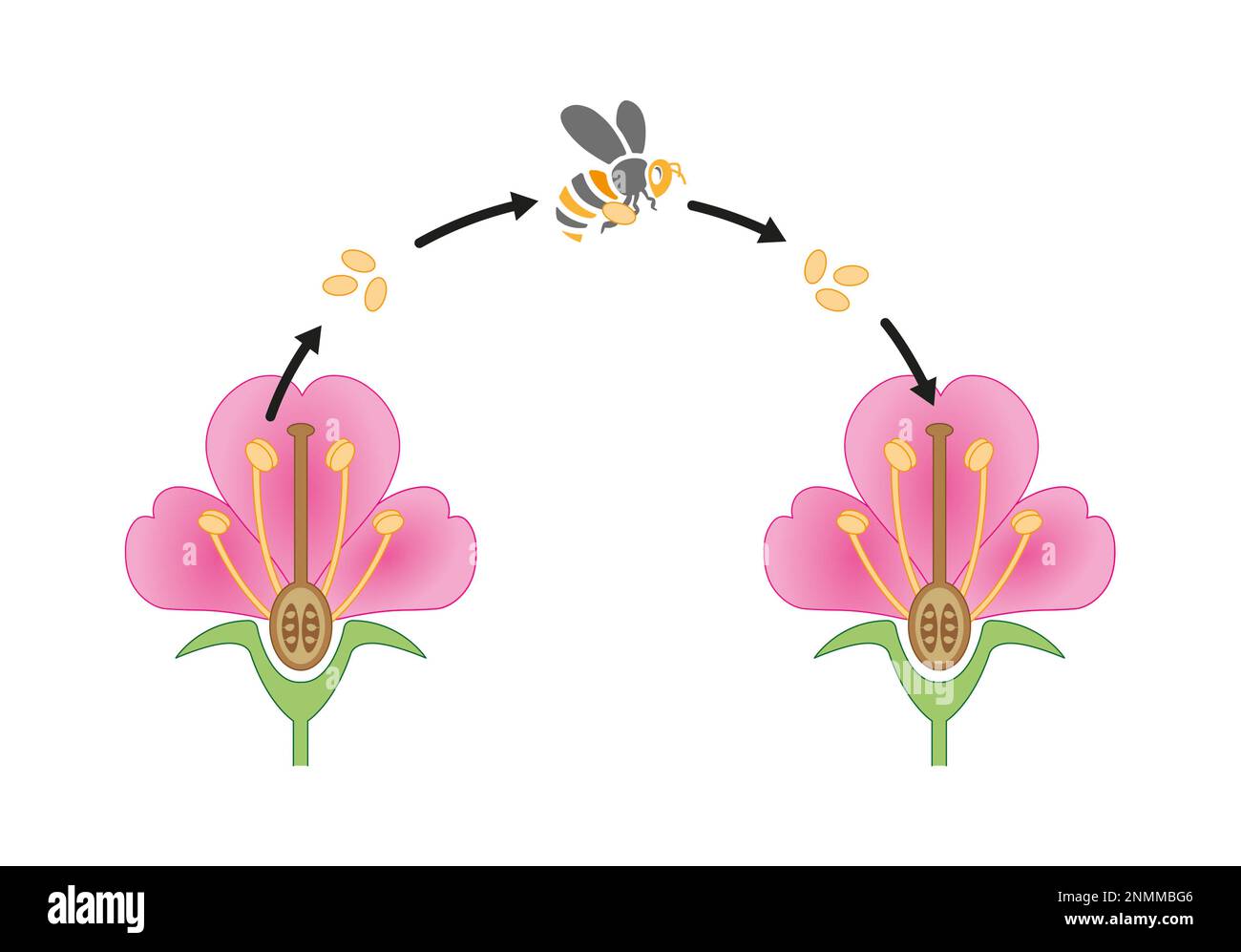 Insect pollination, illustration Stock Photohttps://www.alamy.com/image-license-details/?v=1https://www.alamy.com/insect-pollination-illustration-image529052278.html
Insect pollination, illustration Stock Photohttps://www.alamy.com/image-license-details/?v=1https://www.alamy.com/insect-pollination-illustration-image529052278.htmlRF2NMMBG6–Insect pollination, illustration
 Dna plant flower. Natural flora ecology. Generate Ai Stock Photohttps://www.alamy.com/image-license-details/?v=1https://www.alamy.com/dna-plant-flower-natural-flora-ecology-generate-ai-image638690797.html
Dna plant flower. Natural flora ecology. Generate Ai Stock Photohttps://www.alamy.com/image-license-details/?v=1https://www.alamy.com/dna-plant-flower-natural-flora-ecology-generate-ai-image638690797.htmlRF2S32THH–Dna plant flower. Natural flora ecology. Generate Ai
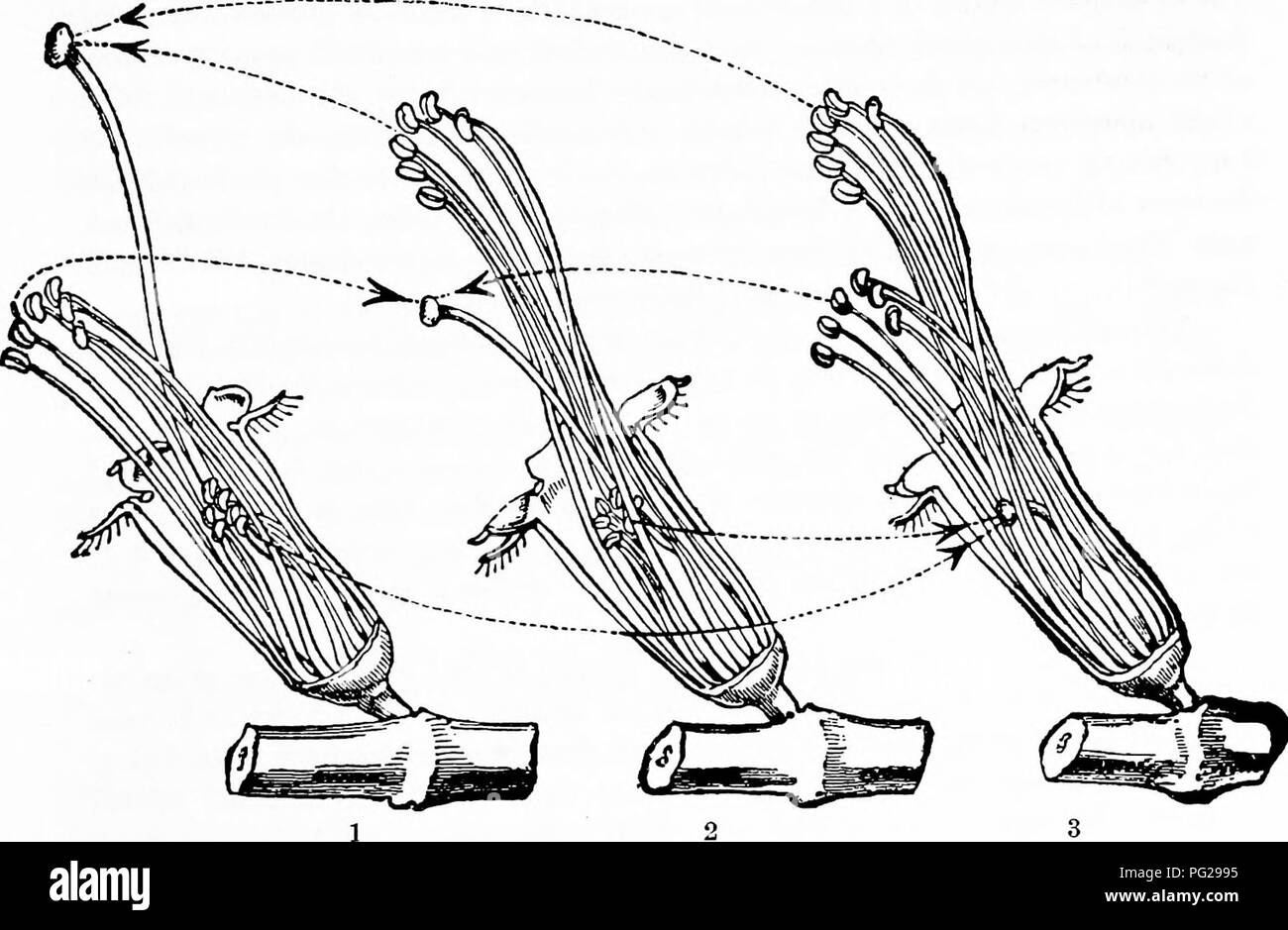 . Handbook of flower pollination : based upon Hermann MuÌller's work 'The fertilisation of flowers by insects' . Fertilization of plants. HETEROSTYLY 47 Among dimorphous flowers four modes of fertilization are possible, two of them legitimate, and two illegitimate. Darwin has represented the possible legitimate and illegitimate unions by the accompanying diagram (Fig. 5). Eighteen modes of fertilization are possible among trimorphous flowers, and of these six are legitimate. If we indicate the longest organs { S and j) by /, the medium ones by m, and the shortest by s, and use a, b, and c to r Stock Photohttps://www.alamy.com/image-license-details/?v=1https://www.alamy.com/handbook-of-flower-pollination-based-upon-hermann-mullers-work-the-fertilisation-of-flowers-by-insects-fertilization-of-plants-heterostyly-47-among-dimorphous-flowers-four-modes-of-fertilization-are-possible-two-of-them-legitimate-and-two-illegitimate-darwin-has-represented-the-possible-legitimate-and-illegitimate-unions-by-the-accompanying-diagram-fig-5-eighteen-modes-of-fertilization-are-possible-among-trimorphous-flowers-and-of-these-six-are-legitimate-if-we-indicate-the-longest-organs-s-and-j-by-the-medium-ones-by-m-and-the-shortest-by-s-and-use-a-b-and-c-to-r-image216410129.html
. Handbook of flower pollination : based upon Hermann MuÌller's work 'The fertilisation of flowers by insects' . Fertilization of plants. HETEROSTYLY 47 Among dimorphous flowers four modes of fertilization are possible, two of them legitimate, and two illegitimate. Darwin has represented the possible legitimate and illegitimate unions by the accompanying diagram (Fig. 5). Eighteen modes of fertilization are possible among trimorphous flowers, and of these six are legitimate. If we indicate the longest organs { S and j) by /, the medium ones by m, and the shortest by s, and use a, b, and c to r Stock Photohttps://www.alamy.com/image-license-details/?v=1https://www.alamy.com/handbook-of-flower-pollination-based-upon-hermann-mullers-work-the-fertilisation-of-flowers-by-insects-fertilization-of-plants-heterostyly-47-among-dimorphous-flowers-four-modes-of-fertilization-are-possible-two-of-them-legitimate-and-two-illegitimate-darwin-has-represented-the-possible-legitimate-and-illegitimate-unions-by-the-accompanying-diagram-fig-5-eighteen-modes-of-fertilization-are-possible-among-trimorphous-flowers-and-of-these-six-are-legitimate-if-we-indicate-the-longest-organs-s-and-j-by-the-medium-ones-by-m-and-the-shortest-by-s-and-use-a-b-and-c-to-r-image216410129.htmlRMPG2995–. Handbook of flower pollination : based upon Hermann MuÌller's work 'The fertilisation of flowers by insects' . Fertilization of plants. HETEROSTYLY 47 Among dimorphous flowers four modes of fertilization are possible, two of them legitimate, and two illegitimate. Darwin has represented the possible legitimate and illegitimate unions by the accompanying diagram (Fig. 5). Eighteen modes of fertilization are possible among trimorphous flowers, and of these six are legitimate. If we indicate the longest organs { S and j) by /, the medium ones by m, and the shortest by s, and use a, b, and c to r
 Album des orchidées de l'Europe centrale et septentrionale, Genève, Librairie Georg, 1899, Europe, Orchidaceae, The New York Botanical Garden, pictorial works, Limodorum abortivum, This illustration features the Limodorum abortivum, commonly known as the violet limodore, depicted alongside various stages of its growth. The drawing includes detailed representations of the plant's flowers, showing their tubular shapes and delicate petals, as well as the underground structure, highlighting the root system. Accompanying the main plant are labels and a small diagram of its pollination mechanism, em Stock Photohttps://www.alamy.com/image-license-details/?v=1https://www.alamy.com/album-des-orchides-de-leurope-centrale-et-septentrionale-genve-librairie-georg-1899-europe-orchidaceae-the-new-york-botanical-garden-pictorial-works-limodorum-abortivum-this-illustration-features-the-limodorum-abortivum-commonly-known-as-the-violet-limodore-depicted-alongside-various-stages-of-its-growth-the-drawing-includes-detailed-representations-of-the-plants-flowers-showing-their-tubular-shapes-and-delicate-petals-as-well-as-the-underground-structure-highlighting-the-root-system-accompanying-the-main-plant-are-labels-and-a-small-diagram-of-its-pollination-mechanism-em-image636056150.html
Album des orchidées de l'Europe centrale et septentrionale, Genève, Librairie Georg, 1899, Europe, Orchidaceae, The New York Botanical Garden, pictorial works, Limodorum abortivum, This illustration features the Limodorum abortivum, commonly known as the violet limodore, depicted alongside various stages of its growth. The drawing includes detailed representations of the plant's flowers, showing their tubular shapes and delicate petals, as well as the underground structure, highlighting the root system. Accompanying the main plant are labels and a small diagram of its pollination mechanism, em Stock Photohttps://www.alamy.com/image-license-details/?v=1https://www.alamy.com/album-des-orchides-de-leurope-centrale-et-septentrionale-genve-librairie-georg-1899-europe-orchidaceae-the-new-york-botanical-garden-pictorial-works-limodorum-abortivum-this-illustration-features-the-limodorum-abortivum-commonly-known-as-the-violet-limodore-depicted-alongside-various-stages-of-its-growth-the-drawing-includes-detailed-representations-of-the-plants-flowers-showing-their-tubular-shapes-and-delicate-petals-as-well-as-the-underground-structure-highlighting-the-root-system-accompanying-the-main-plant-are-labels-and-a-small-diagram-of-its-pollination-mechanism-em-image636056150.htmlRM2YXPT32–Album des orchidées de l'Europe centrale et septentrionale, Genève, Librairie Georg, 1899, Europe, Orchidaceae, The New York Botanical Garden, pictorial works, Limodorum abortivum, This illustration features the Limodorum abortivum, commonly known as the violet limodore, depicted alongside various stages of its growth. The drawing includes detailed representations of the plant's flowers, showing their tubular shapes and delicate petals, as well as the underground structure, highlighting the root system. Accompanying the main plant are labels and a small diagram of its pollination mechanism, em
 . Elementary botany . Fig, s*> Diagram "t Bower of canua. tionofthe stamens in two distinct types. The number of orchid species is >vi large, and the majority are found in tropical countries. 500. Related to the orchids are the iris family, in which the stigma is ex panded into the form of a petal, and the canna family. In the (.anna the flower is irregular (see figs, 4^7, 468) and the ovary is inferior, (See chap- ter on pollination. Tart III, for description of the canna llowor.) Stock Photohttps://www.alamy.com/image-license-details/?v=1https://www.alamy.com/elementary-botany-fig-sgt-diagram-quott-bower-of-canua-tionofthe-stamens-in-two-distinct-types-the-number-of-orchid-species-is-gtvi-large-and-the-majority-are-found-in-tropical-countries-500-related-to-the-orchids-are-the-iris-family-in-which-the-stigma-is-ex-panded-into-the-form-of-a-petal-and-the-canna-family-in-the-anna-the-flower-is-irregular-see-figs-47-468-and-the-ovary-is-inferior-see-chap-ter-on-pollination-tart-iii-for-description-of-the-canna-llowor-image178418724.html
. Elementary botany . Fig, s*> Diagram "t Bower of canua. tionofthe stamens in two distinct types. The number of orchid species is >vi large, and the majority are found in tropical countries. 500. Related to the orchids are the iris family, in which the stigma is ex panded into the form of a petal, and the canna family. In the (.anna the flower is irregular (see figs, 4^7, 468) and the ovary is inferior, (See chap- ter on pollination. Tart III, for description of the canna llowor.) Stock Photohttps://www.alamy.com/image-license-details/?v=1https://www.alamy.com/elementary-botany-fig-sgt-diagram-quott-bower-of-canua-tionofthe-stamens-in-two-distinct-types-the-number-of-orchid-species-is-gtvi-large-and-the-majority-are-found-in-tropical-countries-500-related-to-the-orchids-are-the-iris-family-in-which-the-stigma-is-ex-panded-into-the-form-of-a-petal-and-the-canna-family-in-the-anna-the-flower-is-irregular-see-figs-47-468-and-the-ovary-is-inferior-see-chap-ter-on-pollination-tart-iii-for-description-of-the-canna-llowor-image178418724.htmlRMMA7JW8–. Elementary botany . Fig, s*> Diagram "t Bower of canua. tionofthe stamens in two distinct types. The number of orchid species is >vi large, and the majority are found in tropical countries. 500. Related to the orchids are the iris family, in which the stigma is ex panded into the form of a petal, and the canna family. In the (.anna the flower is irregular (see figs, 4^7, 468) and the ovary is inferior, (See chap- ter on pollination. Tart III, for description of the canna llowor.)
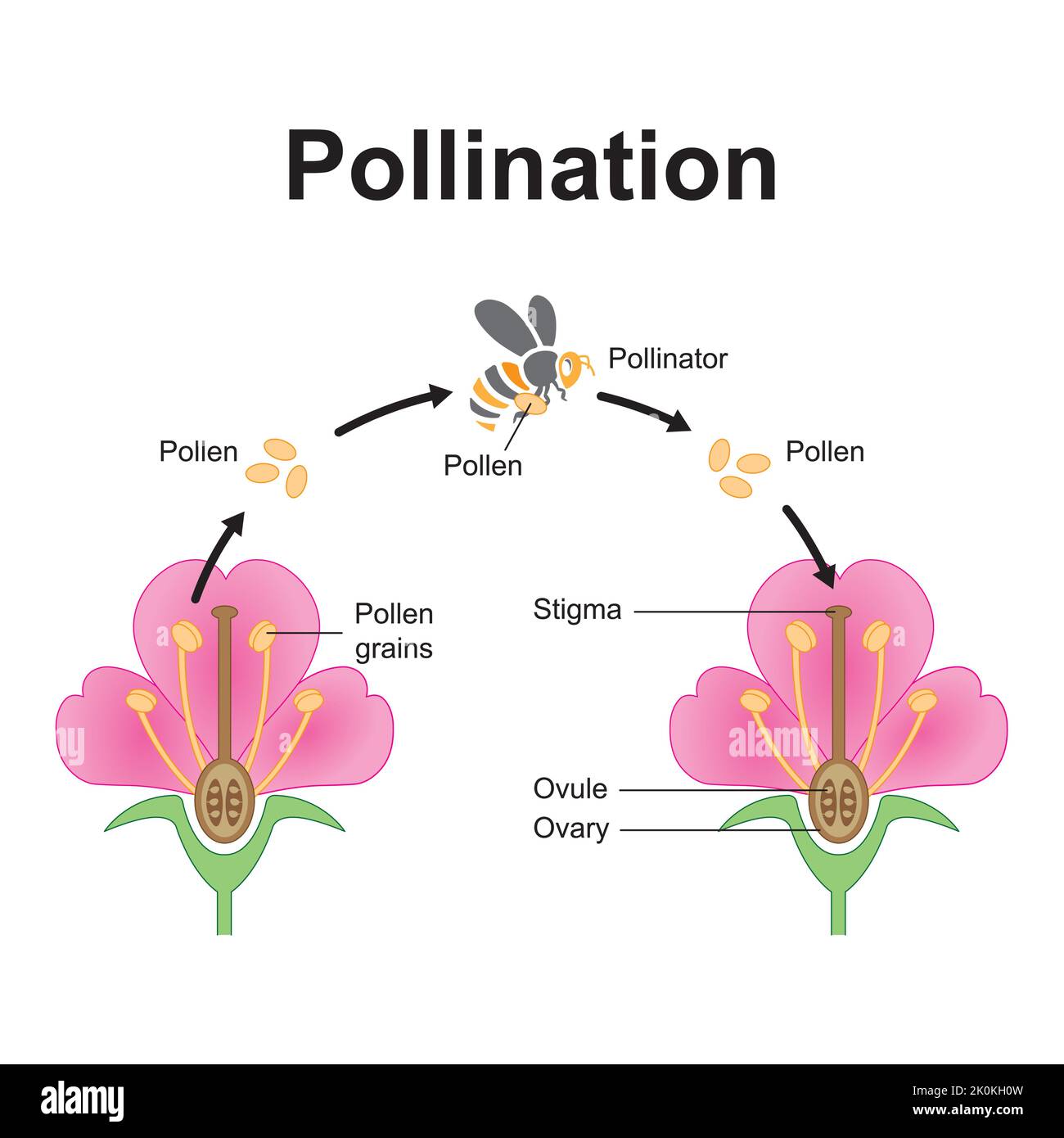 Scientific Designing of Pollination Process. The Most Important Factor in Plants Fertilization. Colorful Symbols. Vector Illustration. Stock Vectorhttps://www.alamy.com/image-license-details/?v=1https://www.alamy.com/scientific-designing-of-pollination-process-the-most-important-factor-in-plants-fertilization-colorful-symbols-vector-illustration-image482320745.html
Scientific Designing of Pollination Process. The Most Important Factor in Plants Fertilization. Colorful Symbols. Vector Illustration. Stock Vectorhttps://www.alamy.com/image-license-details/?v=1https://www.alamy.com/scientific-designing-of-pollination-process-the-most-important-factor-in-plants-fertilization-colorful-symbols-vector-illustration-image482320745.htmlRF2K0KH0W–Scientific Designing of Pollination Process. The Most Important Factor in Plants Fertilization. Colorful Symbols. Vector Illustration.
 . Handbook of flower pollination : based upon Hermann MuÌller's work 'The fertilisation of flowers by insects' . Fertilization of plants. HETEROSTYLY 47 Among dimorphous flowers four modes of fertilization are possible, two of them legitimate, and two illegitimate. Darwin has represented the possible legitimate and illegitimate unions by the accompanying diagram (Fig. 5). Eighteen modes of fertilization are possible among trimorphous flowers, and of these six are legitimate. If we indicate the longest organs { S and j) by /, the medium ones by m, and the shortest by s, and use a, b, and c to r Stock Photohttps://www.alamy.com/image-license-details/?v=1https://www.alamy.com/handbook-of-flower-pollination-based-upon-hermann-mullers-work-the-fertilisation-of-flowers-by-insects-fertilization-of-plants-heterostyly-47-among-dimorphous-flowers-four-modes-of-fertilization-are-possible-two-of-them-legitimate-and-two-illegitimate-darwin-has-represented-the-possible-legitimate-and-illegitimate-unions-by-the-accompanying-diagram-fig-5-eighteen-modes-of-fertilization-are-possible-among-trimorphous-flowers-and-of-these-six-are-legitimate-if-we-indicate-the-longest-organs-s-and-j-by-the-medium-ones-by-m-and-the-shortest-by-s-and-use-a-b-and-c-to-r-image232054233.html
. Handbook of flower pollination : based upon Hermann MuÌller's work 'The fertilisation of flowers by insects' . Fertilization of plants. HETEROSTYLY 47 Among dimorphous flowers four modes of fertilization are possible, two of them legitimate, and two illegitimate. Darwin has represented the possible legitimate and illegitimate unions by the accompanying diagram (Fig. 5). Eighteen modes of fertilization are possible among trimorphous flowers, and of these six are legitimate. If we indicate the longest organs { S and j) by /, the medium ones by m, and the shortest by s, and use a, b, and c to r Stock Photohttps://www.alamy.com/image-license-details/?v=1https://www.alamy.com/handbook-of-flower-pollination-based-upon-hermann-mullers-work-the-fertilisation-of-flowers-by-insects-fertilization-of-plants-heterostyly-47-among-dimorphous-flowers-four-modes-of-fertilization-are-possible-two-of-them-legitimate-and-two-illegitimate-darwin-has-represented-the-possible-legitimate-and-illegitimate-unions-by-the-accompanying-diagram-fig-5-eighteen-modes-of-fertilization-are-possible-among-trimorphous-flowers-and-of-these-six-are-legitimate-if-we-indicate-the-longest-organs-s-and-j-by-the-medium-ones-by-m-and-the-shortest-by-s-and-use-a-b-and-c-to-r-image232054233.htmlRMRDEYF5–. Handbook of flower pollination : based upon Hermann MuÌller's work 'The fertilisation of flowers by insects' . Fertilization of plants. HETEROSTYLY 47 Among dimorphous flowers four modes of fertilization are possible, two of them legitimate, and two illegitimate. Darwin has represented the possible legitimate and illegitimate unions by the accompanying diagram (Fig. 5). Eighteen modes of fertilization are possible among trimorphous flowers, and of these six are legitimate. If we indicate the longest organs { S and j) by /, the medium ones by m, and the shortest by s, and use a, b, and c to r
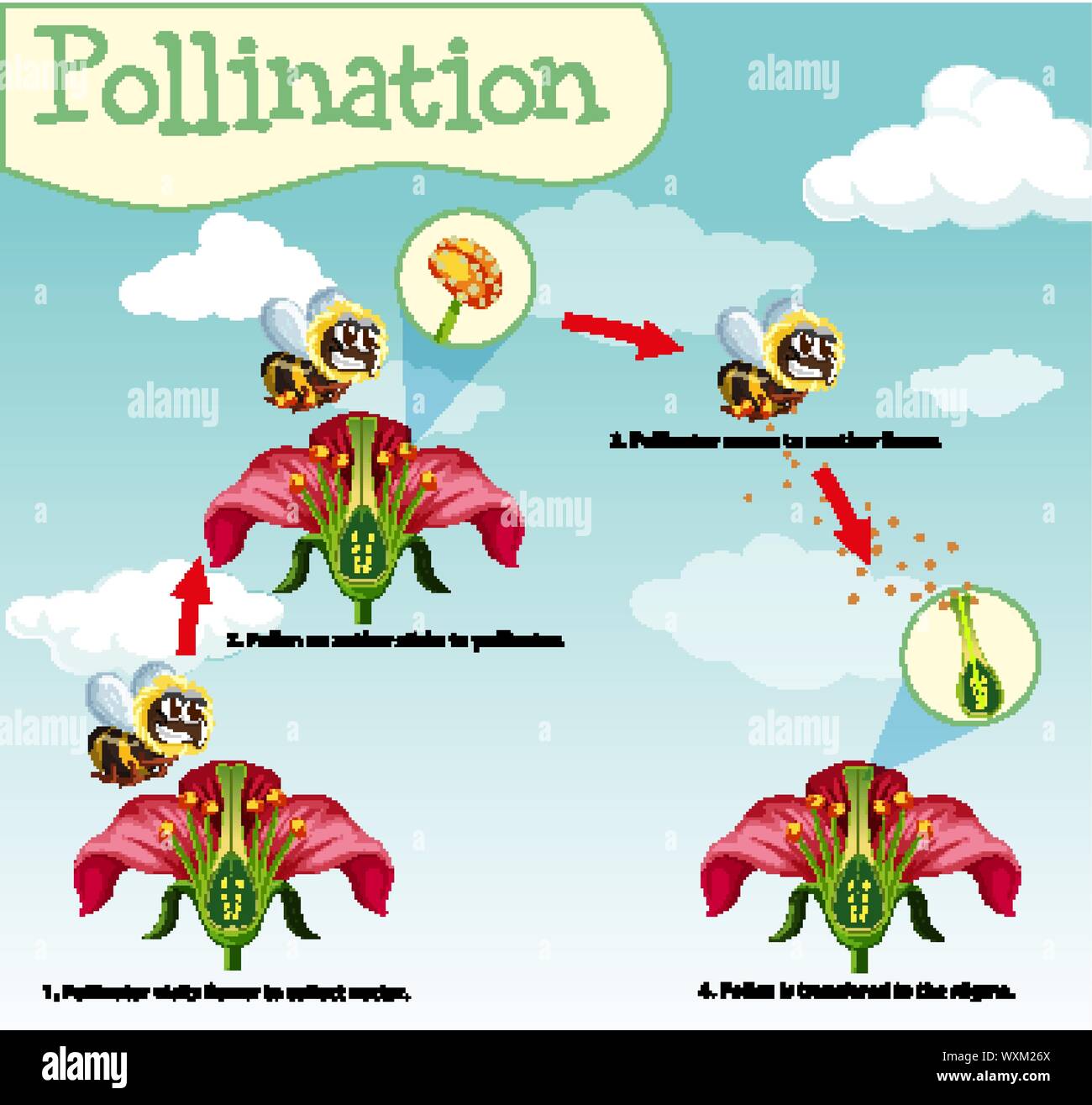 Diagram showing pollination with bee and flowers illustration Stock Vectorhttps://www.alamy.com/image-license-details/?v=1https://www.alamy.com/diagram-showing-pollination-with-bee-and-flowers-illustration-image274577378.html
Diagram showing pollination with bee and flowers illustration Stock Vectorhttps://www.alamy.com/image-license-details/?v=1https://www.alamy.com/diagram-showing-pollination-with-bee-and-flowers-illustration-image274577378.htmlRFWXM26X–Diagram showing pollination with bee and flowers illustration
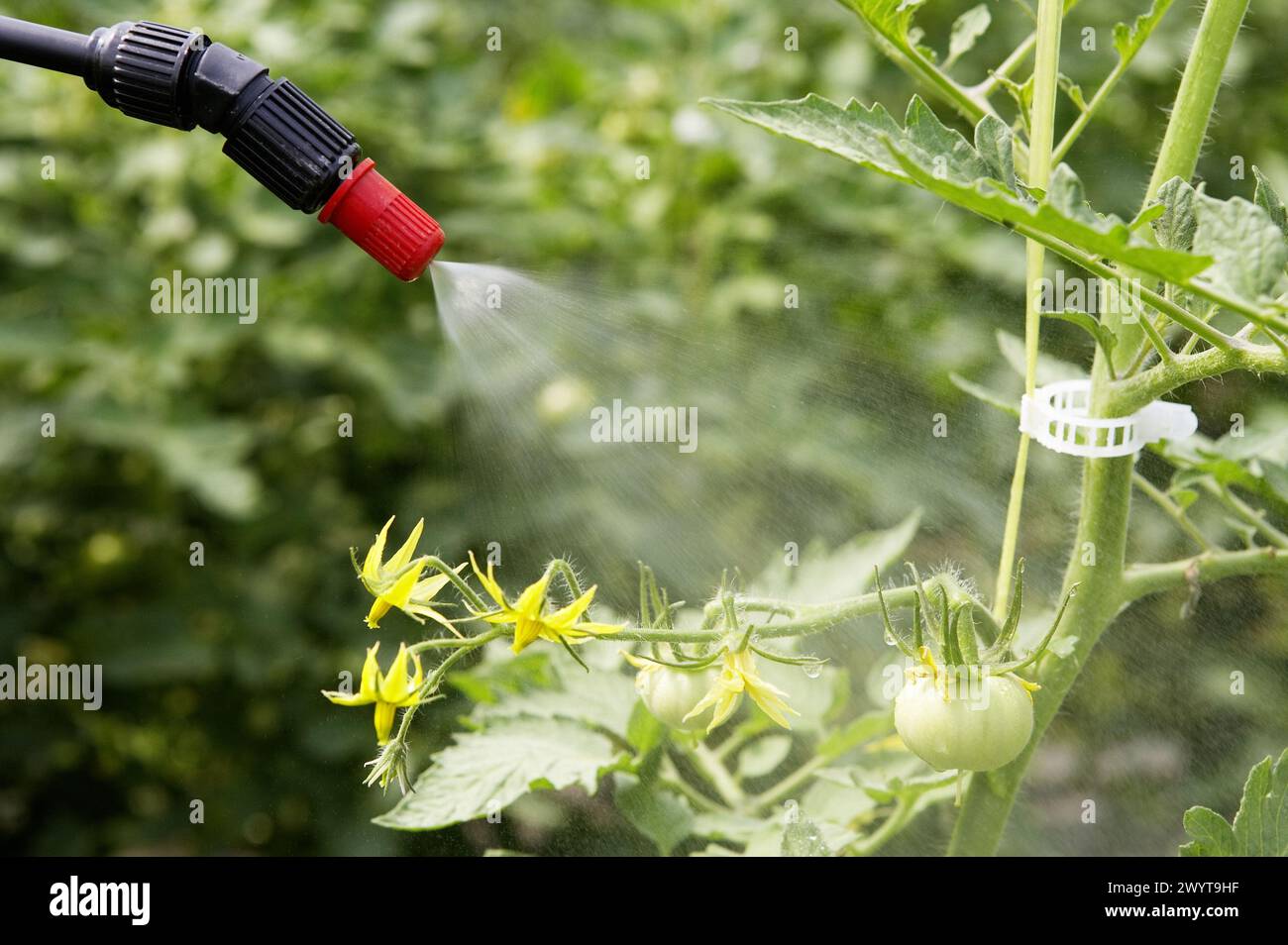 Tomato flower pollination with sprayer. Greenhouse. Agricultural production. Stock Photohttps://www.alamy.com/image-license-details/?v=1https://www.alamy.com/tomato-flower-pollination-with-sprayer-greenhouse-agricultural-production-image602282619.html
Tomato flower pollination with sprayer. Greenhouse. Agricultural production. Stock Photohttps://www.alamy.com/image-license-details/?v=1https://www.alamy.com/tomato-flower-pollination-with-sprayer-greenhouse-agricultural-production-image602282619.htmlRM2WYT9HF–Tomato flower pollination with sprayer. Greenhouse. Agricultural production.
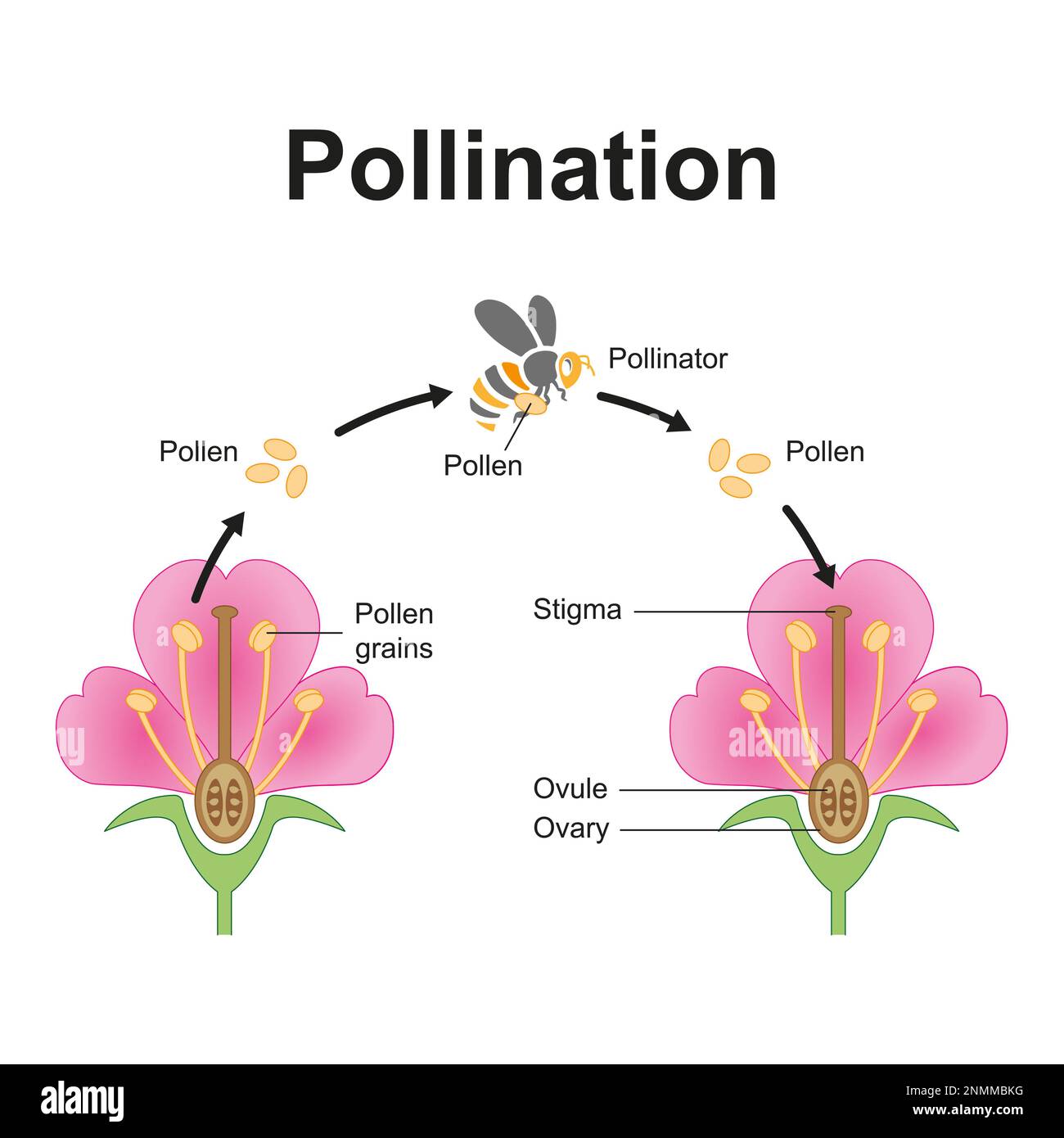 Insect pollination, illustration Stock Photohttps://www.alamy.com/image-license-details/?v=1https://www.alamy.com/insect-pollination-illustration-image529052372.html
Insect pollination, illustration Stock Photohttps://www.alamy.com/image-license-details/?v=1https://www.alamy.com/insect-pollination-illustration-image529052372.htmlRF2NMMBKG–Insect pollination, illustration
 Dna plant flower garden. Bright cross. Generate Ai Stock Photohttps://www.alamy.com/image-license-details/?v=1https://www.alamy.com/dna-plant-flower-garden-bright-cross-generate-ai-image638690793.html
Dna plant flower garden. Bright cross. Generate Ai Stock Photohttps://www.alamy.com/image-license-details/?v=1https://www.alamy.com/dna-plant-flower-garden-bright-cross-generate-ai-image638690793.htmlRF2S32THD–Dna plant flower garden. Bright cross. Generate Ai
 . Handbook of flower pollination : based upon Hermann Mu?ller's work 'The fertilisation of flowers by insects' . Fertilization of plants. Fig. 250. Cydavicti laii/oliiwi, Siblh. ei Sju. (from Kerner, after Ascher- son). A. Diagram of the parts of the flower at the beginning of anthesis. The direction in which the pollen falls is far removed from the stigma. B. Do. at time of complete development. By further bending of the peduncle the line of fall of the pollen is brought nearer the stigma. C. Do. at the end of anthesis. The stigma is now in the line of fall of the pollen, a, peduncle; b, cone Stock Photohttps://www.alamy.com/image-license-details/?v=1https://www.alamy.com/handbook-of-flower-pollination-based-upon-hermann-mullers-work-the-fertilisation-of-flowers-by-insects-fertilization-of-plants-fig-250-cydavicti-laiioliiwi-siblh-ei-sju-from-kerner-after-ascher-son-a-diagram-of-the-parts-of-the-flower-at-the-beginning-of-anthesis-the-direction-in-which-the-pollen-falls-is-far-removed-from-the-stigma-b-do-at-time-of-complete-development-by-further-bending-of-the-peduncle-the-line-of-fall-of-the-pollen-is-brought-nearer-the-stigma-c-do-at-the-end-of-anthesis-the-stigma-is-now-in-the-line-of-fall-of-the-pollen-a-peduncle-b-cone-image216410171.html
. Handbook of flower pollination : based upon Hermann Mu?ller's work 'The fertilisation of flowers by insects' . Fertilization of plants. Fig. 250. Cydavicti laii/oliiwi, Siblh. ei Sju. (from Kerner, after Ascher- son). A. Diagram of the parts of the flower at the beginning of anthesis. The direction in which the pollen falls is far removed from the stigma. B. Do. at time of complete development. By further bending of the peduncle the line of fall of the pollen is brought nearer the stigma. C. Do. at the end of anthesis. The stigma is now in the line of fall of the pollen, a, peduncle; b, cone Stock Photohttps://www.alamy.com/image-license-details/?v=1https://www.alamy.com/handbook-of-flower-pollination-based-upon-hermann-mullers-work-the-fertilisation-of-flowers-by-insects-fertilization-of-plants-fig-250-cydavicti-laiioliiwi-siblh-ei-sju-from-kerner-after-ascher-son-a-diagram-of-the-parts-of-the-flower-at-the-beginning-of-anthesis-the-direction-in-which-the-pollen-falls-is-far-removed-from-the-stigma-b-do-at-time-of-complete-development-by-further-bending-of-the-peduncle-the-line-of-fall-of-the-pollen-is-brought-nearer-the-stigma-c-do-at-the-end-of-anthesis-the-stigma-is-now-in-the-line-of-fall-of-the-pollen-a-peduncle-b-cone-image216410171.htmlRMPG29AK–. Handbook of flower pollination : based upon Hermann Mu?ller's work 'The fertilisation of flowers by insects' . Fertilization of plants. Fig. 250. Cydavicti laii/oliiwi, Siblh. ei Sju. (from Kerner, after Ascher- son). A. Diagram of the parts of the flower at the beginning of anthesis. The direction in which the pollen falls is far removed from the stigma. B. Do. at time of complete development. By further bending of the peduncle the line of fall of the pollen is brought nearer the stigma. C. Do. at the end of anthesis. The stigma is now in the line of fall of the pollen, a, peduncle; b, cone
 Curtis's Botanical Magazine, London, New York, botanical illustration, botany, periodicals, pictorial works, plants ornamental, Matilda Smith, Ribes bracteosum, stink currant, western North America, women in science, Matilda Smith, The illustration features a botanical study of the Aesculus hippocastanum, commonly known as the horse chestnut tree. The central stem showcases a cluster of intricate flowers, displaying delicate petals with visible stamens, hinting at their pollination potential. Accompanying leaves are richly detailed, exhibiting a palmate structure with prominently veined leafle Stock Photohttps://www.alamy.com/image-license-details/?v=1https://www.alamy.com/curtiss-botanical-magazine-london-new-york-botanical-illustration-botany-periodicals-pictorial-works-plants-ornamental-matilda-smith-ribes-bracteosum-stink-currant-western-north-america-women-in-science-matilda-smith-the-illustration-features-a-botanical-study-of-the-aesculus-hippocastanum-commonly-known-as-the-horse-chestnut-tree-the-central-stem-showcases-a-cluster-of-intricate-flowers-displaying-delicate-petals-with-visible-stamens-hinting-at-their-pollination-potential-accompanying-leaves-are-richly-detailed-exhibiting-a-palmate-structure-with-prominently-veined-leafle-image636042676.html
Curtis's Botanical Magazine, London, New York, botanical illustration, botany, periodicals, pictorial works, plants ornamental, Matilda Smith, Ribes bracteosum, stink currant, western North America, women in science, Matilda Smith, The illustration features a botanical study of the Aesculus hippocastanum, commonly known as the horse chestnut tree. The central stem showcases a cluster of intricate flowers, displaying delicate petals with visible stamens, hinting at their pollination potential. Accompanying leaves are richly detailed, exhibiting a palmate structure with prominently veined leafle Stock Photohttps://www.alamy.com/image-license-details/?v=1https://www.alamy.com/curtiss-botanical-magazine-london-new-york-botanical-illustration-botany-periodicals-pictorial-works-plants-ornamental-matilda-smith-ribes-bracteosum-stink-currant-western-north-america-women-in-science-matilda-smith-the-illustration-features-a-botanical-study-of-the-aesculus-hippocastanum-commonly-known-as-the-horse-chestnut-tree-the-central-stem-showcases-a-cluster-of-intricate-flowers-displaying-delicate-petals-with-visible-stamens-hinting-at-their-pollination-potential-accompanying-leaves-are-richly-detailed-exhibiting-a-palmate-structure-with-prominently-veined-leafle-image636042676.htmlRM2YXP6WT–Curtis's Botanical Magazine, London, New York, botanical illustration, botany, periodicals, pictorial works, plants ornamental, Matilda Smith, Ribes bracteosum, stink currant, western North America, women in science, Matilda Smith, The illustration features a botanical study of the Aesculus hippocastanum, commonly known as the horse chestnut tree. The central stem showcases a cluster of intricate flowers, displaying delicate petals with visible stamens, hinting at their pollination potential. Accompanying leaves are richly detailed, exhibiting a palmate structure with prominently veined leafle
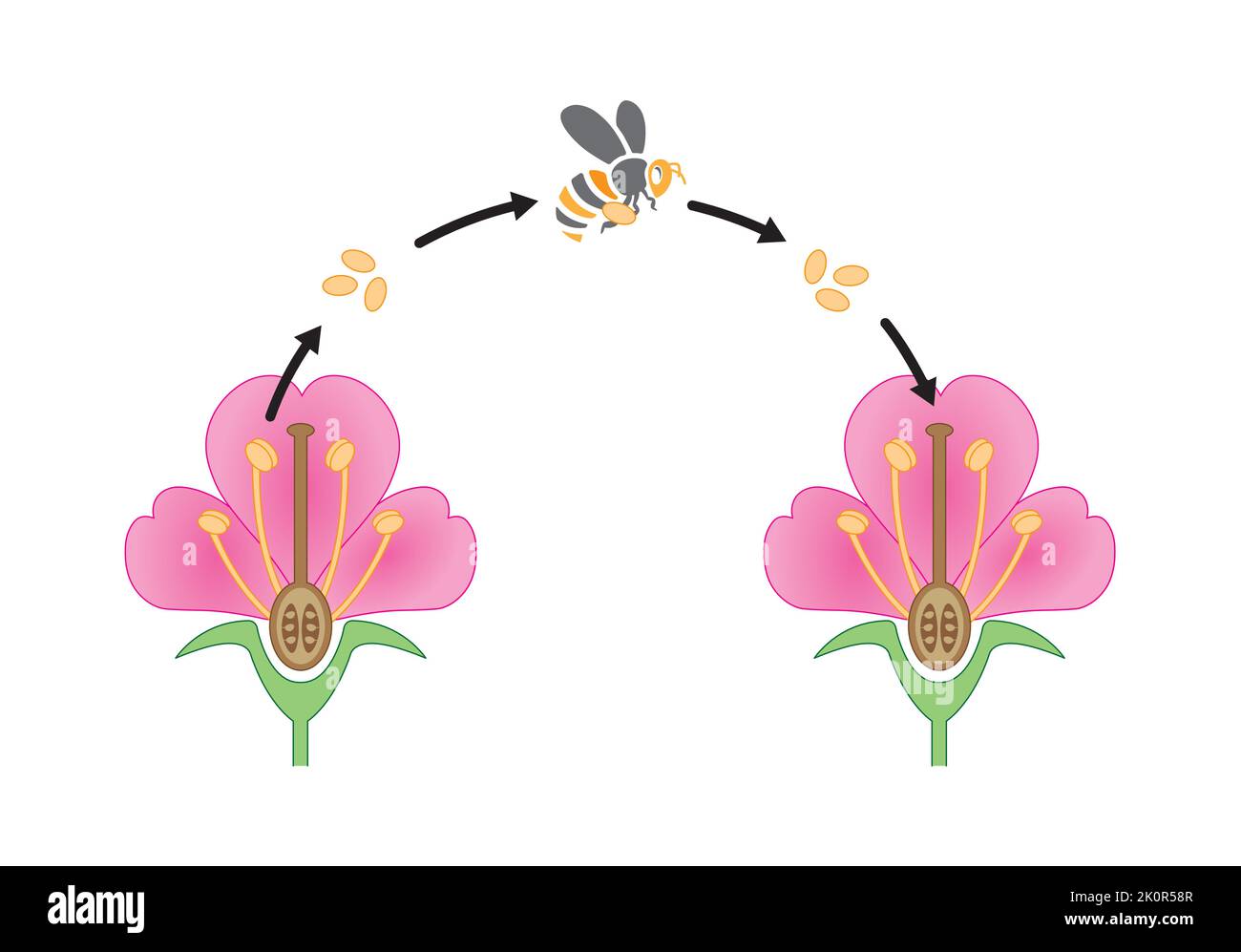 Scientific Designing of Pollination Process. The Most Important Factor in Plants Fertilization. Colorful Symbols. Vector Illustration. Stock Vectorhttps://www.alamy.com/image-license-details/?v=1https://www.alamy.com/scientific-designing-of-pollination-process-the-most-important-factor-in-plants-fertilization-colorful-symbols-vector-illustration-image482399367.html
Scientific Designing of Pollination Process. The Most Important Factor in Plants Fertilization. Colorful Symbols. Vector Illustration. Stock Vectorhttps://www.alamy.com/image-license-details/?v=1https://www.alamy.com/scientific-designing-of-pollination-process-the-most-important-factor-in-plants-fertilization-colorful-symbols-vector-illustration-image482399367.htmlRF2K0R58R–Scientific Designing of Pollination Process. The Most Important Factor in Plants Fertilization. Colorful Symbols. Vector Illustration.
 . British plants : their biology and ecology. Plants; Plant ecology. 182 BRITISH PLANTS The collection of small flowers into conspicuous masses is brought about by different plants in different ways. In entomophilous flowers the massed inflorescence" is an. £ig. 81.—Diagram of Compound Umbel. advantage, because the whole cluster can be pollinated by a single insect during one visit, and in wind-pollinated flowers the chances of pollination are improved if the area is increased by multiplying the number of flowers.. Please note that these images are extracted from scanned page images that Stock Photohttps://www.alamy.com/image-license-details/?v=1https://www.alamy.com/british-plants-their-biology-and-ecology-plants-plant-ecology-182-british-plants-the-collection-of-small-flowers-into-conspicuous-masses-is-brought-about-by-different-plants-in-different-ways-in-entomophilous-flowers-the-massed-inflorescencequot-is-an-ig-81diagram-of-compound-umbel-advantage-because-the-whole-cluster-can-be-pollinated-by-a-single-insect-during-one-visit-and-in-wind-pollinated-flowers-the-chances-of-pollination-are-improved-if-the-area-is-increased-by-multiplying-the-number-of-flowers-please-note-that-these-images-are-extracted-from-scanned-page-images-that-image234235048.html
. British plants : their biology and ecology. Plants; Plant ecology. 182 BRITISH PLANTS The collection of small flowers into conspicuous masses is brought about by different plants in different ways. In entomophilous flowers the massed inflorescence" is an. £ig. 81.—Diagram of Compound Umbel. advantage, because the whole cluster can be pollinated by a single insect during one visit, and in wind-pollinated flowers the chances of pollination are improved if the area is increased by multiplying the number of flowers.. Please note that these images are extracted from scanned page images that Stock Photohttps://www.alamy.com/image-license-details/?v=1https://www.alamy.com/british-plants-their-biology-and-ecology-plants-plant-ecology-182-british-plants-the-collection-of-small-flowers-into-conspicuous-masses-is-brought-about-by-different-plants-in-different-ways-in-entomophilous-flowers-the-massed-inflorescencequot-is-an-ig-81diagram-of-compound-umbel-advantage-because-the-whole-cluster-can-be-pollinated-by-a-single-insect-during-one-visit-and-in-wind-pollinated-flowers-the-chances-of-pollination-are-improved-if-the-area-is-increased-by-multiplying-the-number-of-flowers-please-note-that-these-images-are-extracted-from-scanned-page-images-that-image234235048.htmlRMRH295C–. British plants : their biology and ecology. Plants; Plant ecology. 182 BRITISH PLANTS The collection of small flowers into conspicuous masses is brought about by different plants in different ways. In entomophilous flowers the massed inflorescence" is an. £ig. 81.—Diagram of Compound Umbel. advantage, because the whole cluster can be pollinated by a single insect during one visit, and in wind-pollinated flowers the chances of pollination are improved if the area is increased by multiplying the number of flowers.. Please note that these images are extracted from scanned page images that
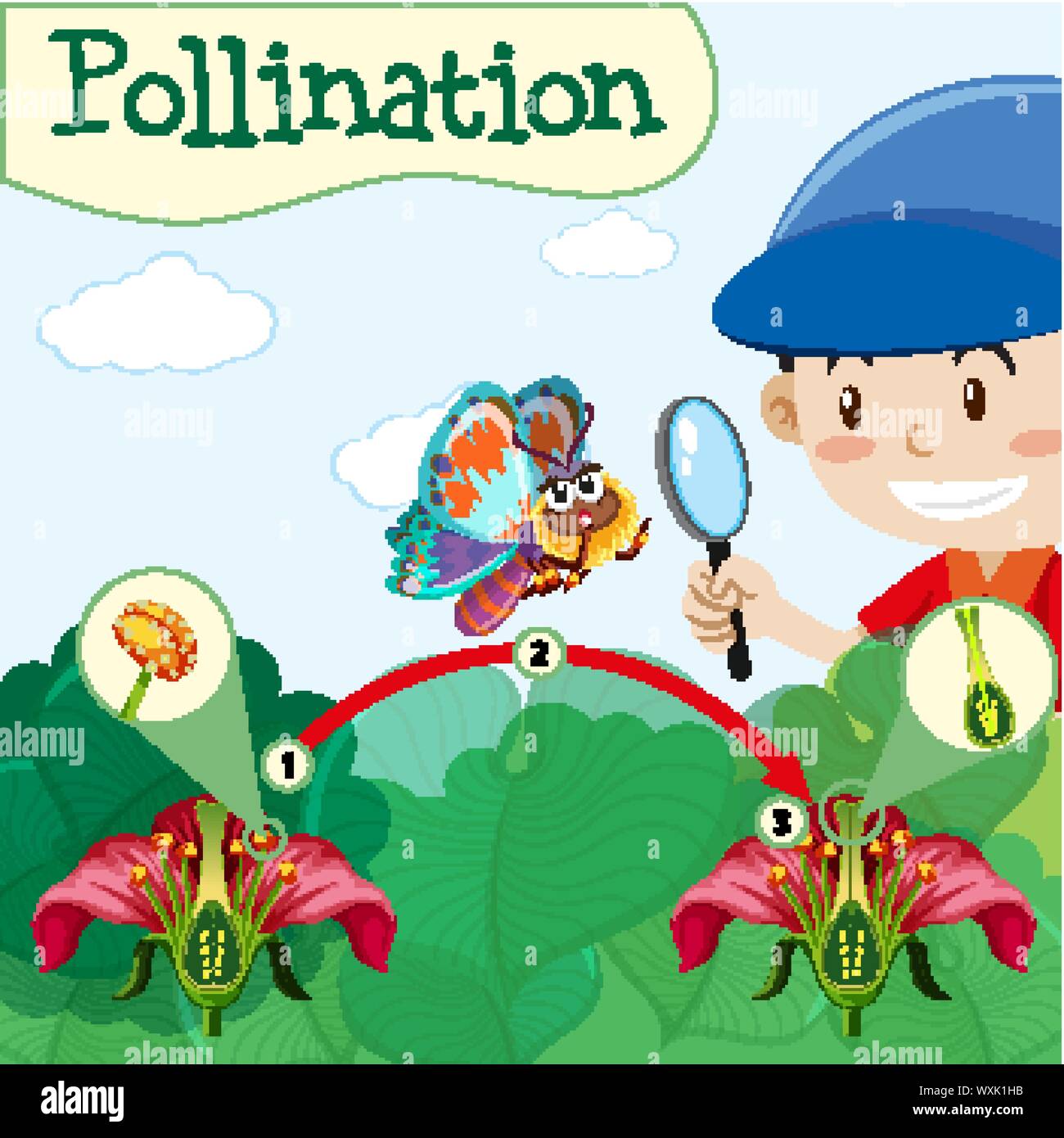 Pollination diagram with boy and flower illustration Stock Vectorhttps://www.alamy.com/image-license-details/?v=1https://www.alamy.com/pollination-diagram-with-boy-and-flower-illustration-image274554935.html
Pollination diagram with boy and flower illustration Stock Vectorhttps://www.alamy.com/image-license-details/?v=1https://www.alamy.com/pollination-diagram-with-boy-and-flower-illustration-image274554935.htmlRFWXK1HB–Pollination diagram with boy and flower illustration
 Tomato flower pollination with sprayer. Greenhouse. Agricultural production. Stock Photohttps://www.alamy.com/image-license-details/?v=1https://www.alamy.com/tomato-flower-pollination-with-sprayer-greenhouse-agricultural-production-image602048376.html
Tomato flower pollination with sprayer. Greenhouse. Agricultural production. Stock Photohttps://www.alamy.com/image-license-details/?v=1https://www.alamy.com/tomato-flower-pollination-with-sprayer-greenhouse-agricultural-production-image602048376.htmlRM2WYDJRM–Tomato flower pollination with sprayer. Greenhouse. Agricultural production.
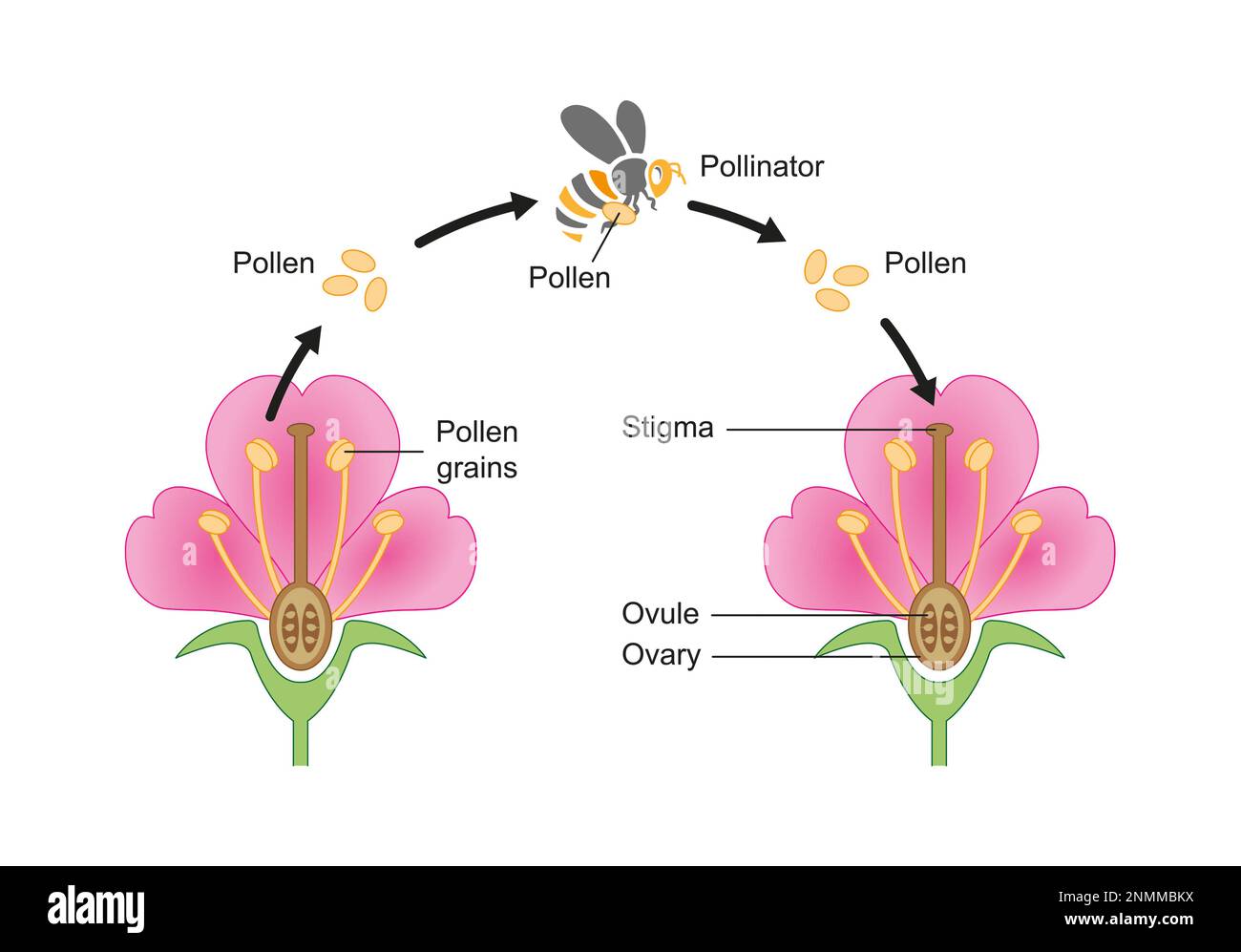 Insect pollination, illustration Stock Photohttps://www.alamy.com/image-license-details/?v=1https://www.alamy.com/insect-pollination-illustration-image529052382.html
Insect pollination, illustration Stock Photohttps://www.alamy.com/image-license-details/?v=1https://www.alamy.com/insect-pollination-illustration-image529052382.htmlRF2NMMBKX–Insect pollination, illustration
 Flower anatomy, illustration Stock Photohttps://www.alamy.com/image-license-details/?v=1https://www.alamy.com/flower-anatomy-illustration-image596722908.html
Flower anatomy, illustration Stock Photohttps://www.alamy.com/image-license-details/?v=1https://www.alamy.com/flower-anatomy-illustration-image596722908.htmlRF2WJR24C–Flower anatomy, illustration
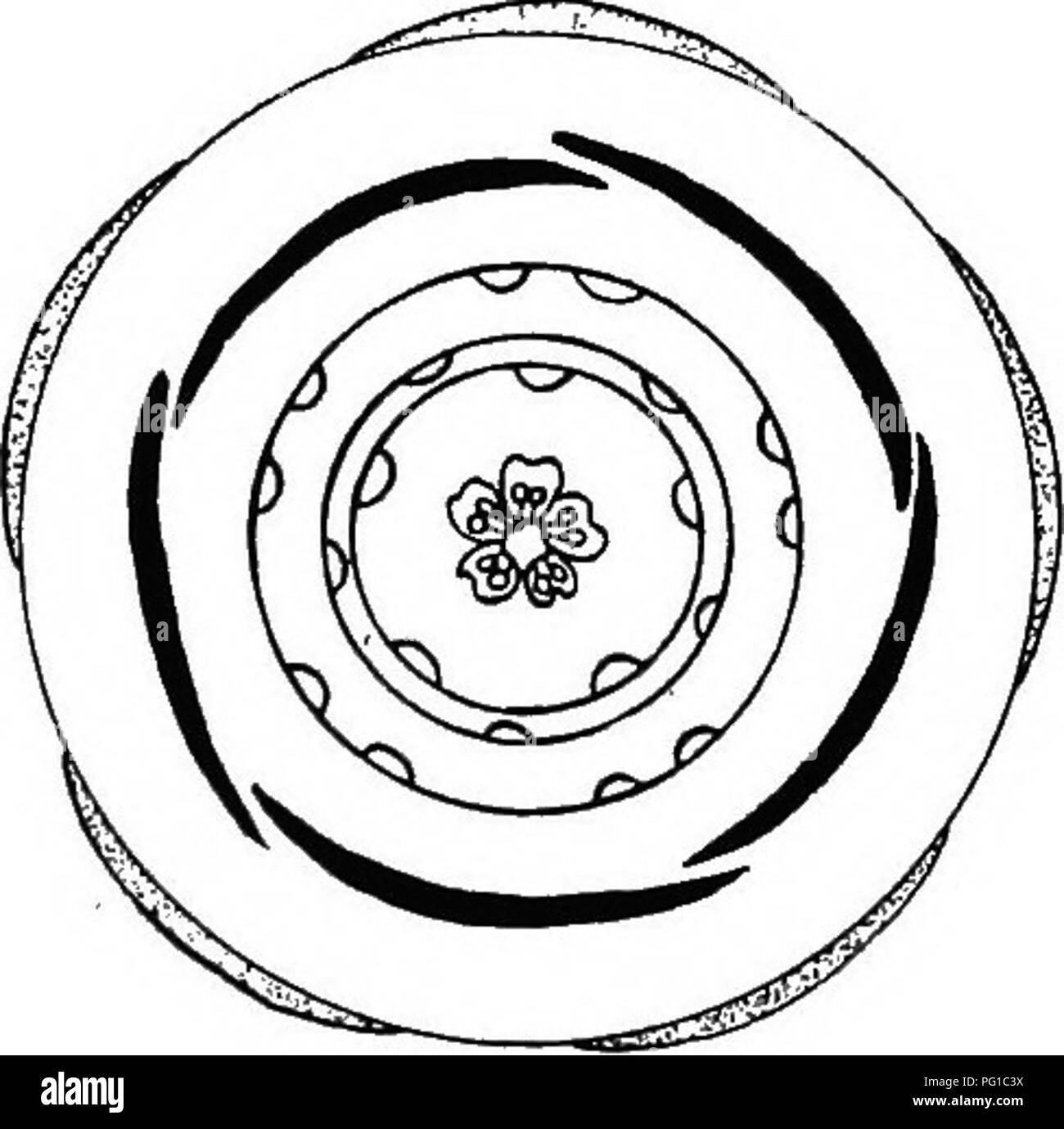 . The botany of crop plants : a text and reference book. Botany, Economic. 372 BOTANY OF CROP PLANTS Pollination and. Fertilization.—The literature on this subject is extensive. Cross-polUnation is the rule and self-polhnation the exception in the apple and pear. Ex- periments have shown that the wind aids but little in cross- pollination, and that insects, chiefly the honey bee, are relatively more important. The bee is attracted to the flowers by the nectar which is produced rather abundantly.. Fig. 156.- - Floral diagram of apple (Malus sylvestris). Note that the sta- mens are in three dist Stock Photohttps://www.alamy.com/image-license-details/?v=1https://www.alamy.com/the-botany-of-crop-plants-a-text-and-reference-book-botany-economic-372-botany-of-crop-plants-pollination-and-fertilizationthe-literature-on-this-subject-is-extensive-cross-polunation-is-the-rule-and-self-polhnation-the-exception-in-the-apple-and-pear-ex-periments-have-shown-that-the-wind-aids-but-little-in-cross-pollination-and-that-insects-chiefly-the-honey-bee-are-relatively-more-important-the-bee-is-attracted-to-the-flowers-by-the-nectar-which-is-produced-rather-abundantly-fig-156-floral-diagram-of-apple-malus-sylvestris-note-that-the-sta-mens-are-in-three-dist-image216390382.html
. The botany of crop plants : a text and reference book. Botany, Economic. 372 BOTANY OF CROP PLANTS Pollination and. Fertilization.—The literature on this subject is extensive. Cross-polUnation is the rule and self-polhnation the exception in the apple and pear. Ex- periments have shown that the wind aids but little in cross- pollination, and that insects, chiefly the honey bee, are relatively more important. The bee is attracted to the flowers by the nectar which is produced rather abundantly.. Fig. 156.- - Floral diagram of apple (Malus sylvestris). Note that the sta- mens are in three dist Stock Photohttps://www.alamy.com/image-license-details/?v=1https://www.alamy.com/the-botany-of-crop-plants-a-text-and-reference-book-botany-economic-372-botany-of-crop-plants-pollination-and-fertilizationthe-literature-on-this-subject-is-extensive-cross-polunation-is-the-rule-and-self-polhnation-the-exception-in-the-apple-and-pear-ex-periments-have-shown-that-the-wind-aids-but-little-in-cross-pollination-and-that-insects-chiefly-the-honey-bee-are-relatively-more-important-the-bee-is-attracted-to-the-flowers-by-the-nectar-which-is-produced-rather-abundantly-fig-156-floral-diagram-of-apple-malus-sylvestris-note-that-the-sta-mens-are-in-three-dist-image216390382.htmlRMPG1C3X–. The botany of crop plants : a text and reference book. Botany, Economic. 372 BOTANY OF CROP PLANTS Pollination and. Fertilization.—The literature on this subject is extensive. Cross-polUnation is the rule and self-polhnation the exception in the apple and pear. Ex- periments have shown that the wind aids but little in cross- pollination, and that insects, chiefly the honey bee, are relatively more important. The bee is attracted to the flowers by the nectar which is produced rather abundantly.. Fig. 156.- - Floral diagram of apple (Malus sylvestris). Note that the sta- mens are in three dist
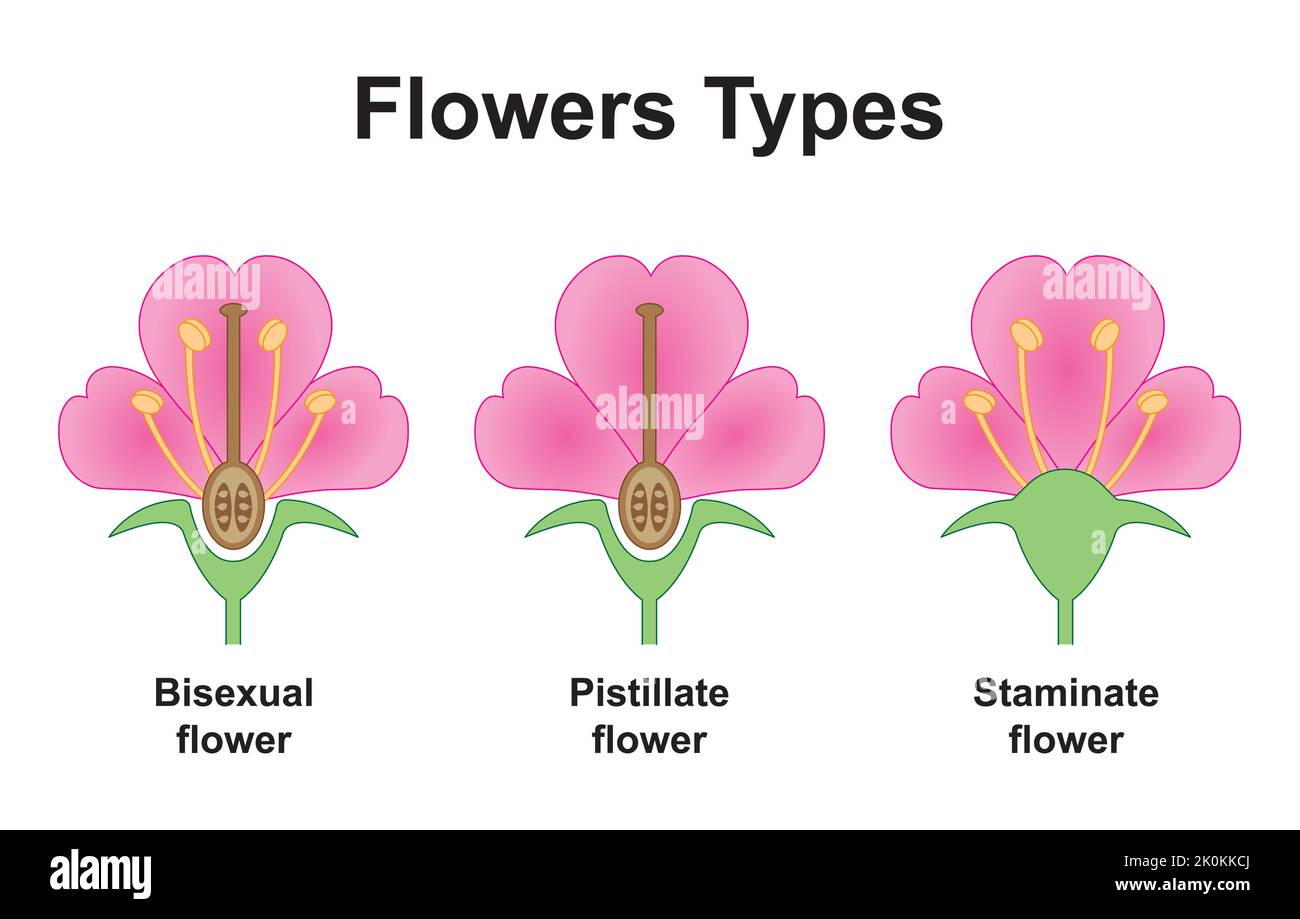 Scientific Designing of Flowers Types. The Plants Fertilization Differences. Colorful Symbols. Vector Illustration. Stock Vectorhttps://www.alamy.com/image-license-details/?v=1https://www.alamy.com/scientific-designing-of-flowers-types-the-plants-fertilization-differences-colorful-symbols-vector-illustration-image482322642.html
Scientific Designing of Flowers Types. The Plants Fertilization Differences. Colorful Symbols. Vector Illustration. Stock Vectorhttps://www.alamy.com/image-license-details/?v=1https://www.alamy.com/scientific-designing-of-flowers-types-the-plants-fertilization-differences-colorful-symbols-vector-illustration-image482322642.htmlRF2K0KKCJ–Scientific Designing of Flowers Types. The Plants Fertilization Differences. Colorful Symbols. Vector Illustration.
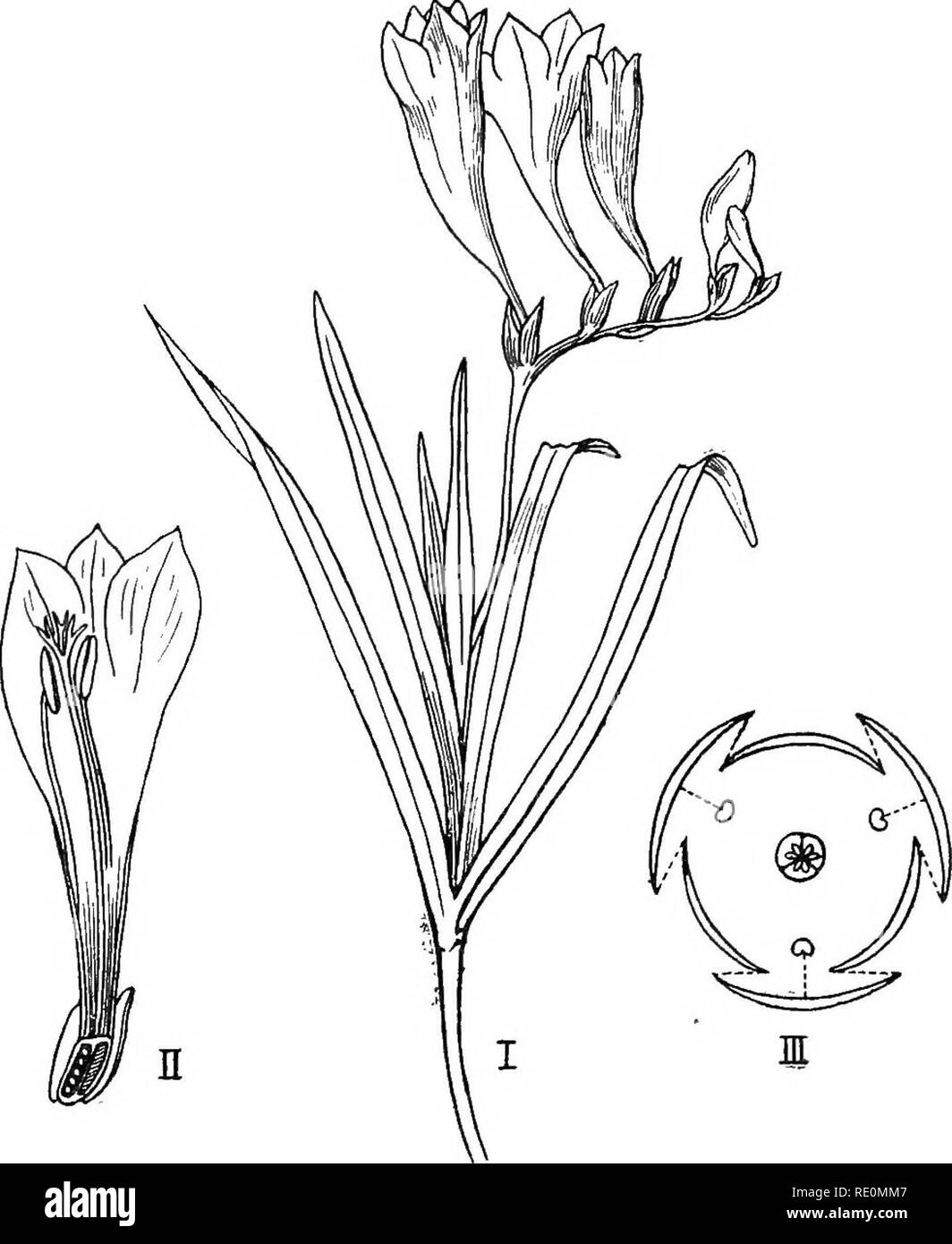 . South African botany. Botany. CLASSIFICATION 199 Pollination.—Self- and Cross-pollination. Insects are attracted by the colour; honey is secreted by a sort of disc at the top of the ovary.. Fig. 112.—Freesia. I. Flowering Stem. II. Vertical Section. III. Floral Diagram. Other Genera.—Amaryllis (the Belladonna Lily), Haemanthus, Gethyllis (Kukumakranka), Galanthus, (the Snowdrop) Narcissus (Daffodil and Jonqnil). Please note that these images are extracted from scanned page images that may have been digitally enhanced for readability - coloration and appearance of these illustrations may not Stock Photohttps://www.alamy.com/image-license-details/?v=1https://www.alamy.com/south-african-botany-botany-classification-199-pollinationself-and-cross-pollination-insects-are-attracted-by-the-colour-honey-is-secreted-by-a-sort-of-disc-at-the-top-of-the-ovary-fig-112freesia-i-flowering-stem-ii-vertical-section-iii-floral-diagram-other-generaamaryllis-the-belladonna-lily-haemanthus-gethyllis-kukumakranka-galanthus-the-snowdrop-narcissus-daffodil-and-jonqnil-please-note-that-these-images-are-extracted-from-scanned-page-images-that-may-have-been-digitally-enhanced-for-readability-coloration-and-appearance-of-these-illustrations-may-not-image232356215.html
. South African botany. Botany. CLASSIFICATION 199 Pollination.—Self- and Cross-pollination. Insects are attracted by the colour; honey is secreted by a sort of disc at the top of the ovary.. Fig. 112.—Freesia. I. Flowering Stem. II. Vertical Section. III. Floral Diagram. Other Genera.—Amaryllis (the Belladonna Lily), Haemanthus, Gethyllis (Kukumakranka), Galanthus, (the Snowdrop) Narcissus (Daffodil and Jonqnil). Please note that these images are extracted from scanned page images that may have been digitally enhanced for readability - coloration and appearance of these illustrations may not Stock Photohttps://www.alamy.com/image-license-details/?v=1https://www.alamy.com/south-african-botany-botany-classification-199-pollinationself-and-cross-pollination-insects-are-attracted-by-the-colour-honey-is-secreted-by-a-sort-of-disc-at-the-top-of-the-ovary-fig-112freesia-i-flowering-stem-ii-vertical-section-iii-floral-diagram-other-generaamaryllis-the-belladonna-lily-haemanthus-gethyllis-kukumakranka-galanthus-the-snowdrop-narcissus-daffodil-and-jonqnil-please-note-that-these-images-are-extracted-from-scanned-page-images-that-may-have-been-digitally-enhanced-for-readability-coloration-and-appearance-of-these-illustrations-may-not-image232356215.htmlRMRE0MM7–. South African botany. Botany. CLASSIFICATION 199 Pollination.—Self- and Cross-pollination. Insects are attracted by the colour; honey is secreted by a sort of disc at the top of the ovary.. Fig. 112.—Freesia. I. Flowering Stem. II. Vertical Section. III. Floral Diagram. Other Genera.—Amaryllis (the Belladonna Lily), Haemanthus, Gethyllis (Kukumakranka), Galanthus, (the Snowdrop) Narcissus (Daffodil and Jonqnil). Please note that these images are extracted from scanned page images that may have been digitally enhanced for readability - coloration and appearance of these illustrations may not
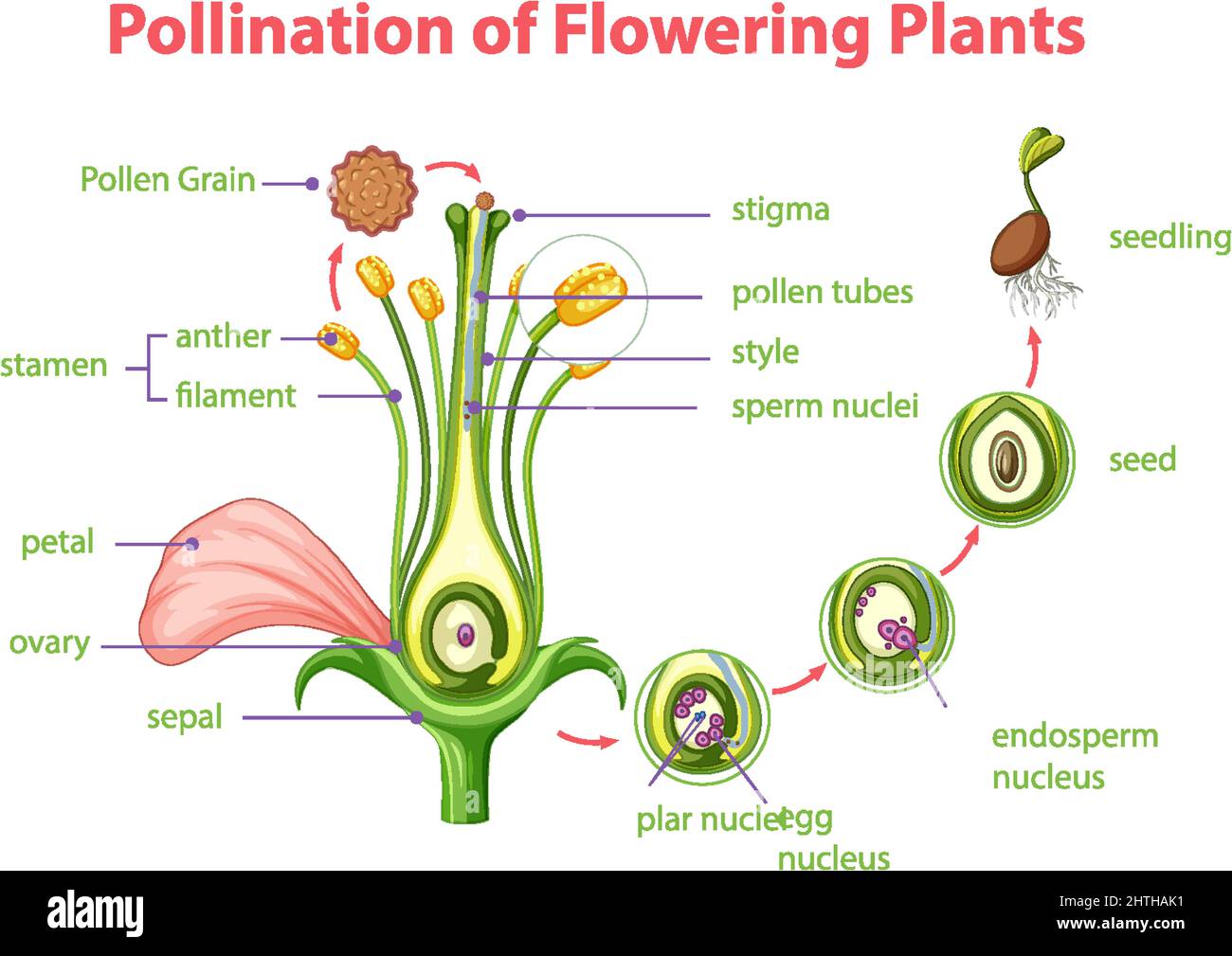 Diagram of pollination of flowering plants illustration Stock Vectorhttps://www.alamy.com/image-license-details/?v=1https://www.alamy.com/diagram-of-pollination-of-flowering-plants-illustration-image462602869.html
Diagram of pollination of flowering plants illustration Stock Vectorhttps://www.alamy.com/image-license-details/?v=1https://www.alamy.com/diagram-of-pollination-of-flowering-plants-illustration-image462602869.htmlRF2HTHAK1–Diagram of pollination of flowering plants illustration
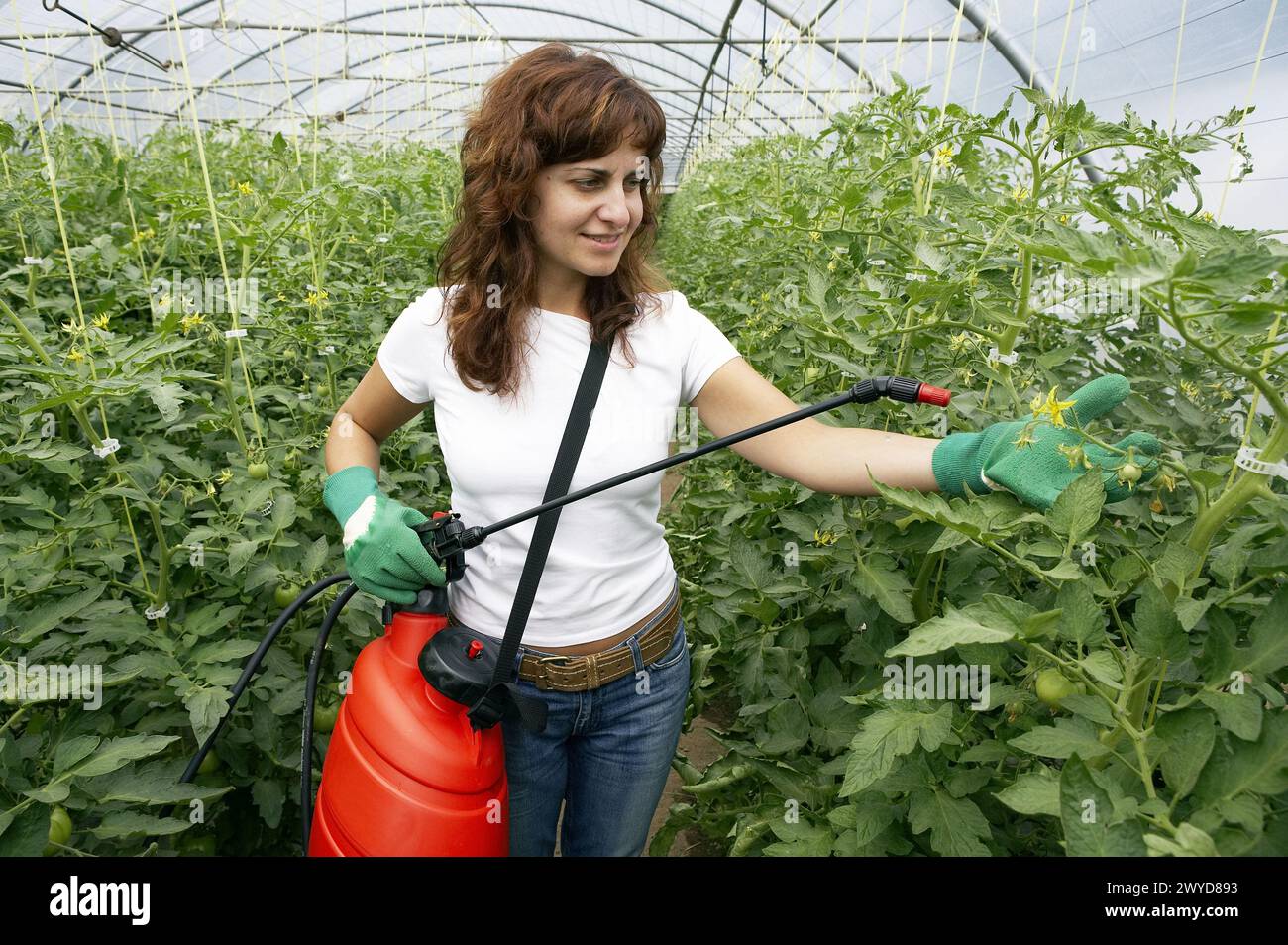 Tomato flower pollination with sprayer. Greenhouse. Agricultural production. Stock Photohttps://www.alamy.com/image-license-details/?v=1https://www.alamy.com/tomato-flower-pollination-with-sprayer-greenhouse-agricultural-production-image602040127.html
Tomato flower pollination with sprayer. Greenhouse. Agricultural production. Stock Photohttps://www.alamy.com/image-license-details/?v=1https://www.alamy.com/tomato-flower-pollination-with-sprayer-greenhouse-agricultural-production-image602040127.htmlRM2WYD893–Tomato flower pollination with sprayer. Greenhouse. Agricultural production.
 Flower anatomy, illustration Stock Photohttps://www.alamy.com/image-license-details/?v=1https://www.alamy.com/flower-anatomy-illustration-image596722895.html
Flower anatomy, illustration Stock Photohttps://www.alamy.com/image-license-details/?v=1https://www.alamy.com/flower-anatomy-illustration-image596722895.htmlRF2WJR23Y–Flower anatomy, illustration
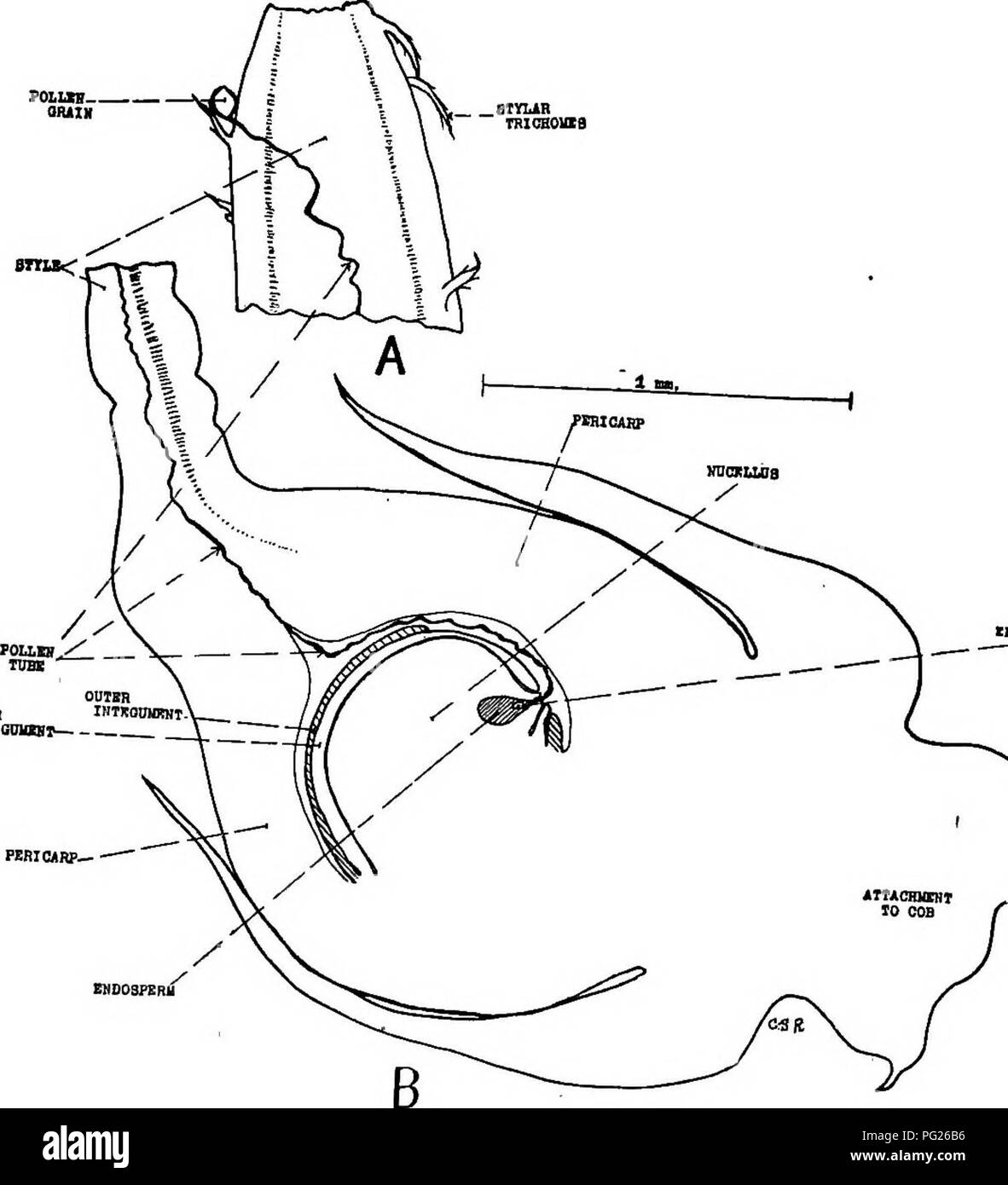 . Southern field crops (exclusive of forage plants). Agriculture. COBN STRUCTURE. Fig. 36. — Diagram showing Codkbe of the Pollen-tube through Silk to Ovaht. A, section near outer end of silk, showing pollen-grain and pollen-tube : B, section through base of silk and through young grain. (Drawing by C. S. Ridgway.) The pollination of corn is effected almost entirely by the wind, which may carry the pollen great distances.. Please note that these images are extracted from scanned page images that may have been digitally enhanced for readability - coloration and appearance of these illustrations Stock Photohttps://www.alamy.com/image-license-details/?v=1https://www.alamy.com/southern-field-crops-exclusive-of-forage-plants-agriculture-cobn-structure-fig-36-diagram-showing-codkbe-of-the-pollen-tube-through-silk-to-ovaht-a-section-near-outer-end-of-silk-showing-pollen-grain-and-pollen-tube-b-section-through-base-of-silk-and-through-young-grain-drawing-by-c-s-ridgway-the-pollination-of-corn-is-effected-almost-entirely-by-the-wind-which-may-carry-the-pollen-great-distances-please-note-that-these-images-are-extracted-from-scanned-page-images-that-may-have-been-digitally-enhanced-for-readability-coloration-and-appearance-of-these-illustrations-image216407834.html
. Southern field crops (exclusive of forage plants). Agriculture. COBN STRUCTURE. Fig. 36. — Diagram showing Codkbe of the Pollen-tube through Silk to Ovaht. A, section near outer end of silk, showing pollen-grain and pollen-tube : B, section through base of silk and through young grain. (Drawing by C. S. Ridgway.) The pollination of corn is effected almost entirely by the wind, which may carry the pollen great distances.. Please note that these images are extracted from scanned page images that may have been digitally enhanced for readability - coloration and appearance of these illustrations Stock Photohttps://www.alamy.com/image-license-details/?v=1https://www.alamy.com/southern-field-crops-exclusive-of-forage-plants-agriculture-cobn-structure-fig-36-diagram-showing-codkbe-of-the-pollen-tube-through-silk-to-ovaht-a-section-near-outer-end-of-silk-showing-pollen-grain-and-pollen-tube-b-section-through-base-of-silk-and-through-young-grain-drawing-by-c-s-ridgway-the-pollination-of-corn-is-effected-almost-entirely-by-the-wind-which-may-carry-the-pollen-great-distances-please-note-that-these-images-are-extracted-from-scanned-page-images-that-may-have-been-digitally-enhanced-for-readability-coloration-and-appearance-of-these-illustrations-image216407834.htmlRMPG26B6–. Southern field crops (exclusive of forage plants). Agriculture. COBN STRUCTURE. Fig. 36. — Diagram showing Codkbe of the Pollen-tube through Silk to Ovaht. A, section near outer end of silk, showing pollen-grain and pollen-tube : B, section through base of silk and through young grain. (Drawing by C. S. Ridgway.) The pollination of corn is effected almost entirely by the wind, which may carry the pollen great distances.. Please note that these images are extracted from scanned page images that may have been digitally enhanced for readability - coloration and appearance of these illustrations
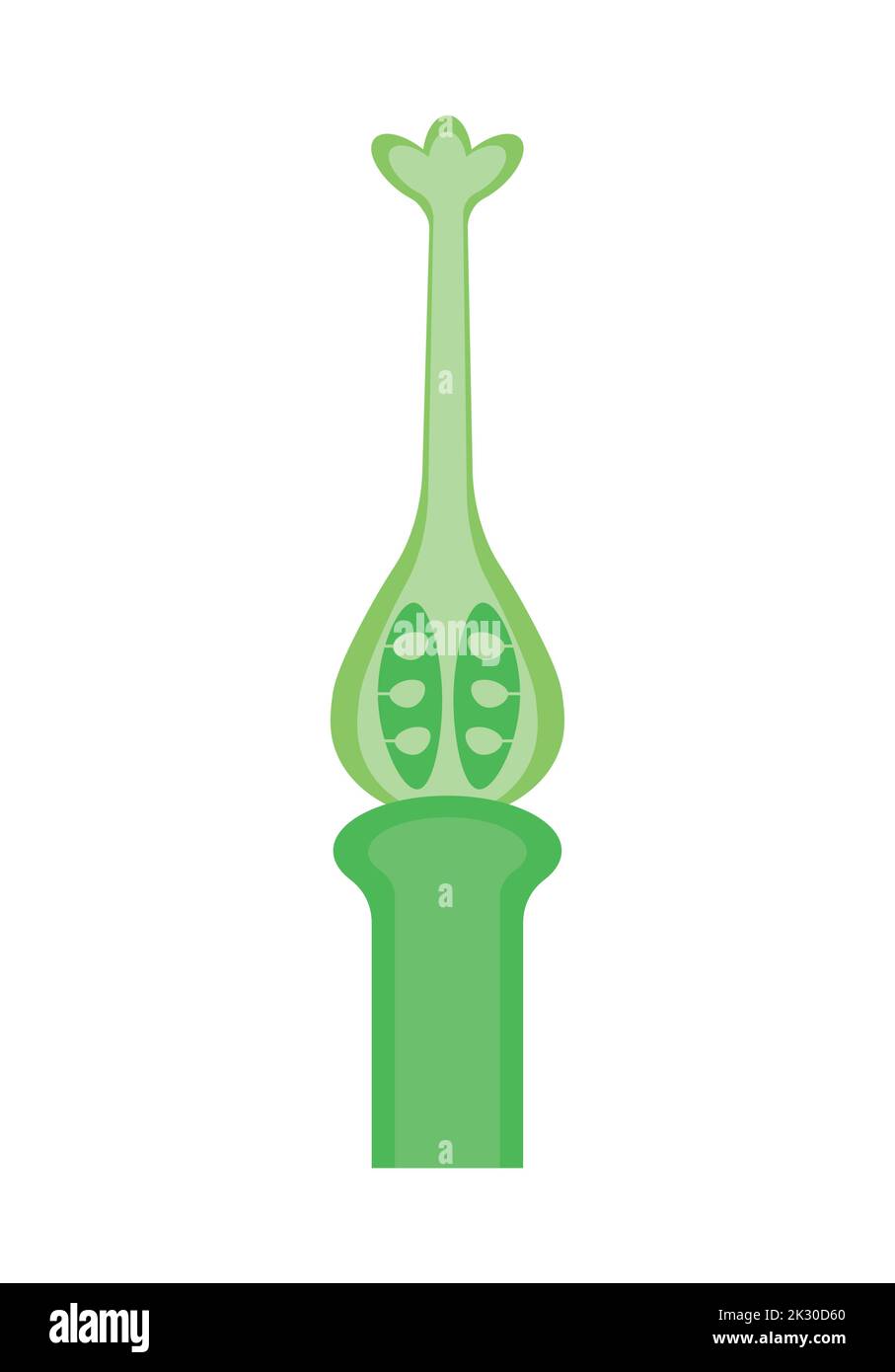 Scientific Designing of Pistil Structure. The Female Reproductive System in Plants. Colorful Symbols. Vector Illustration. Stock Vectorhttps://www.alamy.com/image-license-details/?v=1https://www.alamy.com/scientific-designing-of-pistil-structure-the-female-reproductive-system-in-plants-colorful-symbols-vector-illustration-image483744632.html
Scientific Designing of Pistil Structure. The Female Reproductive System in Plants. Colorful Symbols. Vector Illustration. Stock Vectorhttps://www.alamy.com/image-license-details/?v=1https://www.alamy.com/scientific-designing-of-pistil-structure-the-female-reproductive-system-in-plants-colorful-symbols-vector-illustration-image483744632.htmlRF2K30D60–Scientific Designing of Pistil Structure. The Female Reproductive System in Plants. Colorful Symbols. Vector Illustration.
![. Elementary botany . Botany. Fig. 200.—Floral diagram of Honey- suckle. Fig. 201.—Infruct- escence of Honey- suckle : ^r= bracts ; ex = calyx of each fruit ifiru). by insects with very long tongues—that is, solely by butter- flies and moths. The flower is cross-pollinated chiefly by the night-flying hawk-moths. The light colour and sweet scent, especially strong at night time, serve to attract the notice of moths. The position of the stigma obviously renders self- pollination by the flower itself well-nigh impossible. [Endeavour to follow out the dehiscence and movements of the stamens.] Type Stock Photo . Elementary botany . Botany. Fig. 200.—Floral diagram of Honey- suckle. Fig. 201.—Infruct- escence of Honey- suckle : ^r= bracts ; ex = calyx of each fruit ifiru). by insects with very long tongues—that is, solely by butter- flies and moths. The flower is cross-pollinated chiefly by the night-flying hawk-moths. The light colour and sweet scent, especially strong at night time, serve to attract the notice of moths. The position of the stigma obviously renders self- pollination by the flower itself well-nigh impossible. [Endeavour to follow out the dehiscence and movements of the stamens.] Type Stock Photo](https://c8.alamy.com/comp/RDHMF9/elementary-botany-botany-fig-200floral-diagram-of-honey-suckle-fig-201infruct-escence-of-honey-suckle-r=-bracts-ex-=-calyx-of-each-fruit-ifiru-by-insects-with-very-long-tonguesthat-is-solely-by-butter-flies-and-moths-the-flower-is-cross-pollinated-chiefly-by-the-night-flying-hawk-moths-the-light-colour-and-sweet-scent-especially-strong-at-night-time-serve-to-attract-the-notice-of-moths-the-position-of-the-stigma-obviously-renders-self-pollination-by-the-flower-itself-well-nigh-impossible-endeavour-to-follow-out-the-dehiscence-and-movements-of-the-stamens-type-RDHMF9.jpg) . Elementary botany . Botany. Fig. 200.—Floral diagram of Honey- suckle. Fig. 201.—Infruct- escence of Honey- suckle : ^r= bracts ; ex = calyx of each fruit ifiru). by insects with very long tongues—that is, solely by butter- flies and moths. The flower is cross-pollinated chiefly by the night-flying hawk-moths. The light colour and sweet scent, especially strong at night time, serve to attract the notice of moths. The position of the stigma obviously renders self- pollination by the flower itself well-nigh impossible. [Endeavour to follow out the dehiscence and movements of the stamens.] Type Stock Photohttps://www.alamy.com/image-license-details/?v=1https://www.alamy.com/elementary-botany-botany-fig-200floral-diagram-of-honey-suckle-fig-201infruct-escence-of-honey-suckle-r=-bracts-ex-=-calyx-of-each-fruit-ifiru-by-insects-with-very-long-tonguesthat-is-solely-by-butter-flies-and-moths-the-flower-is-cross-pollinated-chiefly-by-the-night-flying-hawk-moths-the-light-colour-and-sweet-scent-especially-strong-at-night-time-serve-to-attract-the-notice-of-moths-the-position-of-the-stigma-obviously-renders-self-pollination-by-the-flower-itself-well-nigh-impossible-endeavour-to-follow-out-the-dehiscence-and-movements-of-the-stamens-type-image232114605.html
. Elementary botany . Botany. Fig. 200.—Floral diagram of Honey- suckle. Fig. 201.—Infruct- escence of Honey- suckle : ^r= bracts ; ex = calyx of each fruit ifiru). by insects with very long tongues—that is, solely by butter- flies and moths. The flower is cross-pollinated chiefly by the night-flying hawk-moths. The light colour and sweet scent, especially strong at night time, serve to attract the notice of moths. The position of the stigma obviously renders self- pollination by the flower itself well-nigh impossible. [Endeavour to follow out the dehiscence and movements of the stamens.] Type Stock Photohttps://www.alamy.com/image-license-details/?v=1https://www.alamy.com/elementary-botany-botany-fig-200floral-diagram-of-honey-suckle-fig-201infruct-escence-of-honey-suckle-r=-bracts-ex-=-calyx-of-each-fruit-ifiru-by-insects-with-very-long-tonguesthat-is-solely-by-butter-flies-and-moths-the-flower-is-cross-pollinated-chiefly-by-the-night-flying-hawk-moths-the-light-colour-and-sweet-scent-especially-strong-at-night-time-serve-to-attract-the-notice-of-moths-the-position-of-the-stigma-obviously-renders-self-pollination-by-the-flower-itself-well-nigh-impossible-endeavour-to-follow-out-the-dehiscence-and-movements-of-the-stamens-type-image232114605.htmlRMRDHMF9–. Elementary botany . Botany. Fig. 200.—Floral diagram of Honey- suckle. Fig. 201.—Infruct- escence of Honey- suckle : ^r= bracts ; ex = calyx of each fruit ifiru). by insects with very long tongues—that is, solely by butter- flies and moths. The flower is cross-pollinated chiefly by the night-flying hawk-moths. The light colour and sweet scent, especially strong at night time, serve to attract the notice of moths. The position of the stigma obviously renders self- pollination by the flower itself well-nigh impossible. [Endeavour to follow out the dehiscence and movements of the stamens.] Type
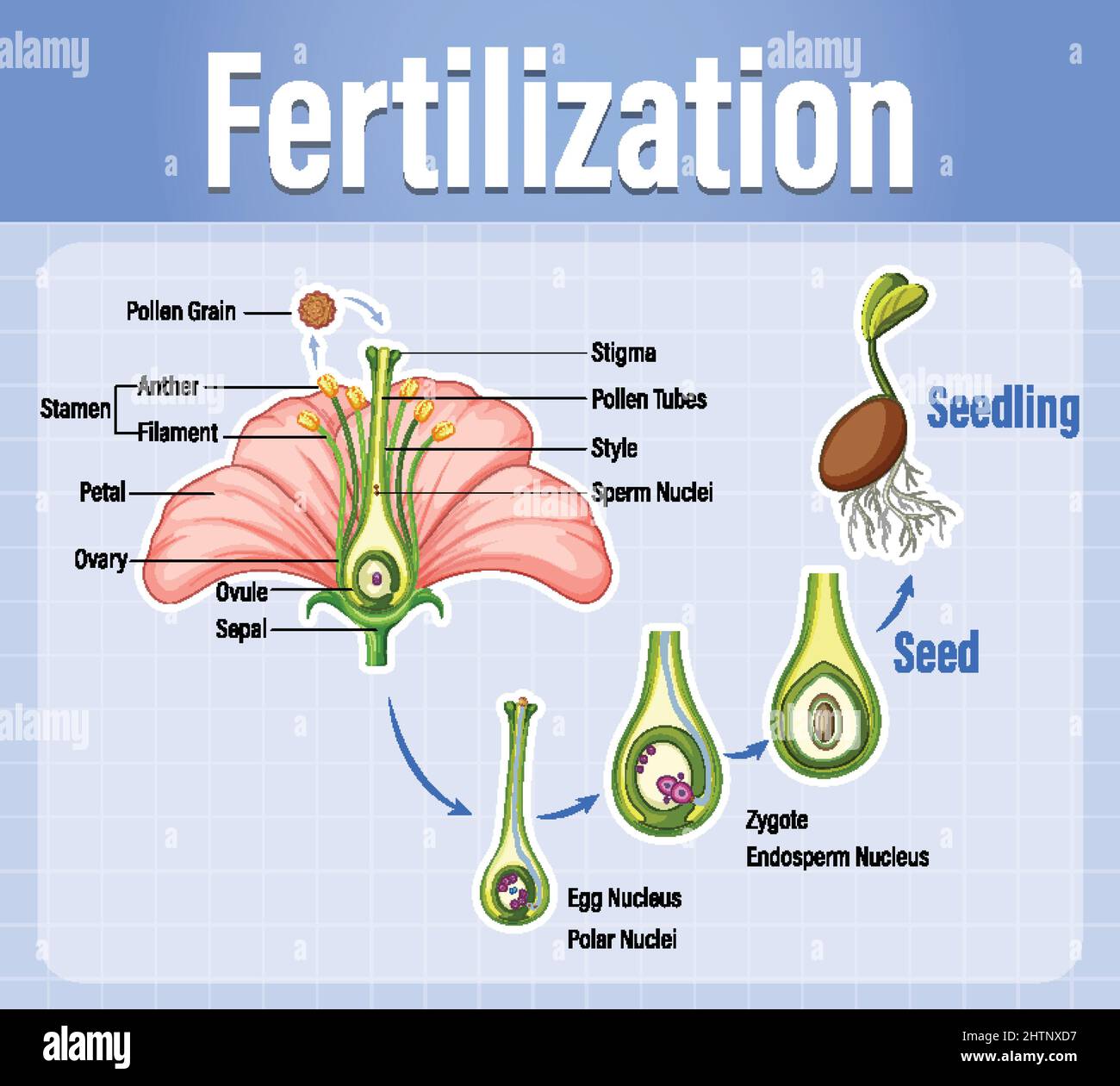 Diagram of pollination of flowering plants illustration Stock Vectorhttps://www.alamy.com/image-license-details/?v=1https://www.alamy.com/diagram-of-pollination-of-flowering-plants-illustration-image462703059.html
Diagram of pollination of flowering plants illustration Stock Vectorhttps://www.alamy.com/image-license-details/?v=1https://www.alamy.com/diagram-of-pollination-of-flowering-plants-illustration-image462703059.htmlRF2HTNXD7–Diagram of pollination of flowering plants illustration
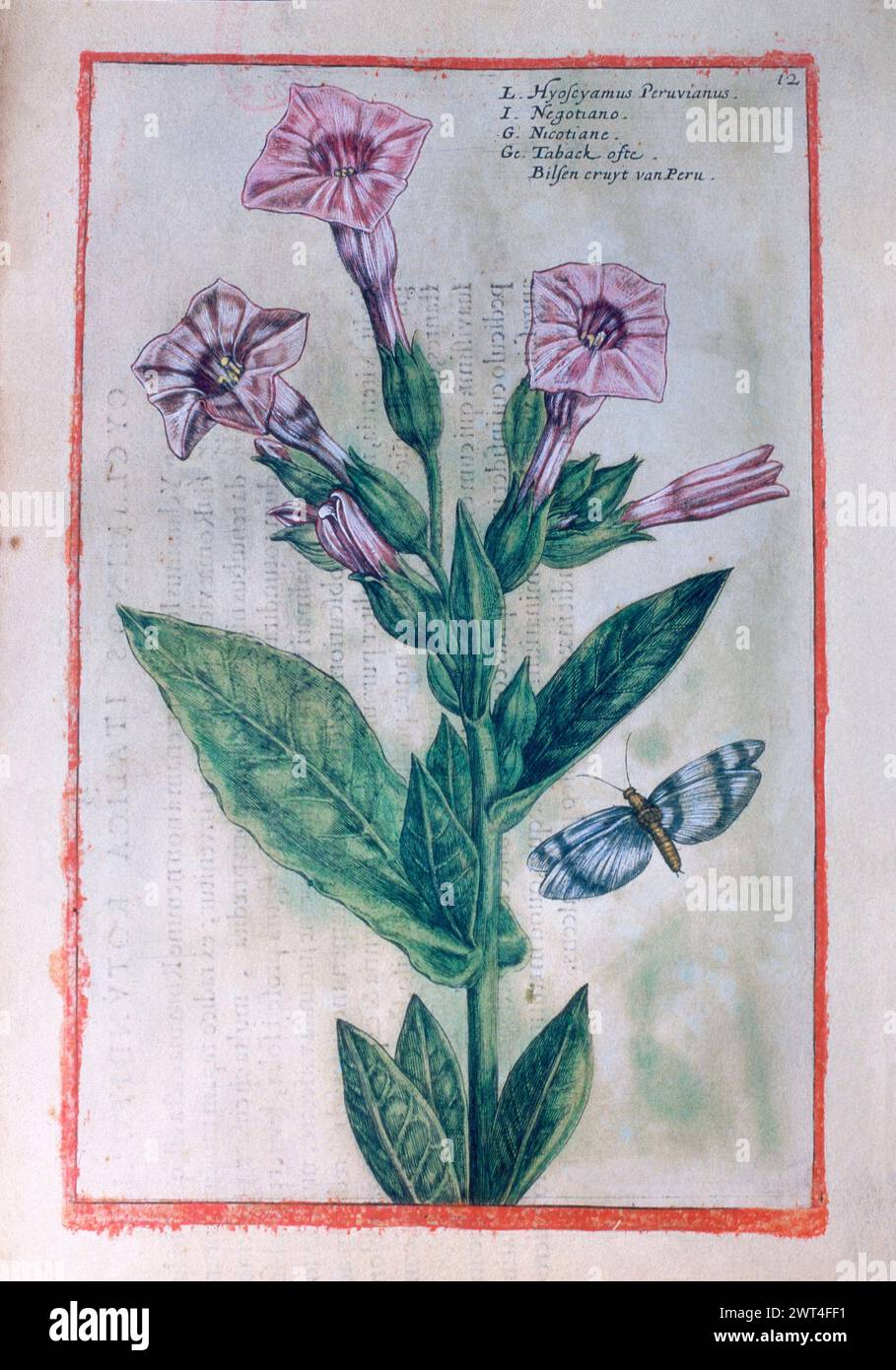 DIBUJO-PLANTA Y FLOR DEL TABACO. Stock Photohttps://www.alamy.com/image-license-details/?v=1https://www.alamy.com/dibujo-planta-y-flor-del-tabaco-image600004245.html
DIBUJO-PLANTA Y FLOR DEL TABACO. Stock Photohttps://www.alamy.com/image-license-details/?v=1https://www.alamy.com/dibujo-planta-y-flor-del-tabaco-image600004245.htmlRM2WT4FF1–DIBUJO-PLANTA Y FLOR DEL TABACO.
 . The botany of crop plants : a text and reference book. Botany, Economic. 52 BOTANY OF CROP PLANTS xenogamy, or cross-pollination. Insects, wind and water are the chief agents in the spread of pollen. Fertilization.âFig. 23 is a diagram of an ovary with a single ovule cut lengthwise. It shows a stage of develop- ment of the ovule about at the time when the pollen grain has reached the stigma. As has been said, the mature pollen grain consists of a protoplasmic mass surrounded by a rathei: thick wall. Three nuclei (Fig. 24) constitute the important structures in the pollen grain. It absorbs wa Stock Photohttps://www.alamy.com/image-license-details/?v=1https://www.alamy.com/the-botany-of-crop-plants-a-text-and-reference-book-botany-economic-52-botany-of-crop-plants-xenogamy-or-cross-pollination-insects-wind-and-water-are-the-chief-agents-in-the-spread-of-pollen-fertilizationfig-23-is-a-diagram-of-an-ovary-with-a-single-ovule-cut-lengthwise-it-shows-a-stage-of-develop-ment-of-the-ovule-about-at-the-time-when-the-pollen-grain-has-reached-the-stigma-as-has-been-said-the-mature-pollen-grain-consists-of-a-protoplasmic-mass-surrounded-by-a-rathei-thick-wall-three-nuclei-fig-24-constitute-the-important-structures-in-the-pollen-grain-it-absorbs-wa-image216372060.html
. The botany of crop plants : a text and reference book. Botany, Economic. 52 BOTANY OF CROP PLANTS xenogamy, or cross-pollination. Insects, wind and water are the chief agents in the spread of pollen. Fertilization.âFig. 23 is a diagram of an ovary with a single ovule cut lengthwise. It shows a stage of develop- ment of the ovule about at the time when the pollen grain has reached the stigma. As has been said, the mature pollen grain consists of a protoplasmic mass surrounded by a rathei: thick wall. Three nuclei (Fig. 24) constitute the important structures in the pollen grain. It absorbs wa Stock Photohttps://www.alamy.com/image-license-details/?v=1https://www.alamy.com/the-botany-of-crop-plants-a-text-and-reference-book-botany-economic-52-botany-of-crop-plants-xenogamy-or-cross-pollination-insects-wind-and-water-are-the-chief-agents-in-the-spread-of-pollen-fertilizationfig-23-is-a-diagram-of-an-ovary-with-a-single-ovule-cut-lengthwise-it-shows-a-stage-of-develop-ment-of-the-ovule-about-at-the-time-when-the-pollen-grain-has-reached-the-stigma-as-has-been-said-the-mature-pollen-grain-consists-of-a-protoplasmic-mass-surrounded-by-a-rathei-thick-wall-three-nuclei-fig-24-constitute-the-important-structures-in-the-pollen-grain-it-absorbs-wa-image216372060.htmlRMPG0GNG–. The botany of crop plants : a text and reference book. Botany, Economic. 52 BOTANY OF CROP PLANTS xenogamy, or cross-pollination. Insects, wind and water are the chief agents in the spread of pollen. Fertilization.âFig. 23 is a diagram of an ovary with a single ovule cut lengthwise. It shows a stage of develop- ment of the ovule about at the time when the pollen grain has reached the stigma. As has been said, the mature pollen grain consists of a protoplasmic mass surrounded by a rathei: thick wall. Three nuclei (Fig. 24) constitute the important structures in the pollen grain. It absorbs wa
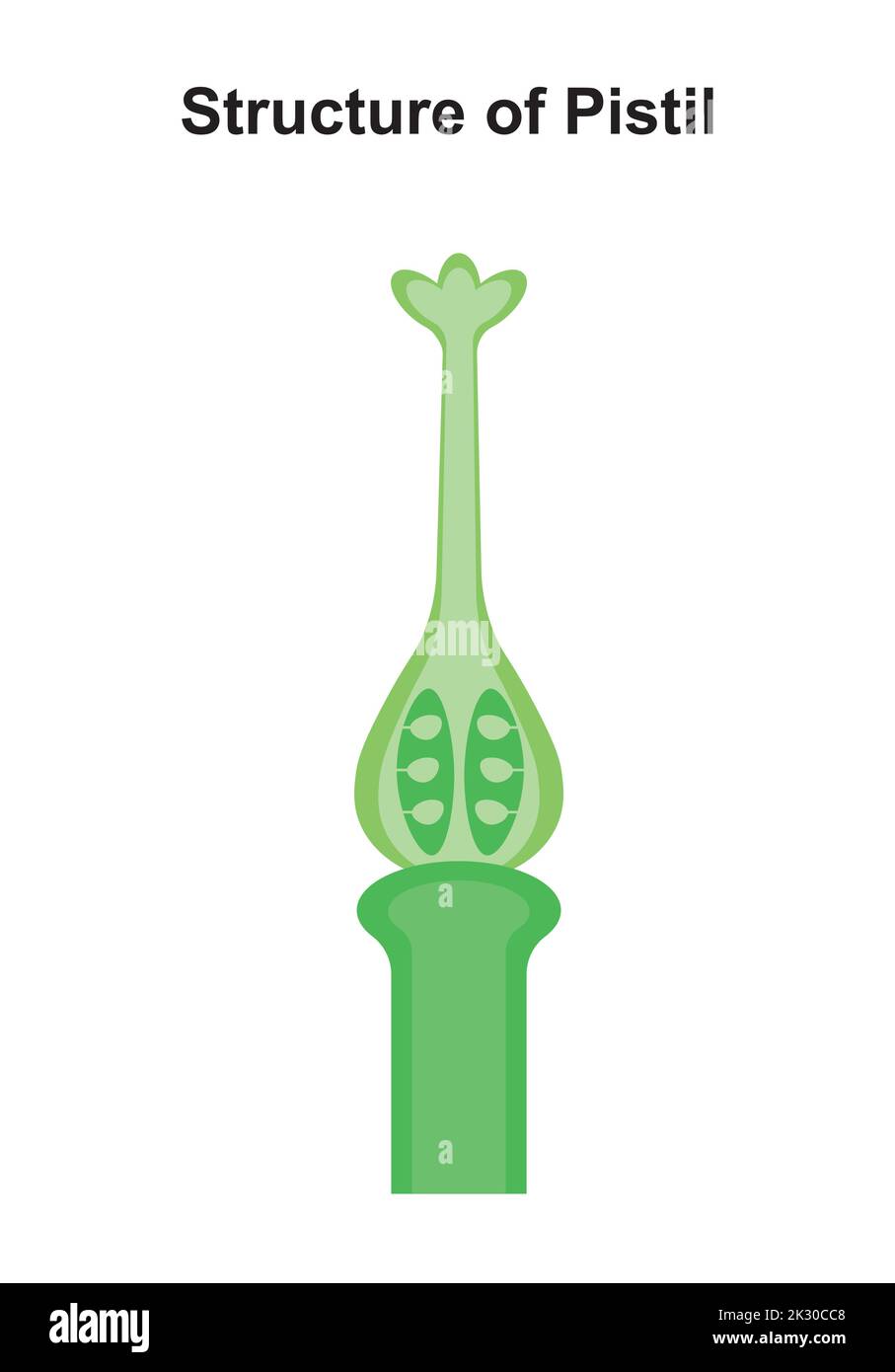 Scientific Designing of Pistil Structure. The Female Reproductive System in Plants. Colorful Symbols. Vector Illustration. Stock Vectorhttps://www.alamy.com/image-license-details/?v=1https://www.alamy.com/scientific-designing-of-pistil-structure-the-female-reproductive-system-in-plants-colorful-symbols-vector-illustration-image483744024.html
Scientific Designing of Pistil Structure. The Female Reproductive System in Plants. Colorful Symbols. Vector Illustration. Stock Vectorhttps://www.alamy.com/image-license-details/?v=1https://www.alamy.com/scientific-designing-of-pistil-structure-the-female-reproductive-system-in-plants-colorful-symbols-vector-illustration-image483744024.htmlRF2K30CC8–Scientific Designing of Pistil Structure. The Female Reproductive System in Plants. Colorful Symbols. Vector Illustration.
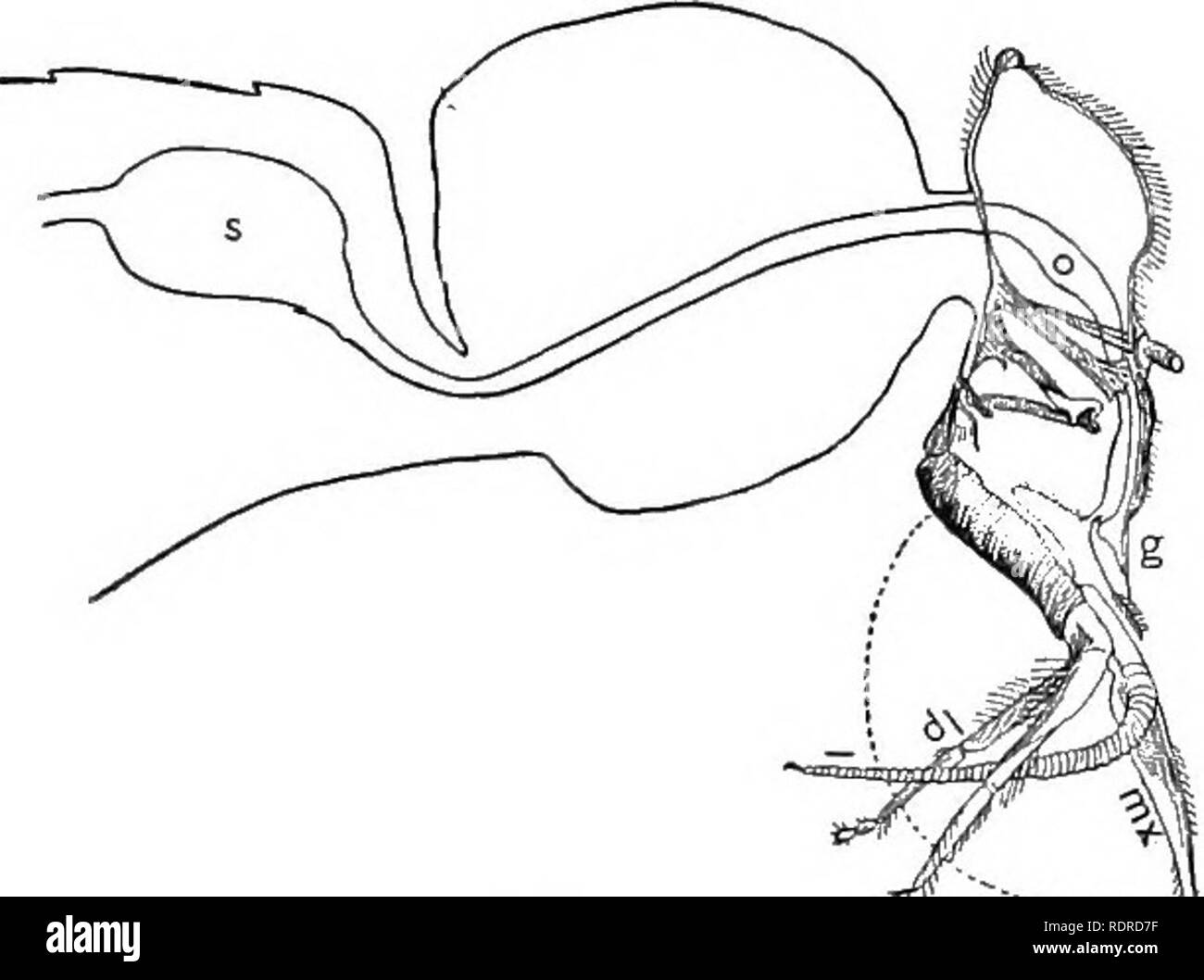 . Introduction to botany. Botany. i86 Introduction to Botany.. and by a contraction of the honey stomach empties its load of honey into the cells of the comb ; then, urged by an irresistible instinct, it flies forth to repeat the process again and again until darkness sets in. It can be seen at once that the industry of the bee places it in the fore- front of insects useful in the cross pollination of flowers. Fig. 101. /s has been said, bees Longitudinal diagram of the head and a part g^lgg collect Dollcn aS an of the body of the honey bee. g, the flap . over the mouth opening; mx, maxilla; Stock Photohttps://www.alamy.com/image-license-details/?v=1https://www.alamy.com/introduction-to-botany-botany-i86-introduction-to-botany-and-by-a-contraction-of-the-honey-stomach-empties-its-load-of-honey-into-the-cells-of-the-comb-then-urged-by-an-irresistible-instinct-it-flies-forth-to-repeat-the-process-again-and-again-until-darkness-sets-in-it-can-be-seen-at-once-that-the-industry-of-the-bee-places-it-in-the-fore-front-of-insects-useful-in-the-cross-pollination-of-flowers-fig-101-s-has-been-said-bees-longitudinal-diagram-of-the-head-and-a-part-glgg-collect-dollcn-as-an-of-the-body-of-the-honey-bee-g-the-flap-over-the-mouth-opening-mx-maxilla-image232240611.html
. Introduction to botany. Botany. i86 Introduction to Botany.. and by a contraction of the honey stomach empties its load of honey into the cells of the comb ; then, urged by an irresistible instinct, it flies forth to repeat the process again and again until darkness sets in. It can be seen at once that the industry of the bee places it in the fore- front of insects useful in the cross pollination of flowers. Fig. 101. /s has been said, bees Longitudinal diagram of the head and a part g^lgg collect Dollcn aS an of the body of the honey bee. g, the flap . over the mouth opening; mx, maxilla; Stock Photohttps://www.alamy.com/image-license-details/?v=1https://www.alamy.com/introduction-to-botany-botany-i86-introduction-to-botany-and-by-a-contraction-of-the-honey-stomach-empties-its-load-of-honey-into-the-cells-of-the-comb-then-urged-by-an-irresistible-instinct-it-flies-forth-to-repeat-the-process-again-and-again-until-darkness-sets-in-it-can-be-seen-at-once-that-the-industry-of-the-bee-places-it-in-the-fore-front-of-insects-useful-in-the-cross-pollination-of-flowers-fig-101-s-has-been-said-bees-longitudinal-diagram-of-the-head-and-a-part-glgg-collect-dollcn-as-an-of-the-body-of-the-honey-bee-g-the-flap-over-the-mouth-opening-mx-maxilla-image232240611.htmlRMRDRD7F–. Introduction to botany. Botany. i86 Introduction to Botany.. and by a contraction of the honey stomach empties its load of honey into the cells of the comb ; then, urged by an irresistible instinct, it flies forth to repeat the process again and again until darkness sets in. It can be seen at once that the industry of the bee places it in the fore- front of insects useful in the cross pollination of flowers. Fig. 101. /s has been said, bees Longitudinal diagram of the head and a part g^lgg collect Dollcn aS an of the body of the honey bee. g, the flap . over the mouth opening; mx, maxilla;
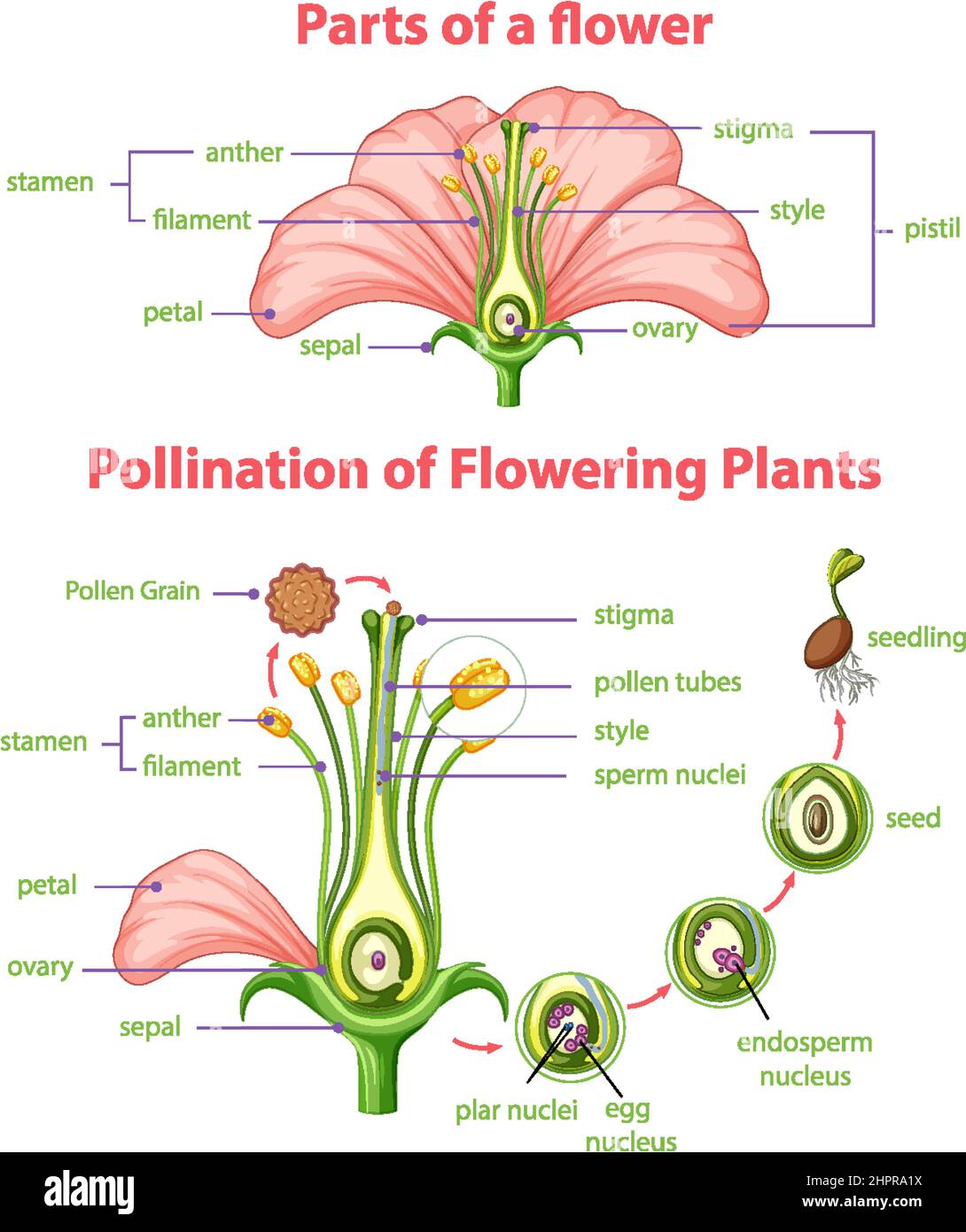 Diagram of pollination of flowering plants illustration Stock Vectorhttps://www.alamy.com/image-license-details/?v=1https://www.alamy.com/diagram-of-pollination-of-flowering-plants-illustration-image461504790.html
Diagram of pollination of flowering plants illustration Stock Vectorhttps://www.alamy.com/image-license-details/?v=1https://www.alamy.com/diagram-of-pollination-of-flowering-plants-illustration-image461504790.htmlRF2HPRA1X–Diagram of pollination of flowering plants illustration
 Sunflowers field Learza estate Near Estella, Navarre, Spain. Stock Photohttps://www.alamy.com/image-license-details/?v=1https://www.alamy.com/sunflowers-field-learza-estate-near-estella-navarre-spain-image601998916.html
Sunflowers field Learza estate Near Estella, Navarre, Spain. Stock Photohttps://www.alamy.com/image-license-details/?v=1https://www.alamy.com/sunflowers-field-learza-estate-near-estella-navarre-spain-image601998916.htmlRM2WYBBN8–Sunflowers field Learza estate Near Estella, Navarre, Spain.
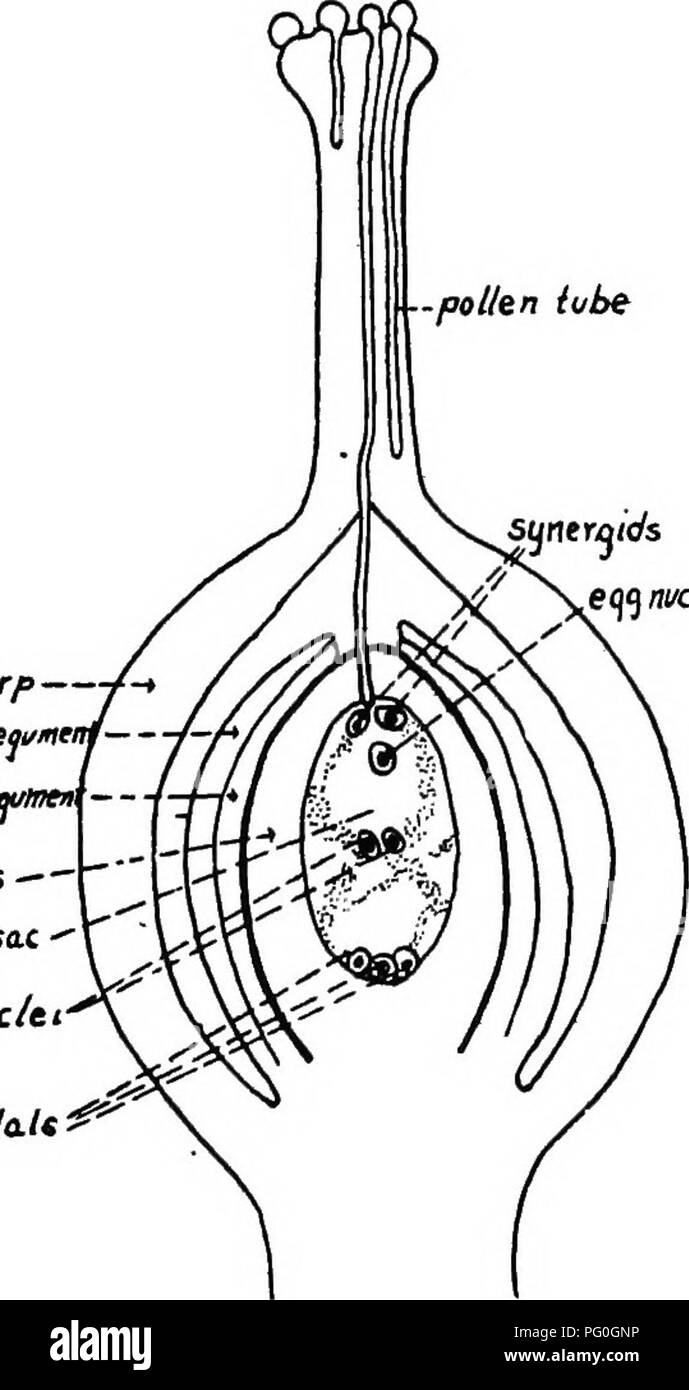 . The botany of crop plants : a text and reference book. Botany, Economic. FLOWERS SI about the relative positions in the embryo sac as shown in Fig. 23. Pollination.—This is a mechanical process in which pollen is transferred from an anther to a stigma. Pollen may be transferred from an anther to the stigma in the same flower. poUen iuhe eqg nucleus. Fig. 23.- pericarp—y-» oilier inltji/mnf— mnermhi nvciUvt—I tmbrno sac ' fmUrnvclti ^niipoic-lt -Diagram of a simple pistil as seen in lengthwise section showing a single ovule just prior to fertilization. This is termed autogamy or close pollina Stock Photohttps://www.alamy.com/image-license-details/?v=1https://www.alamy.com/the-botany-of-crop-plants-a-text-and-reference-book-botany-economic-flowers-si-about-the-relative-positions-in-the-embryo-sac-as-shown-in-fig-23-pollinationthis-is-a-mechanical-process-in-which-pollen-is-transferred-from-an-anther-to-a-stigma-pollen-may-be-transferred-from-an-anther-to-the-stigma-in-the-same-flower-pouen-iuhe-eqg-nucleus-fig-23-pericarpy-oilier-inltjimnf-mnermhi-nvciuvti-tmbrno-sac-fmurnvclti-niipoic-lt-diagram-of-a-simple-pistil-as-seen-in-lengthwise-section-showing-a-single-ovule-just-prior-to-fertilization-this-is-termed-autogamy-or-close-pollina-image216372066.html
. The botany of crop plants : a text and reference book. Botany, Economic. FLOWERS SI about the relative positions in the embryo sac as shown in Fig. 23. Pollination.—This is a mechanical process in which pollen is transferred from an anther to a stigma. Pollen may be transferred from an anther to the stigma in the same flower. poUen iuhe eqg nucleus. Fig. 23.- pericarp—y-» oilier inltji/mnf— mnermhi nvciUvt—I tmbrno sac ' fmUrnvclti ^niipoic-lt -Diagram of a simple pistil as seen in lengthwise section showing a single ovule just prior to fertilization. This is termed autogamy or close pollina Stock Photohttps://www.alamy.com/image-license-details/?v=1https://www.alamy.com/the-botany-of-crop-plants-a-text-and-reference-book-botany-economic-flowers-si-about-the-relative-positions-in-the-embryo-sac-as-shown-in-fig-23-pollinationthis-is-a-mechanical-process-in-which-pollen-is-transferred-from-an-anther-to-a-stigma-pollen-may-be-transferred-from-an-anther-to-the-stigma-in-the-same-flower-pouen-iuhe-eqg-nucleus-fig-23-pericarpy-oilier-inltjimnf-mnermhi-nvciuvti-tmbrno-sac-fmurnvclti-niipoic-lt-diagram-of-a-simple-pistil-as-seen-in-lengthwise-section-showing-a-single-ovule-just-prior-to-fertilization-this-is-termed-autogamy-or-close-pollina-image216372066.htmlRMPG0GNP–. The botany of crop plants : a text and reference book. Botany, Economic. FLOWERS SI about the relative positions in the embryo sac as shown in Fig. 23. Pollination.—This is a mechanical process in which pollen is transferred from an anther to a stigma. Pollen may be transferred from an anther to the stigma in the same flower. poUen iuhe eqg nucleus. Fig. 23.- pericarp—y-» oilier inltji/mnf— mnermhi nvciUvt—I tmbrno sac ' fmUrnvclti ^niipoic-lt -Diagram of a simple pistil as seen in lengthwise section showing a single ovule just prior to fertilization. This is termed autogamy or close pollina
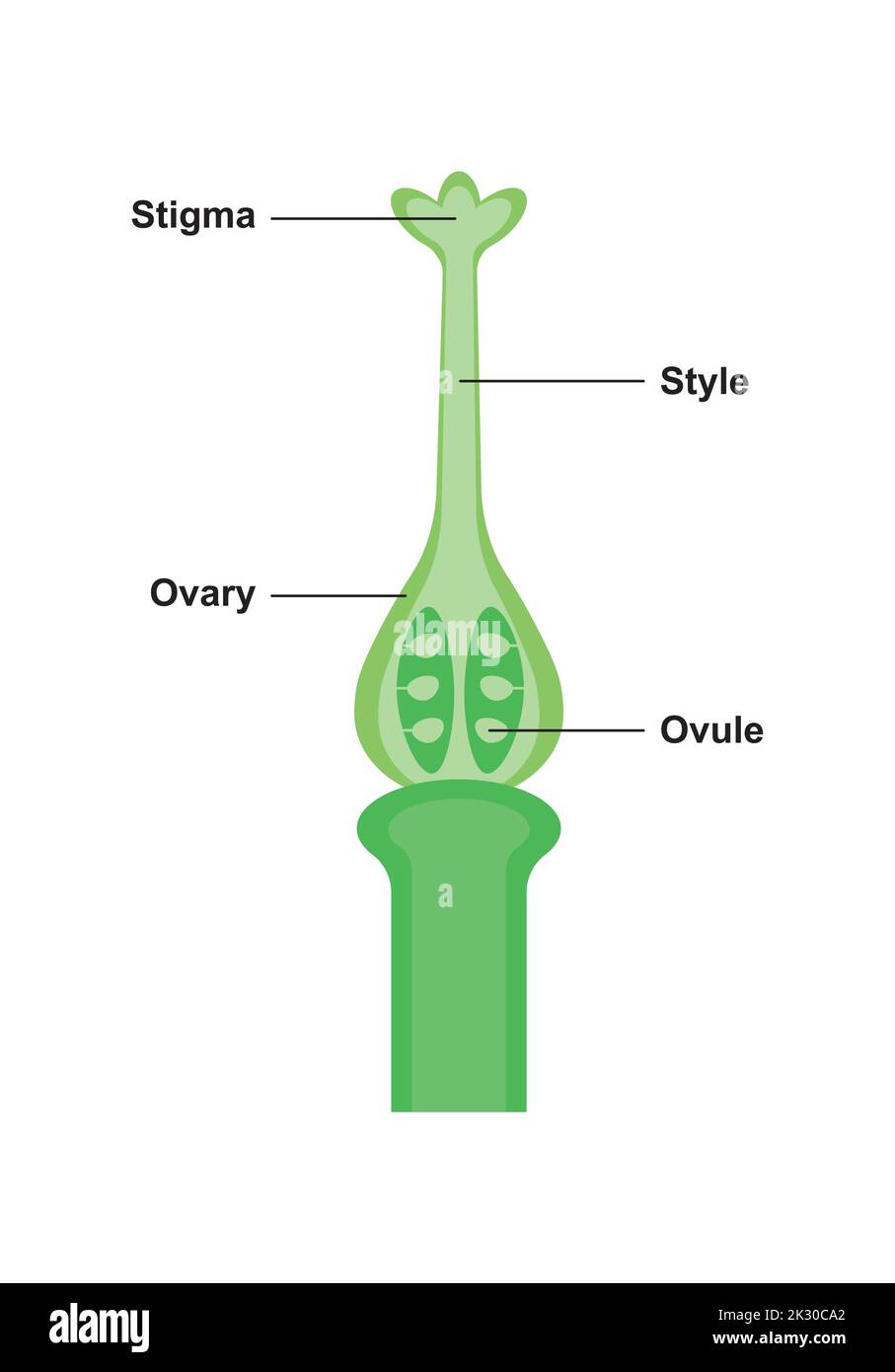 Scientific Designing of Pistil Structure. The Female Reproductive System in Plants. Colorful Symbols. Vector Illustration. Stock Vectorhttps://www.alamy.com/image-license-details/?v=1https://www.alamy.com/scientific-designing-of-pistil-structure-the-female-reproductive-system-in-plants-colorful-symbols-vector-illustration-image483743962.html
Scientific Designing of Pistil Structure. The Female Reproductive System in Plants. Colorful Symbols. Vector Illustration. Stock Vectorhttps://www.alamy.com/image-license-details/?v=1https://www.alamy.com/scientific-designing-of-pistil-structure-the-female-reproductive-system-in-plants-colorful-symbols-vector-illustration-image483743962.htmlRF2K30CA2–Scientific Designing of Pistil Structure. The Female Reproductive System in Plants. Colorful Symbols. Vector Illustration.
 . The botany of crop plants; a text and reference book. Botany, Economic. 372 BOTANY OF CROP PLANTS Pollination and Fertilization.^—The literature on this subject is extensive. Cross-poUination is the rule and self-pollination the exception in the apple and pear. Ex- periments have shown that the wind aids but little in cross- pollination, and that insects, chiefly the honey bee, are relatively more important. The bee is attracted to the flowers by the nectar which is produced rather abundantly.. Fig. 156.—Floral diagram of apple (Malus sylvestris). Note that the sta- mens are in three distinc Stock Photohttps://www.alamy.com/image-license-details/?v=1https://www.alamy.com/the-botany-of-crop-plants-a-text-and-reference-book-botany-economic-372-botany-of-crop-plants-pollination-and-fertilizationthe-literature-on-this-subject-is-extensive-cross-pouination-is-the-rule-and-self-pollination-the-exception-in-the-apple-and-pear-ex-periments-have-shown-that-the-wind-aids-but-little-in-cross-pollination-and-that-insects-chiefly-the-honey-bee-are-relatively-more-important-the-bee-is-attracted-to-the-flowers-by-the-nectar-which-is-produced-rather-abundantly-fig-156floral-diagram-of-apple-malus-sylvestris-note-that-the-sta-mens-are-in-three-distinc-image234384924.html
. The botany of crop plants; a text and reference book. Botany, Economic. 372 BOTANY OF CROP PLANTS Pollination and Fertilization.^—The literature on this subject is extensive. Cross-poUination is the rule and self-pollination the exception in the apple and pear. Ex- periments have shown that the wind aids but little in cross- pollination, and that insects, chiefly the honey bee, are relatively more important. The bee is attracted to the flowers by the nectar which is produced rather abundantly.. Fig. 156.—Floral diagram of apple (Malus sylvestris). Note that the sta- mens are in three distinc Stock Photohttps://www.alamy.com/image-license-details/?v=1https://www.alamy.com/the-botany-of-crop-plants-a-text-and-reference-book-botany-economic-372-botany-of-crop-plants-pollination-and-fertilizationthe-literature-on-this-subject-is-extensive-cross-pouination-is-the-rule-and-self-pollination-the-exception-in-the-apple-and-pear-ex-periments-have-shown-that-the-wind-aids-but-little-in-cross-pollination-and-that-insects-chiefly-the-honey-bee-are-relatively-more-important-the-bee-is-attracted-to-the-flowers-by-the-nectar-which-is-produced-rather-abundantly-fig-156floral-diagram-of-apple-malus-sylvestris-note-that-the-sta-mens-are-in-three-distinc-image234384924.htmlRMRH94A4–. The botany of crop plants; a text and reference book. Botany, Economic. 372 BOTANY OF CROP PLANTS Pollination and Fertilization.^—The literature on this subject is extensive. Cross-poUination is the rule and self-pollination the exception in the apple and pear. Ex- periments have shown that the wind aids but little in cross- pollination, and that insects, chiefly the honey bee, are relatively more important. The bee is attracted to the flowers by the nectar which is produced rather abundantly.. Fig. 156.—Floral diagram of apple (Malus sylvestris). Note that the sta- mens are in three distinc
 Diagram of pollination of flowering plants illustration Stock Vectorhttps://www.alamy.com/image-license-details/?v=1https://www.alamy.com/diagram-of-pollination-of-flowering-plants-illustration-image462057664.html
Diagram of pollination of flowering plants illustration Stock Vectorhttps://www.alamy.com/image-license-details/?v=1https://www.alamy.com/diagram-of-pollination-of-flowering-plants-illustration-image462057664.htmlRF2HRMF7C–Diagram of pollination of flowering plants illustration
 Bees hovering over flowers. Date: 18th century. Origin: China. Period: Qing dynasty. Ink and color on silk. Museum: Freer Gallery of Art and Arthur M. Sackler Gallery. Stock Photohttps://www.alamy.com/image-license-details/?v=1https://www.alamy.com/bees-hovering-over-flowers-date-18th-century-origin-china-period-qing-dynasty-ink-and-color-on-silk-museum-freer-gallery-of-art-and-arthur-m-sackler-gallery-image554739572.html
Bees hovering over flowers. Date: 18th century. Origin: China. Period: Qing dynasty. Ink and color on silk. Museum: Freer Gallery of Art and Arthur M. Sackler Gallery. Stock Photohttps://www.alamy.com/image-license-details/?v=1https://www.alamy.com/bees-hovering-over-flowers-date-18th-century-origin-china-period-qing-dynasty-ink-and-color-on-silk-museum-freer-gallery-of-art-and-arthur-m-sackler-gallery-image554739572.htmlRM2R6EFYG–Bees hovering over flowers. Date: 18th century. Origin: China. Period: Qing dynasty. Ink and color on silk. Museum: Freer Gallery of Art and Arthur M. Sackler Gallery.
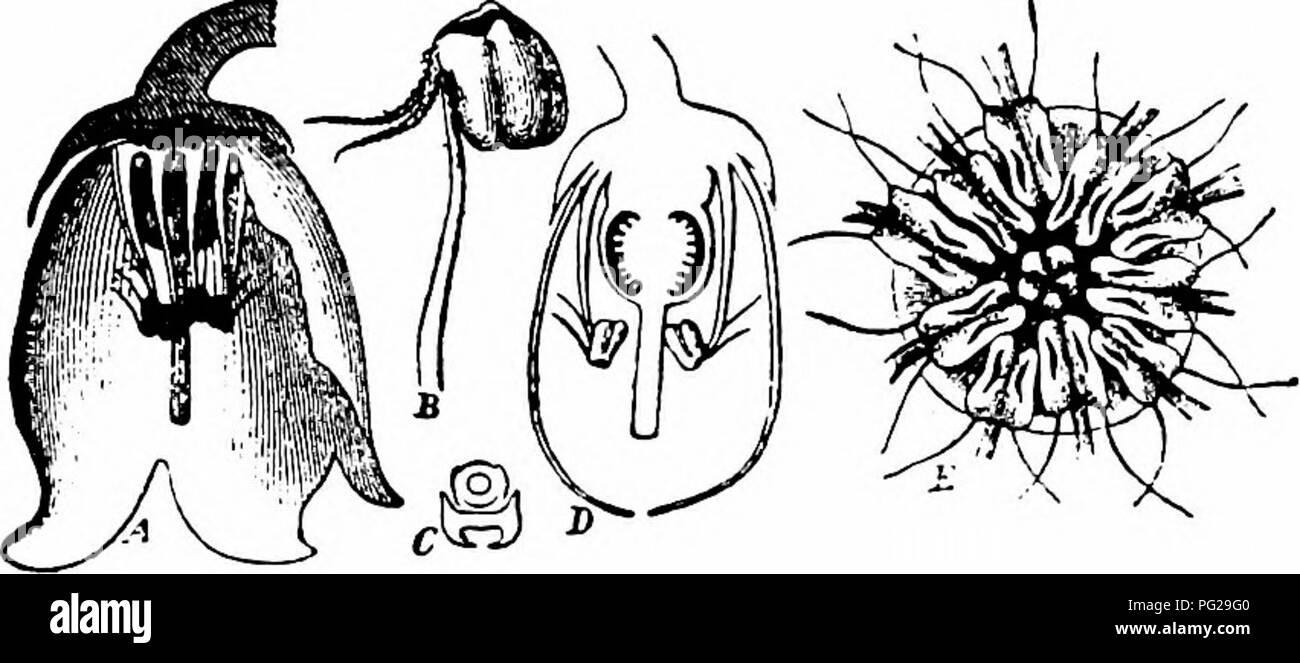 . Handbook of flower pollination : based upon Hermann MuÌller's work 'The fertilisation of flowers by insects' . Fertilization of plants. 36 ANGIOSPERMAEâDICOTYLEDONES. Fig. 232. Cassiope tetragona, D. Don (after E. Wanning). A. Diagram of a flower seen from the side (x 4), B. A stamen. C- Diagrammatic plan of the same. D. Longitudinal section of a flower (x 4). E. Stamens and stigma seen fn m below (â 10). 522. Cassiope D. Don. Bell-shaped pendulous flowers, with nectar secreted by yellow nectaries at the base of the ovary. 1760. C. tetragona D. Don. (Warming, Bot. Tids., Kjobenhavn, xv, 1885 Stock Photohttps://www.alamy.com/image-license-details/?v=1https://www.alamy.com/handbook-of-flower-pollination-based-upon-hermann-mullers-work-the-fertilisation-of-flowers-by-insects-fertilization-of-plants-36-angiospermaedicotyledones-fig-232-cassiope-tetragona-d-don-after-e-wanning-a-diagram-of-a-flower-seen-from-the-side-x-4-b-a-stamen-c-diagrammatic-plan-of-the-same-d-longitudinal-section-of-a-flower-x-4-e-stamens-and-stigma-seen-fn-m-below-10-522-cassiope-d-don-bell-shaped-pendulous-flowers-with-nectar-secreted-by-yellow-nectaries-at-the-base-of-the-ovary-1760-c-tetragona-d-don-warming-bot-tids-kjobenhavn-xv-1885-image216410320.html
. Handbook of flower pollination : based upon Hermann MuÌller's work 'The fertilisation of flowers by insects' . Fertilization of plants. 36 ANGIOSPERMAEâDICOTYLEDONES. Fig. 232. Cassiope tetragona, D. Don (after E. Wanning). A. Diagram of a flower seen from the side (x 4), B. A stamen. C- Diagrammatic plan of the same. D. Longitudinal section of a flower (x 4). E. Stamens and stigma seen fn m below (â 10). 522. Cassiope D. Don. Bell-shaped pendulous flowers, with nectar secreted by yellow nectaries at the base of the ovary. 1760. C. tetragona D. Don. (Warming, Bot. Tids., Kjobenhavn, xv, 1885 Stock Photohttps://www.alamy.com/image-license-details/?v=1https://www.alamy.com/handbook-of-flower-pollination-based-upon-hermann-mullers-work-the-fertilisation-of-flowers-by-insects-fertilization-of-plants-36-angiospermaedicotyledones-fig-232-cassiope-tetragona-d-don-after-e-wanning-a-diagram-of-a-flower-seen-from-the-side-x-4-b-a-stamen-c-diagrammatic-plan-of-the-same-d-longitudinal-section-of-a-flower-x-4-e-stamens-and-stigma-seen-fn-m-below-10-522-cassiope-d-don-bell-shaped-pendulous-flowers-with-nectar-secreted-by-yellow-nectaries-at-the-base-of-the-ovary-1760-c-tetragona-d-don-warming-bot-tids-kjobenhavn-xv-1885-image216410320.htmlRMPG29G0–. Handbook of flower pollination : based upon Hermann MuÌller's work 'The fertilisation of flowers by insects' . Fertilization of plants. 36 ANGIOSPERMAEâDICOTYLEDONES. Fig. 232. Cassiope tetragona, D. Don (after E. Wanning). A. Diagram of a flower seen from the side (x 4), B. A stamen. C- Diagrammatic plan of the same. D. Longitudinal section of a flower (x 4). E. Stamens and stigma seen fn m below (â 10). 522. Cassiope D. Don. Bell-shaped pendulous flowers, with nectar secreted by yellow nectaries at the base of the ovary. 1760. C. tetragona D. Don. (Warming, Bot. Tids., Kjobenhavn, xv, 1885
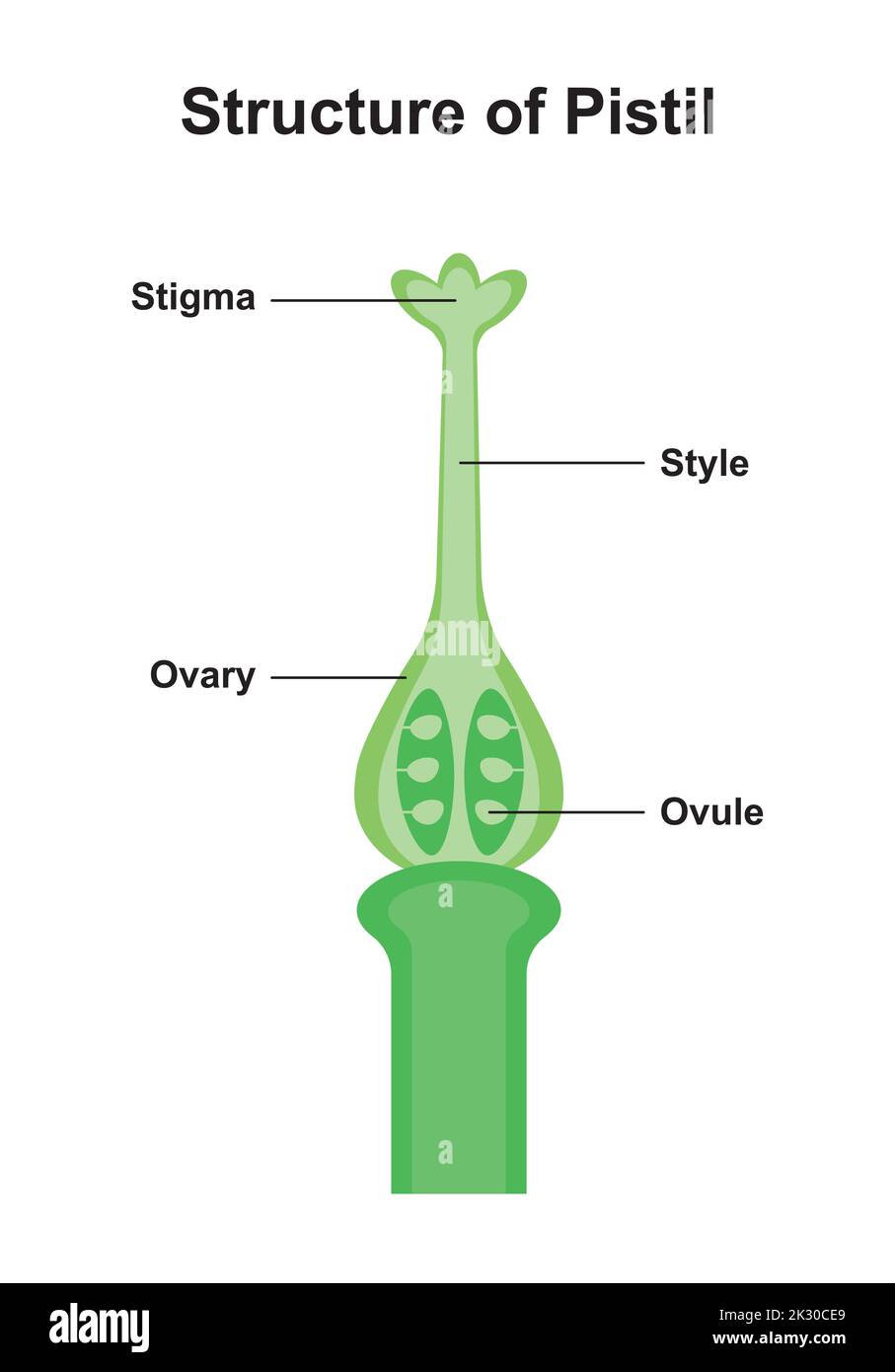 Scientific Designing of Pistil Structure. The Female Reproductive System in Plants. Colorful Symbols. Vector Illustration. Stock Vectorhttps://www.alamy.com/image-license-details/?v=1https://www.alamy.com/scientific-designing-of-pistil-structure-the-female-reproductive-system-in-plants-colorful-symbols-vector-illustration-image483744081.html
Scientific Designing of Pistil Structure. The Female Reproductive System in Plants. Colorful Symbols. Vector Illustration. Stock Vectorhttps://www.alamy.com/image-license-details/?v=1https://www.alamy.com/scientific-designing-of-pistil-structure-the-female-reproductive-system-in-plants-colorful-symbols-vector-illustration-image483744081.htmlRF2K30CE9–Scientific Designing of Pistil Structure. The Female Reproductive System in Plants. Colorful Symbols. Vector Illustration.
 . The botany of crop plants; a text and reference book. Botany, Economic. 372 BOTANY OF CROP PLANTS Pollination and Fertilization.—The literature on this subject is extensive. Cross-pollination is the rule and self-polHnation the exception in the apple and pear. Ex- periments have shown that the wind aids but Httle in cross- polhnation, and that insects, chiefly the honey bee, are relatively more important The bee is attracted to the flowers by the nectar which is produced rather abundantly.. Fig. 156.—Floral diagram of apple (Malus sylvestris). Note that the sta- mens are in three distinct wh Stock Photohttps://www.alamy.com/image-license-details/?v=1https://www.alamy.com/the-botany-of-crop-plants-a-text-and-reference-book-botany-economic-372-botany-of-crop-plants-pollination-and-fertilizationthe-literature-on-this-subject-is-extensive-cross-pollination-is-the-rule-and-self-polhnation-the-exception-in-the-apple-and-pear-ex-periments-have-shown-that-the-wind-aids-but-httle-in-cross-polhnation-and-that-insects-chiefly-the-honey-bee-are-relatively-more-important-the-bee-is-attracted-to-the-flowers-by-the-nectar-which-is-produced-rather-abundantly-fig-156floral-diagram-of-apple-malus-sylvestris-note-that-the-sta-mens-are-in-three-distinct-wh-image234385318.html
. The botany of crop plants; a text and reference book. Botany, Economic. 372 BOTANY OF CROP PLANTS Pollination and Fertilization.—The literature on this subject is extensive. Cross-pollination is the rule and self-polHnation the exception in the apple and pear. Ex- periments have shown that the wind aids but Httle in cross- polhnation, and that insects, chiefly the honey bee, are relatively more important The bee is attracted to the flowers by the nectar which is produced rather abundantly.. Fig. 156.—Floral diagram of apple (Malus sylvestris). Note that the sta- mens are in three distinct wh Stock Photohttps://www.alamy.com/image-license-details/?v=1https://www.alamy.com/the-botany-of-crop-plants-a-text-and-reference-book-botany-economic-372-botany-of-crop-plants-pollination-and-fertilizationthe-literature-on-this-subject-is-extensive-cross-pollination-is-the-rule-and-self-polhnation-the-exception-in-the-apple-and-pear-ex-periments-have-shown-that-the-wind-aids-but-httle-in-cross-polhnation-and-that-insects-chiefly-the-honey-bee-are-relatively-more-important-the-bee-is-attracted-to-the-flowers-by-the-nectar-which-is-produced-rather-abundantly-fig-156floral-diagram-of-apple-malus-sylvestris-note-that-the-sta-mens-are-in-three-distinct-wh-image234385318.htmlRMRH94T6–. The botany of crop plants; a text and reference book. Botany, Economic. 372 BOTANY OF CROP PLANTS Pollination and Fertilization.—The literature on this subject is extensive. Cross-pollination is the rule and self-polHnation the exception in the apple and pear. Ex- periments have shown that the wind aids but Httle in cross- polhnation, and that insects, chiefly the honey bee, are relatively more important The bee is attracted to the flowers by the nectar which is produced rather abundantly.. Fig. 156.—Floral diagram of apple (Malus sylvestris). Note that the sta- mens are in three distinct wh
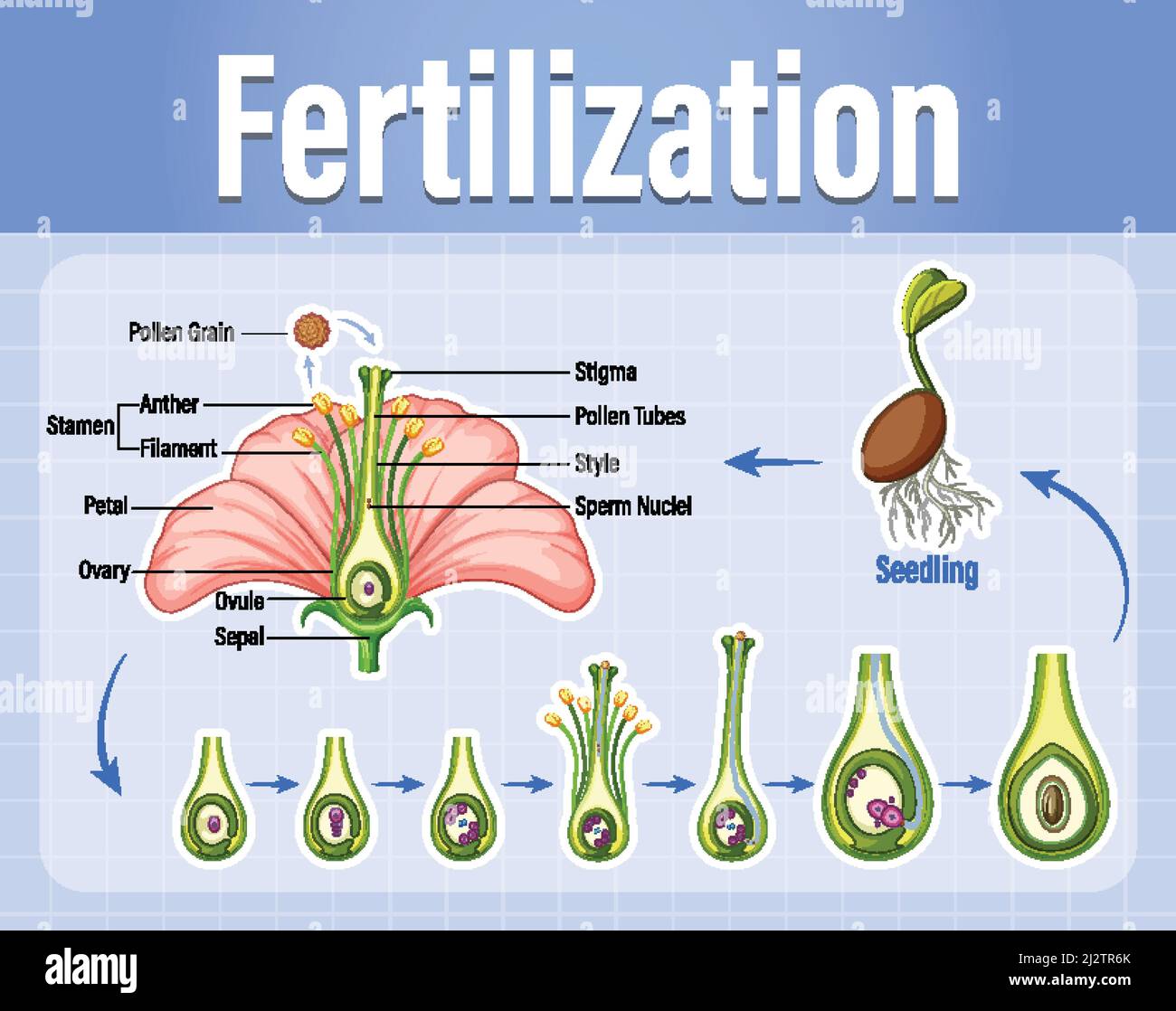 Diagram of pollination of flowering plants illustration Stock Vectorhttps://www.alamy.com/image-license-details/?v=1https://www.alamy.com/diagram-of-pollination-of-flowering-plants-illustration-image466454315.html
Diagram of pollination of flowering plants illustration Stock Vectorhttps://www.alamy.com/image-license-details/?v=1https://www.alamy.com/diagram-of-pollination-of-flowering-plants-illustration-image466454315.htmlRF2J2TR6K–Diagram of pollination of flowering plants illustration
 . Handbook of flower pollination : based upon Hermann MuÌller's work 'The fertilisation of flowers by insects' . Fertilization of plants. Fig. 232. Cassiope tetragona, D. Don (after E. Wanning). A. Diagram of a flower seen from the side (x 4), B. A stamen. C- Diagrammatic plan of the same. D. Longitudinal section of a flower (x 4). E. Stamens and stigma seen fn m below (â 10). 522. Cassiope D. Don. Bell-shaped pendulous flowers, with nectar secreted by yellow nectaries at the base of the ovary. 1760. C. tetragona D. Don. (Warming, Bot. Tids., Kjobenhavn, xv, 1885, pp. 25-9.)âWarming thinks thi Stock Photohttps://www.alamy.com/image-license-details/?v=1https://www.alamy.com/handbook-of-flower-pollination-based-upon-hermann-mullers-work-the-fertilisation-of-flowers-by-insects-fertilization-of-plants-fig-232-cassiope-tetragona-d-don-after-e-wanning-a-diagram-of-a-flower-seen-from-the-side-x-4-b-a-stamen-c-diagrammatic-plan-of-the-same-d-longitudinal-section-of-a-flower-x-4-e-stamens-and-stigma-seen-fn-m-below-10-522-cassiope-d-don-bell-shaped-pendulous-flowers-with-nectar-secreted-by-yellow-nectaries-at-the-base-of-the-ovary-1760-c-tetragona-d-don-warming-bot-tids-kjobenhavn-xv-1885-pp-25-9warming-thinks-thi-image216410312.html
. Handbook of flower pollination : based upon Hermann MuÌller's work 'The fertilisation of flowers by insects' . Fertilization of plants. Fig. 232. Cassiope tetragona, D. Don (after E. Wanning). A. Diagram of a flower seen from the side (x 4), B. A stamen. C- Diagrammatic plan of the same. D. Longitudinal section of a flower (x 4). E. Stamens and stigma seen fn m below (â 10). 522. Cassiope D. Don. Bell-shaped pendulous flowers, with nectar secreted by yellow nectaries at the base of the ovary. 1760. C. tetragona D. Don. (Warming, Bot. Tids., Kjobenhavn, xv, 1885, pp. 25-9.)âWarming thinks thi Stock Photohttps://www.alamy.com/image-license-details/?v=1https://www.alamy.com/handbook-of-flower-pollination-based-upon-hermann-mullers-work-the-fertilisation-of-flowers-by-insects-fertilization-of-plants-fig-232-cassiope-tetragona-d-don-after-e-wanning-a-diagram-of-a-flower-seen-from-the-side-x-4-b-a-stamen-c-diagrammatic-plan-of-the-same-d-longitudinal-section-of-a-flower-x-4-e-stamens-and-stigma-seen-fn-m-below-10-522-cassiope-d-don-bell-shaped-pendulous-flowers-with-nectar-secreted-by-yellow-nectaries-at-the-base-of-the-ovary-1760-c-tetragona-d-don-warming-bot-tids-kjobenhavn-xv-1885-pp-25-9warming-thinks-thi-image216410312.htmlRMPG29FM–. Handbook of flower pollination : based upon Hermann MuÌller's work 'The fertilisation of flowers by insects' . Fertilization of plants. Fig. 232. Cassiope tetragona, D. Don (after E. Wanning). A. Diagram of a flower seen from the side (x 4), B. A stamen. C- Diagrammatic plan of the same. D. Longitudinal section of a flower (x 4). E. Stamens and stigma seen fn m below (â 10). 522. Cassiope D. Don. Bell-shaped pendulous flowers, with nectar secreted by yellow nectaries at the base of the ovary. 1760. C. tetragona D. Don. (Warming, Bot. Tids., Kjobenhavn, xv, 1885, pp. 25-9.)âWarming thinks thi
 . Introduction to botany. Botany. and by a contraction of the honey stomach empties its load of honey into the cells of the comb ; then, urged by an irresistible instinct, it flies forth to repeat the process again and again until darkness sets in. It can be seen at once that the industry of the bee places it in the fore- front of insects useful in the cross pollination of flowers. Fig. 101. /s has been said, bees Longitudinal diagram of the head and a part g^lgg collect Dollcn aS an of the body of the honey bee. g, the flap . over the mouth opening; mx, maxilla; important food for them- //, Stock Photohttps://www.alamy.com/image-license-details/?v=1https://www.alamy.com/introduction-to-botany-botany-and-by-a-contraction-of-the-honey-stomach-empties-its-load-of-honey-into-the-cells-of-the-comb-then-urged-by-an-irresistible-instinct-it-flies-forth-to-repeat-the-process-again-and-again-until-darkness-sets-in-it-can-be-seen-at-once-that-the-industry-of-the-bee-places-it-in-the-fore-front-of-insects-useful-in-the-cross-pollination-of-flowers-fig-101-s-has-been-said-bees-longitudinal-diagram-of-the-head-and-a-part-glgg-collect-dollcn-as-an-of-the-body-of-the-honey-bee-g-the-flap-over-the-mouth-opening-mx-maxilla-important-food-for-them-image232240606.html
. Introduction to botany. Botany. and by a contraction of the honey stomach empties its load of honey into the cells of the comb ; then, urged by an irresistible instinct, it flies forth to repeat the process again and again until darkness sets in. It can be seen at once that the industry of the bee places it in the fore- front of insects useful in the cross pollination of flowers. Fig. 101. /s has been said, bees Longitudinal diagram of the head and a part g^lgg collect Dollcn aS an of the body of the honey bee. g, the flap . over the mouth opening; mx, maxilla; important food for them- //, Stock Photohttps://www.alamy.com/image-license-details/?v=1https://www.alamy.com/introduction-to-botany-botany-and-by-a-contraction-of-the-honey-stomach-empties-its-load-of-honey-into-the-cells-of-the-comb-then-urged-by-an-irresistible-instinct-it-flies-forth-to-repeat-the-process-again-and-again-until-darkness-sets-in-it-can-be-seen-at-once-that-the-industry-of-the-bee-places-it-in-the-fore-front-of-insects-useful-in-the-cross-pollination-of-flowers-fig-101-s-has-been-said-bees-longitudinal-diagram-of-the-head-and-a-part-glgg-collect-dollcn-as-an-of-the-body-of-the-honey-bee-g-the-flap-over-the-mouth-opening-mx-maxilla-important-food-for-them-image232240606.htmlRMRDRD7A–. Introduction to botany. Botany. and by a contraction of the honey stomach empties its load of honey into the cells of the comb ; then, urged by an irresistible instinct, it flies forth to repeat the process again and again until darkness sets in. It can be seen at once that the industry of the bee places it in the fore- front of insects useful in the cross pollination of flowers. Fig. 101. /s has been said, bees Longitudinal diagram of the head and a part g^lgg collect Dollcn aS an of the body of the honey bee. g, the flap . over the mouth opening; mx, maxilla; important food for them- //,
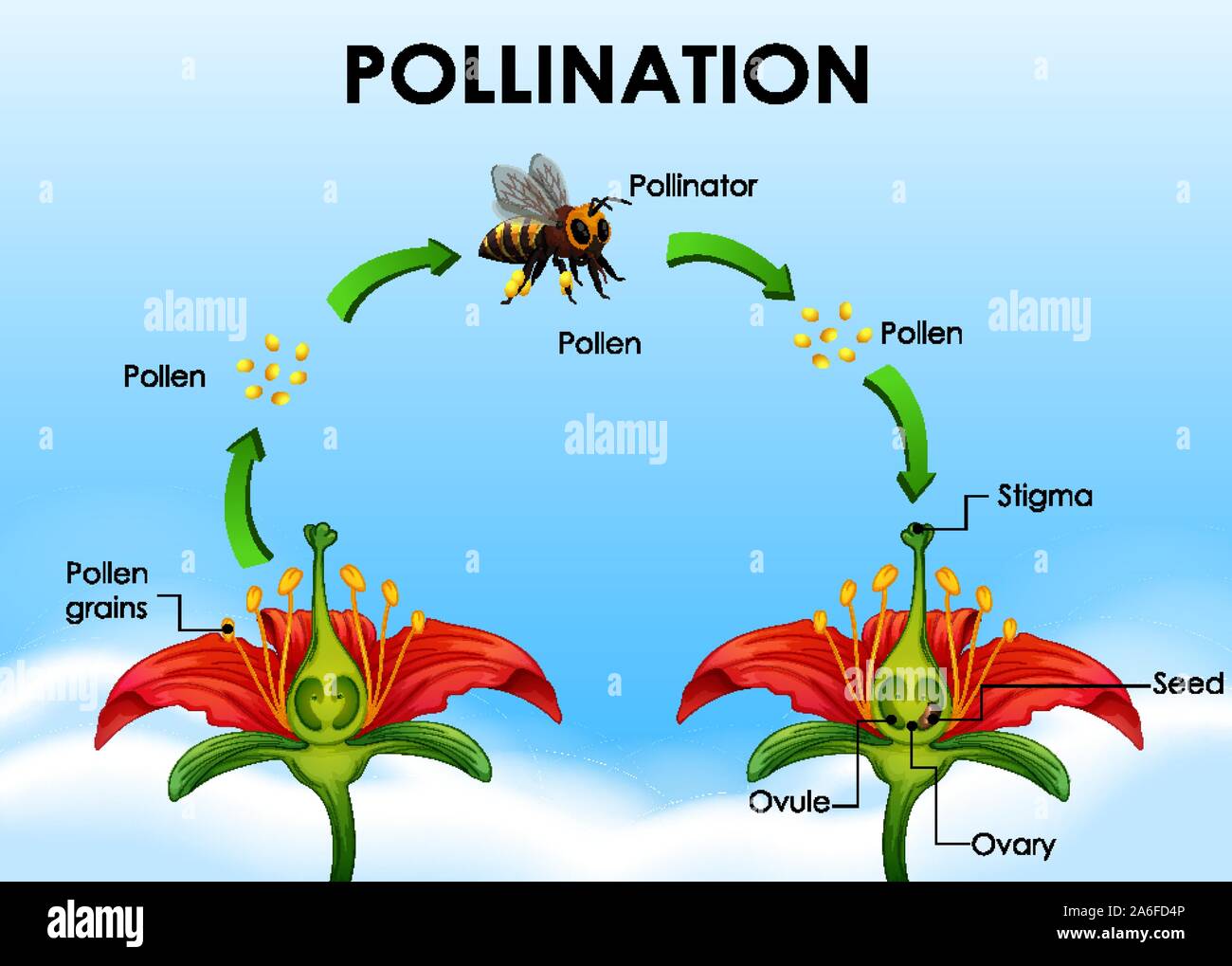 Diagram showing pollination cycle illustration Stock Vectorhttps://www.alamy.com/image-license-details/?v=1https://www.alamy.com/diagram-showing-pollination-cycle-illustration-image331024534.html
Diagram showing pollination cycle illustration Stock Vectorhttps://www.alamy.com/image-license-details/?v=1https://www.alamy.com/diagram-showing-pollination-cycle-illustration-image331024534.htmlRF2A6FD4P–Diagram showing pollination cycle illustration
 . Handbook of flower pollination : based upon Hermann Mu?ller's work 'The fertilisation of flowers by insects' . Fertilization of plants. Fig. 250. Cydavicti laii/oliiwi, Siblh. ei Sju. (from Kerner, after Ascher- son). A. Diagram of the parts of the flower at the beginning of anthesis. The direction in which the pollen falls is far removed from the stigma. B. Do. at time of complete development. By further bending of the peduncle the line of fall of the pollen is brought nearer the stigma. C. Do. at the end of anthesis. The stigma is now in the line of fall of the pollen, a, peduncle; b, cone Stock Photohttps://www.alamy.com/image-license-details/?v=1https://www.alamy.com/handbook-of-flower-pollination-based-upon-hermann-mullers-work-the-fertilisation-of-flowers-by-insects-fertilization-of-plants-fig-250-cydavicti-laiioliiwi-siblh-ei-sju-from-kerner-after-ascher-son-a-diagram-of-the-parts-of-the-flower-at-the-beginning-of-anthesis-the-direction-in-which-the-pollen-falls-is-far-removed-from-the-stigma-b-do-at-time-of-complete-development-by-further-bending-of-the-peduncle-the-line-of-fall-of-the-pollen-is-brought-nearer-the-stigma-c-do-at-the-end-of-anthesis-the-stigma-is-now-in-the-line-of-fall-of-the-pollen-a-peduncle-b-cone-image232054281.html
. Handbook of flower pollination : based upon Hermann Mu?ller's work 'The fertilisation of flowers by insects' . Fertilization of plants. Fig. 250. Cydavicti laii/oliiwi, Siblh. ei Sju. (from Kerner, after Ascher- son). A. Diagram of the parts of the flower at the beginning of anthesis. The direction in which the pollen falls is far removed from the stigma. B. Do. at time of complete development. By further bending of the peduncle the line of fall of the pollen is brought nearer the stigma. C. Do. at the end of anthesis. The stigma is now in the line of fall of the pollen, a, peduncle; b, cone Stock Photohttps://www.alamy.com/image-license-details/?v=1https://www.alamy.com/handbook-of-flower-pollination-based-upon-hermann-mullers-work-the-fertilisation-of-flowers-by-insects-fertilization-of-plants-fig-250-cydavicti-laiioliiwi-siblh-ei-sju-from-kerner-after-ascher-son-a-diagram-of-the-parts-of-the-flower-at-the-beginning-of-anthesis-the-direction-in-which-the-pollen-falls-is-far-removed-from-the-stigma-b-do-at-time-of-complete-development-by-further-bending-of-the-peduncle-the-line-of-fall-of-the-pollen-is-brought-nearer-the-stigma-c-do-at-the-end-of-anthesis-the-stigma-is-now-in-the-line-of-fall-of-the-pollen-a-peduncle-b-cone-image232054281.htmlRMRDEYGW–. Handbook of flower pollination : based upon Hermann Mu?ller's work 'The fertilisation of flowers by insects' . Fertilization of plants. Fig. 250. Cydavicti laii/oliiwi, Siblh. ei Sju. (from Kerner, after Ascher- son). A. Diagram of the parts of the flower at the beginning of anthesis. The direction in which the pollen falls is far removed from the stigma. B. Do. at time of complete development. By further bending of the peduncle the line of fall of the pollen is brought nearer the stigma. C. Do. at the end of anthesis. The stigma is now in the line of fall of the pollen, a, peduncle; b, cone
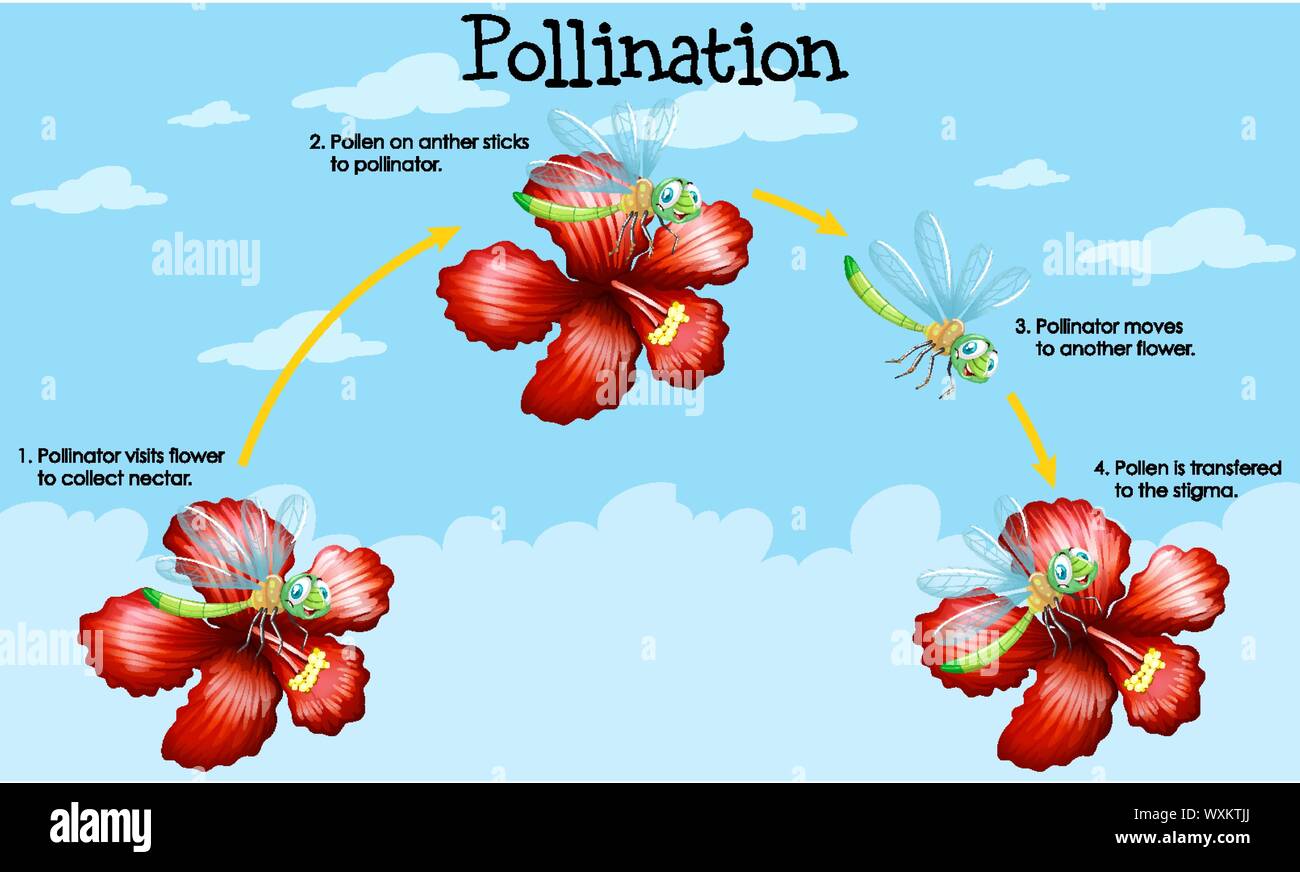 Diagram showing pollination with flowers and bugs illustration Stock Vectorhttps://www.alamy.com/image-license-details/?v=1https://www.alamy.com/diagram-showing-pollination-with-flowers-and-bugs-illustration-image274573002.html
Diagram showing pollination with flowers and bugs illustration Stock Vectorhttps://www.alamy.com/image-license-details/?v=1https://www.alamy.com/diagram-showing-pollination-with-flowers-and-bugs-illustration-image274573002.htmlRFWXKTJJ–Diagram showing pollination with flowers and bugs illustration
 . The botany of crop plants : a text and reference book. Botany, Economic. 372 BOTANY OF CROP PLANTS Pollination and. Fertilization.—The literature on this subject is extensive. Cross-polUnation is the rule and self-polhnation the exception in the apple and pear. Ex- periments have shown that the wind aids but little in cross- pollination, and that insects, chiefly the honey bee, are relatively more important. The bee is attracted to the flowers by the nectar which is produced rather abundantly.. Fig. 156.- - Floral diagram of apple (Malus sylvestris). Note that the sta- mens are in three dist Stock Photohttps://www.alamy.com/image-license-details/?v=1https://www.alamy.com/the-botany-of-crop-plants-a-text-and-reference-book-botany-economic-372-botany-of-crop-plants-pollination-and-fertilizationthe-literature-on-this-subject-is-extensive-cross-polunation-is-the-rule-and-self-polhnation-the-exception-in-the-apple-and-pear-ex-periments-have-shown-that-the-wind-aids-but-little-in-cross-pollination-and-that-insects-chiefly-the-honey-bee-are-relatively-more-important-the-bee-is-attracted-to-the-flowers-by-the-nectar-which-is-produced-rather-abundantly-fig-156-floral-diagram-of-apple-malus-sylvestris-note-that-the-sta-mens-are-in-three-dist-image231978641.html
. The botany of crop plants : a text and reference book. Botany, Economic. 372 BOTANY OF CROP PLANTS Pollination and. Fertilization.—The literature on this subject is extensive. Cross-polUnation is the rule and self-polhnation the exception in the apple and pear. Ex- periments have shown that the wind aids but little in cross- pollination, and that insects, chiefly the honey bee, are relatively more important. The bee is attracted to the flowers by the nectar which is produced rather abundantly.. Fig. 156.- - Floral diagram of apple (Malus sylvestris). Note that the sta- mens are in three dist Stock Photohttps://www.alamy.com/image-license-details/?v=1https://www.alamy.com/the-botany-of-crop-plants-a-text-and-reference-book-botany-economic-372-botany-of-crop-plants-pollination-and-fertilizationthe-literature-on-this-subject-is-extensive-cross-polunation-is-the-rule-and-self-polhnation-the-exception-in-the-apple-and-pear-ex-periments-have-shown-that-the-wind-aids-but-little-in-cross-pollination-and-that-insects-chiefly-the-honey-bee-are-relatively-more-important-the-bee-is-attracted-to-the-flowers-by-the-nectar-which-is-produced-rather-abundantly-fig-156-floral-diagram-of-apple-malus-sylvestris-note-that-the-sta-mens-are-in-three-dist-image231978641.htmlRMRDBF3D–. The botany of crop plants : a text and reference book. Botany, Economic. 372 BOTANY OF CROP PLANTS Pollination and. Fertilization.—The literature on this subject is extensive. Cross-polUnation is the rule and self-polhnation the exception in the apple and pear. Ex- periments have shown that the wind aids but little in cross- pollination, and that insects, chiefly the honey bee, are relatively more important. The bee is attracted to the flowers by the nectar which is produced rather abundantly.. Fig. 156.- - Floral diagram of apple (Malus sylvestris). Note that the sta- mens are in three dist
